The ultimate 10 day Switzerland itinerary
Some links in this post are affiliate links, which means I earn a small commission if you book through them, at no extra cost to you. This support helps keep this site running, the suitcase wheels spinning, and lets me keep writing ultra-detailed travel guides that are free for you to use to plan your next adventure.
Trying to plan ten days in Switzerland for your next Europe trip? This epic 10 day Switzerland itinerary will show you the best places to visit, things to do, how to get around, where to stay and everything else you need to bring your Switzerland dreams to life.
If you’re currently dealing with too many tabs of travel blogs, forums and YouTube videos trying to piece together the ultimate 10 day Switzerland itinerary for your upcoming trip, I totally know the feeling.
Switzerland is an absolute dream, with charming alpine villages, sky-high peaks and glossy lakes to discover, but turning a dream into a doable itinerary is easier said than done. Between choosing from the jaw-dropping sights and figuring out the spiderweb of train connections, planning a Switzerland trip can feel like tackling the Eiger.

Lucky for you, I’ve travelled through Switzerland more than a few times (and I’ve got a couple thousand photos to show for it). It’s one of my all-time favourite countries, the dramatic landscapes remind me of home, there are so many epic outdoor adventures to be had, and the fondue is really the icing on the cake.
You all loved my five day Switzerland itinerary so I thought I’d share my most recent trip, 10 days in Switzerland ticking off five cities/towns and a bunch of mountains. Below you’ll find a super fun itinerary to follow, with info on the destinations, things to do, where to stay, places to eat and other travel tips to help you make the most of your money and time in Switzerland.
Ready to dive into the land of clocks, cows and melt-in-your-mouth chocolate? Let’s get started!
P.S. Right now I have a 10% off promocode for all Switzerland tours and attractions on Klook, including the Swiss Travel Pass! Just use the promocode FINDINGALEXXKLOOK to redeem it 💰
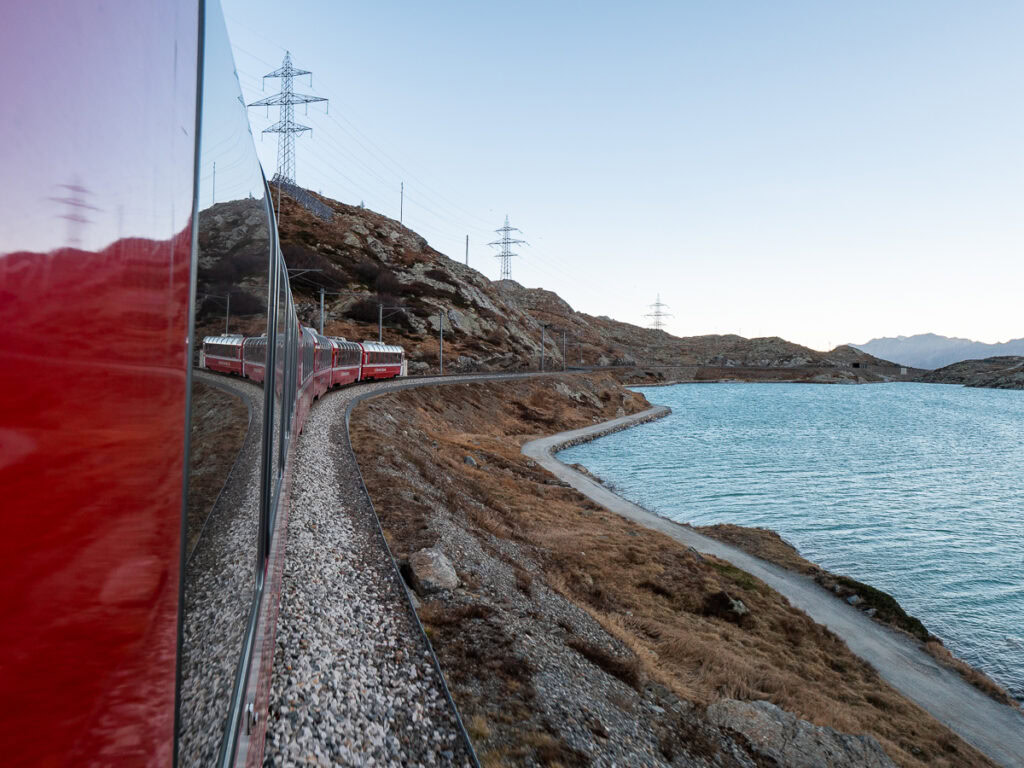
10 day Switzerland itinerary summary
Day 1: Explore Zurich
Day 2: Zurich to Lucerne via St Gallen
Day 3: Mountain day trip (Rigi, Pilatus, Titlus or Stanserhorn)
Day 4: Lucerne to Grindelwald
Day 5: Mountain day trip (Jungfrau or Grindelwald)
Day 6: Grindelwald to Interlaken via Lauterbrunnen
Day 7: Explore Interlaken
Day 8: Interlaken to Zermatt
Day 9: Mountain day trip (Gornergrat or Matterhorn)
Day 10: Zermatt to Zurich
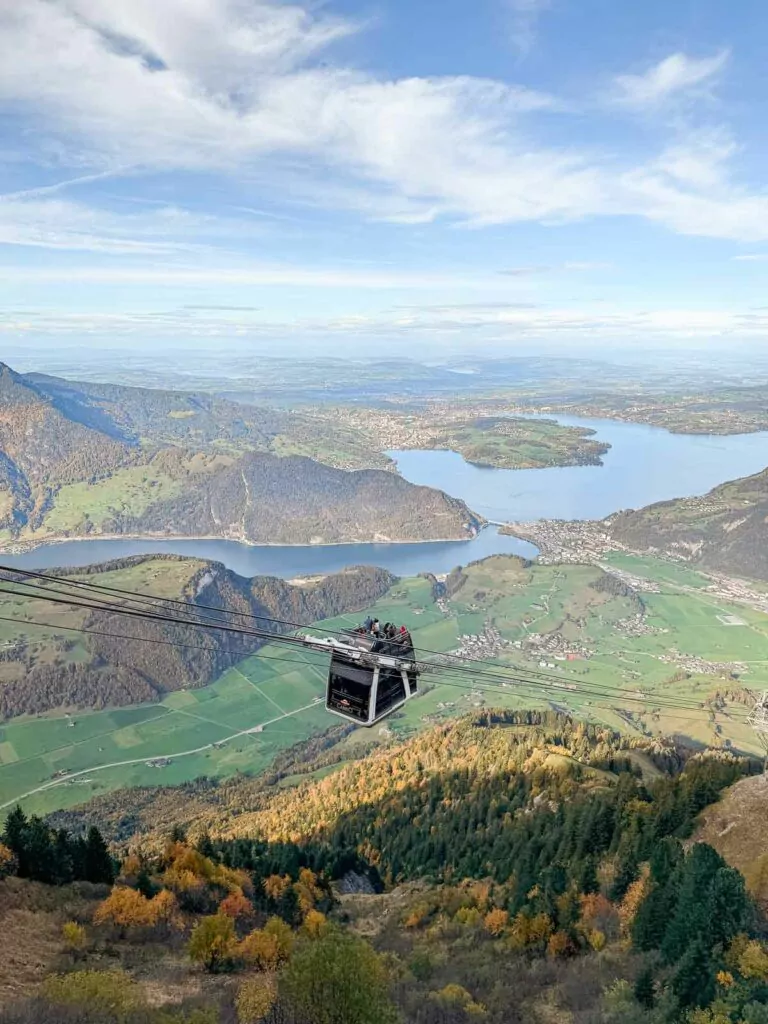
What to know before your 10 days in Switzerland
When to visit Switzerland
I’m a passionate shoulder season traveller, I love getting the best mix of mild weather, fewer crowds and lower prices, so my personal opinion is that the best time to visit Switzerland is May/June and September/October.
Weather in Switzerland
Switzerland’s weather can be frustratingly unpredictable, but that’s all part of its charm. You never really know what you’re going to get until you wake up and look out the window! Even weather forecasts aren’t trustworthy, the alpine landscapes mean things can change from one side of the mountain to the other, and you might get the bonus experience of feeling four seasons in one day.
But to give you at least an idea of what to expect, here’s a quick breakdown of the main seasons.
☀️ Summer (June-August) is usually warm and sunny, with high temperatures and humidity particularly hanging around the low-lying valleys. Your best bet for a summer trip to Switzerland is to get out into the mountains where you can enjoy fresh air, just be sure to pack layers and a raincoat in case you get hit by a classic summer thunderstorm.
🍂 Autumn (September-November) is my favourite time to visit for photography, the tree colours are absolutely incredible against a backdrop of snowcapped mountains. Dreamy! The weather is unpredictable, on my most recent trip I experienced heavy snow in Zermatt at the end of October whereas last year at the exact same time I was in shorts and a t-shirt up the Gornergrat mountain, so best to be prepared for all eventualities!
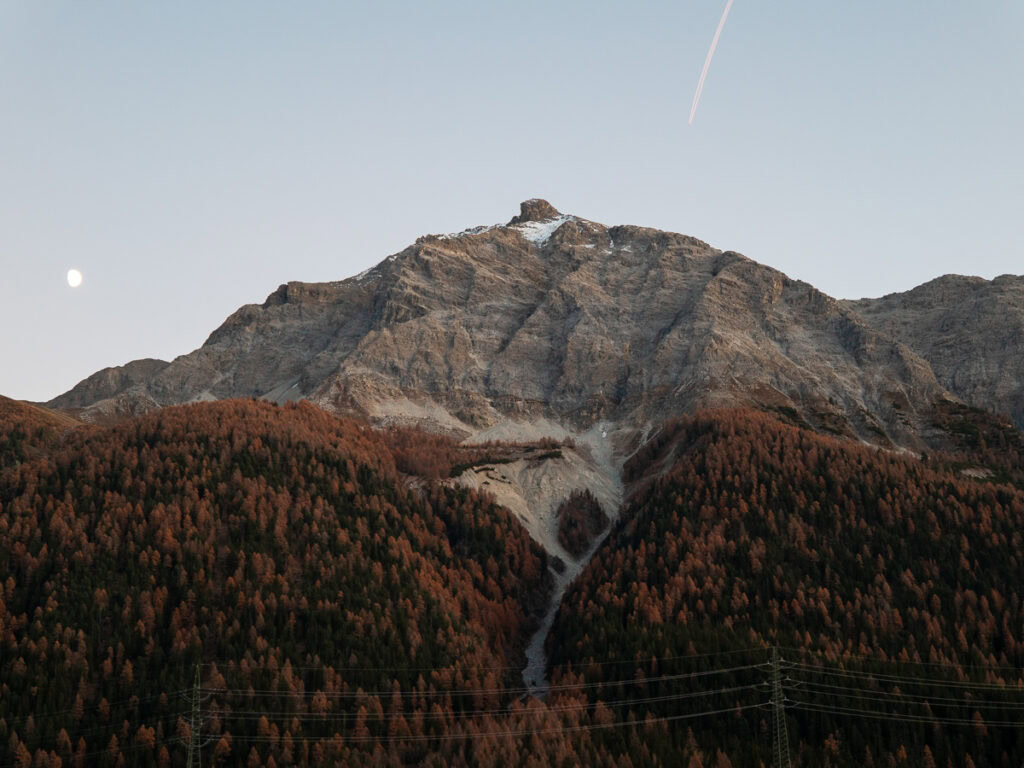
❄️ The winter months (December-February) turn Switzerland into a ski tourist’s paradise, with countless ski resorts opening their slopes, après-ski scenes coming alive and charming cities transforming into festive wonderlands. Visit earlier in this period for Christmas vibes, or towards the end to get the best chance of great ski conditions. Keep in mind that days are much shorter in winter so you’ll struggle to squeeze as much sightseeing into your daylight hours.
💐 And finally, the spring months (March-May) sees the country start to thaw out and some of the mountain hikes start to reopen. Again the skies and temperature can be unpredictable here, so pack a range of clothing to cover all the bases.
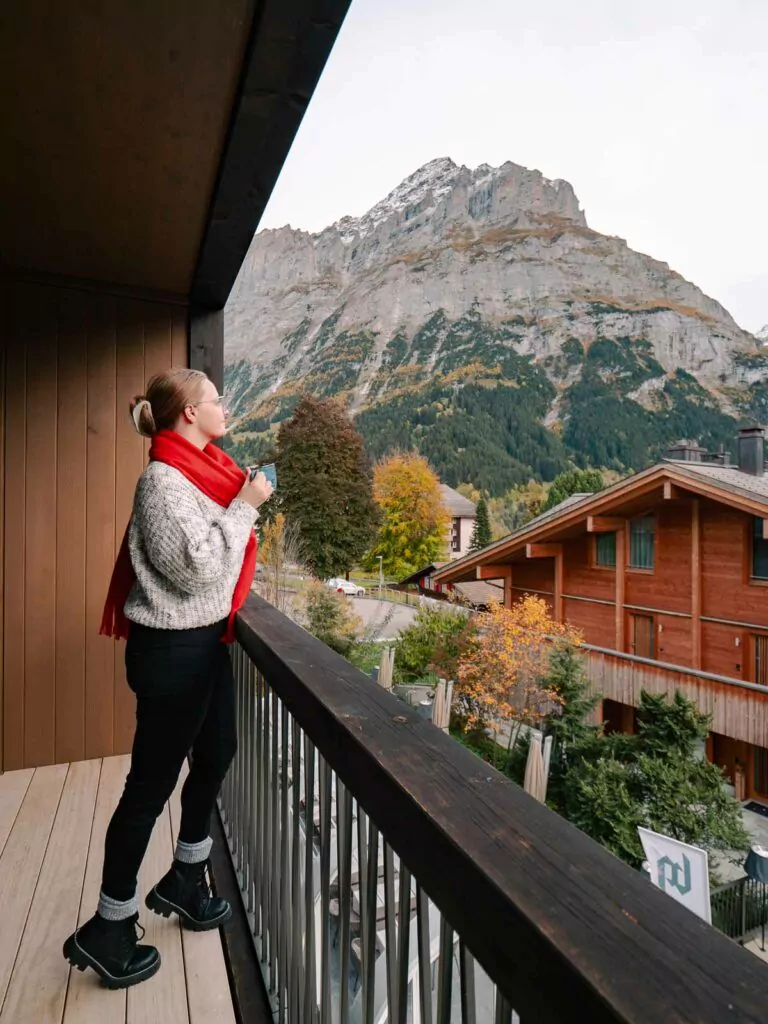
High season in Switzerland
Switzerland’s busiest tourist months are the same as the rest of Europe, the July/August summer holidays. During this time you’ll struggle to find a single city or mountain town not packed with fellow travellers.
If you’re tied to these months due to family or work commitments then my top tip is to book in advance to secure decent prices for accommodation and trains, lock in tickets to attractions so you don’t miss out, and stay flexible so you aren’t at the mercy of crowds ruining your plans.
If you are open to other times of the year, the May/June and September/October period before and after summer is pretty perfect, with more affordable prices, less people to share the views with and generally mild weather.
For those of you wanting to experience Switzerland in all its winter glory then January is the busiest winter month at the ski resorts, but the past couple of years has seen a later ski season start and February often brings excellent ski conditions.
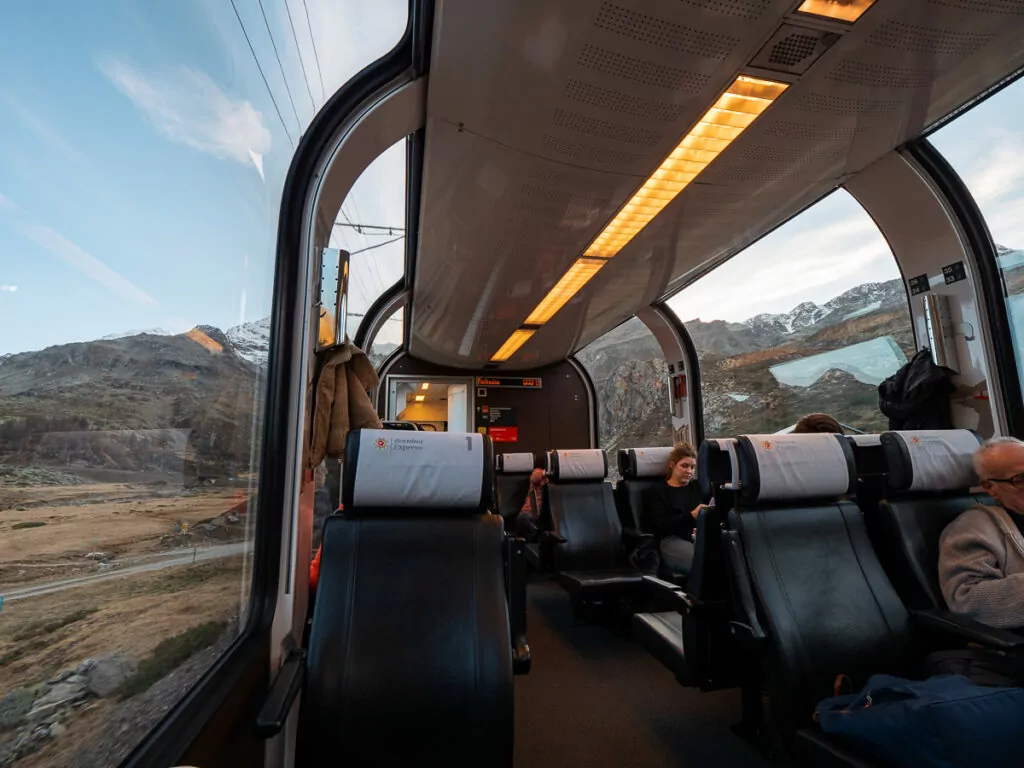
Languages in Switzerland
Switzerland is basically Europe’s version of the overachieving kid at high school, the country has four official languages: German, French, Italian and Romansch.
The most common language you’ll come across in the destinations in this 10 day Switzerland itinerary is Swiss German so it’s worth learning a few basics to be able to greet and thank people correctly, but you’ll find that people working in tourism and hospitality will all speak basic English at the very least.
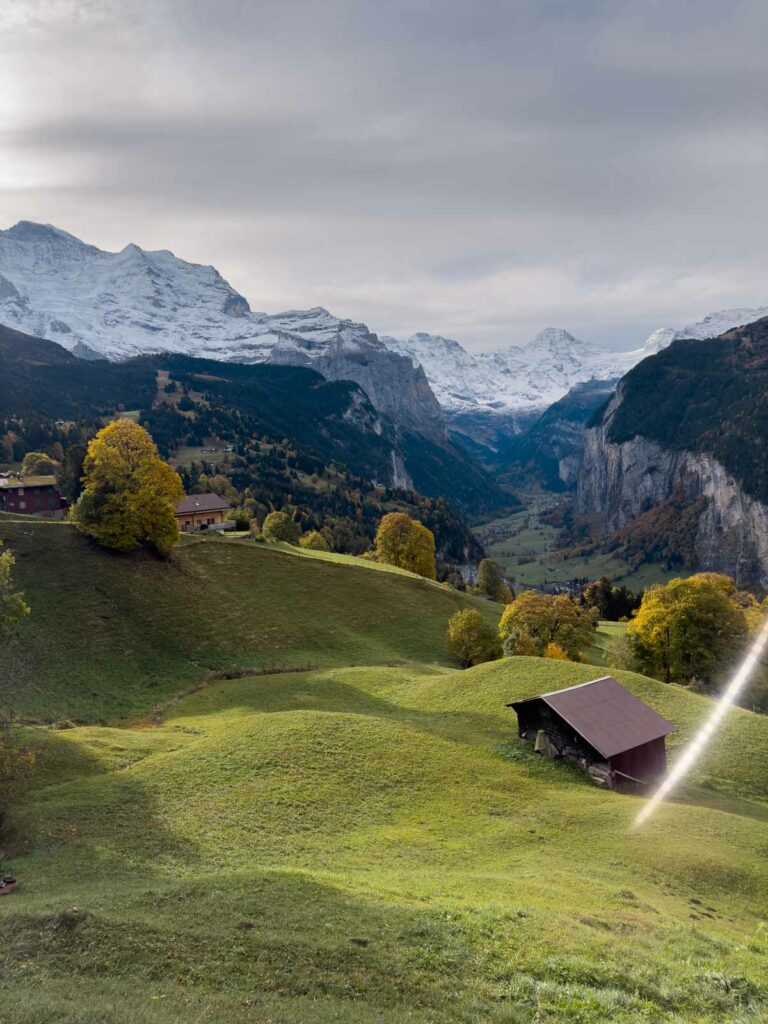
How to get to Switzerland
By plane
Zurich and Geneva are your main gateways to Switzerland by air, SWISS Airlines flies direct from hubs all over the globe or you’ll be able to find an easy connecting flight from pretty much any major city. Low cost carriers like EasyJet and RyanAir also fly into Basel Airport.
By train
Switzerland has one of the best train networks in Europe, and it’s well-linked by international train lines with France, Italy, Germany, Austria and more. It might be cheaper for you to fly into Paris, Munich or Milan and catch a train into Switzerland instead.
If you’re combining Italy and Switzerland, check out my Northern Italy Switzerland itinerary options (with a few different routes for different timeframes and travel styles), and if your 10 days in Switzerland is part of a bigger adventure then my three month Europe itinerary shows you a bunch of potential no-fly Europe routes to build your dream trip.
By car
If you’re exploring Europe in a rental car then Switzerland is easily accessible from all neighbouring countries, just check if you need an International Driver’s Permit first and keep in mind that some mountain villages are car-free, so you’ll need to park on the outskirts and catch a train or bus there instead.
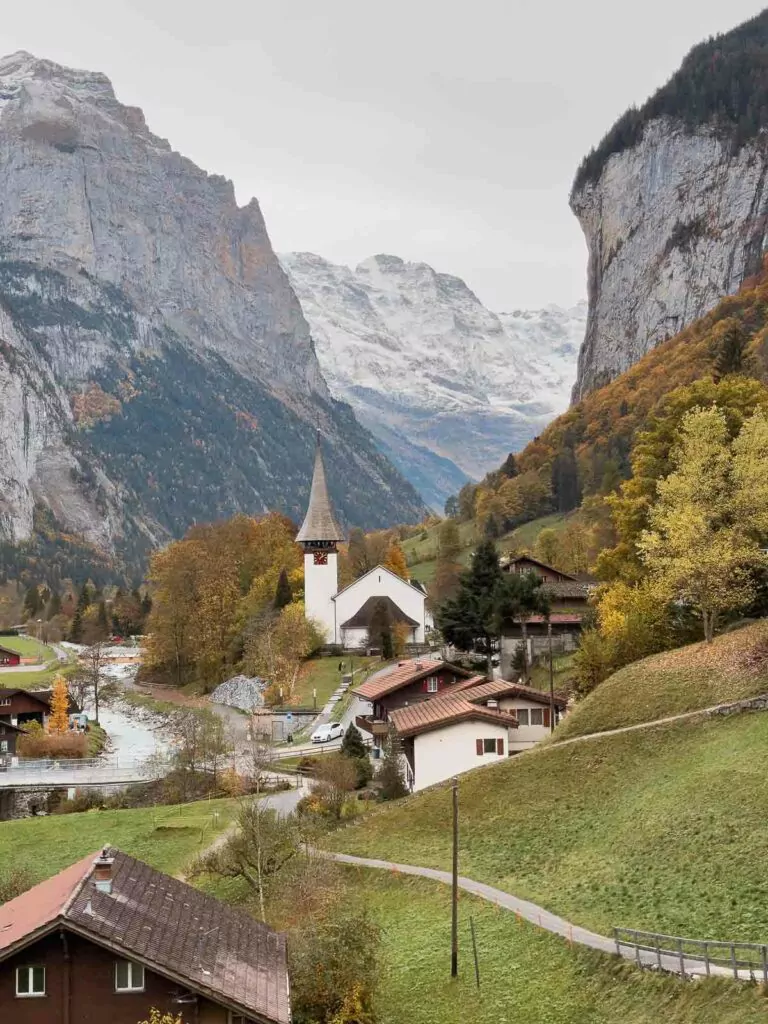
How to get around Switzerland
One word: TRAINS!
Train travel is the ultimate way to see Switzerland, you get the best bang for your buck in terms of time and money, all the tourist spots are incredibly well-connected, and it’s fairly easy to get the hang of Swiss trains and train stations with a little bit of research before you go.
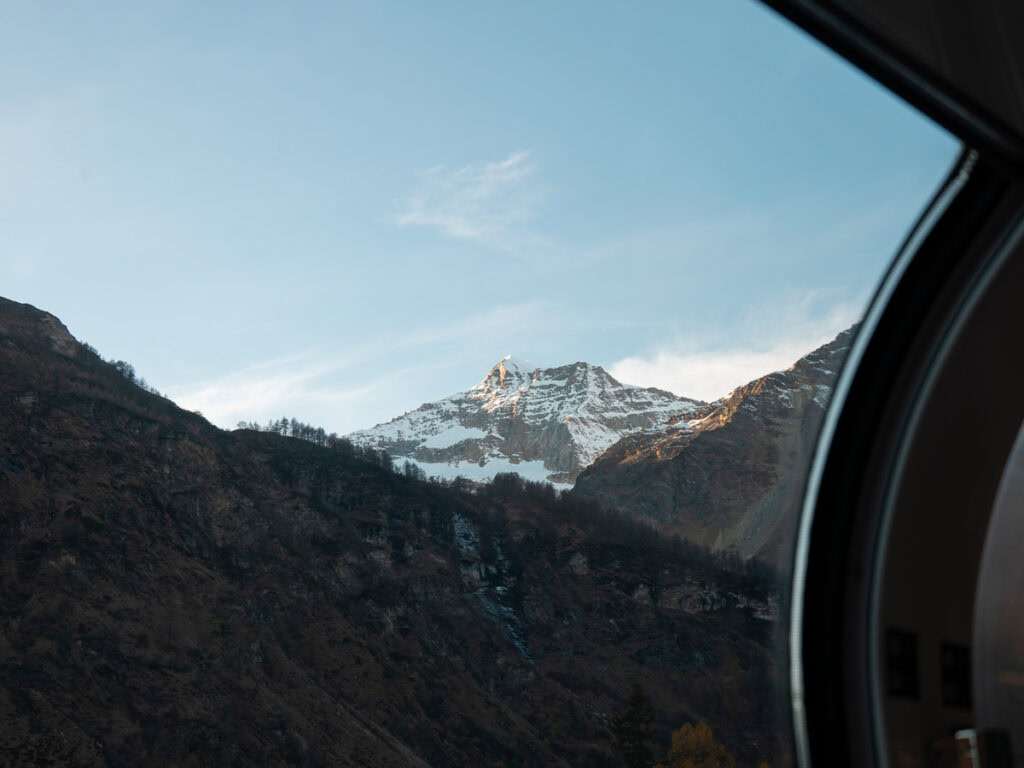
This itinerary (as well as my shorter 5 day Switzerland itinerary) is based off my own trip travelling only by train, using speedy intercity trains, fancy panorama trains (special scenic trains) and iconic mountain railways.
Train travel in Switzerland isn’t cheap (let’s be honest, nothing’s cheap in Switzerland) but the good news is that there are some travel passes you can use to save some CHF for more fondue. Here are some travel passes worth knowing about, plus my recommendation for the best pass for your trip.
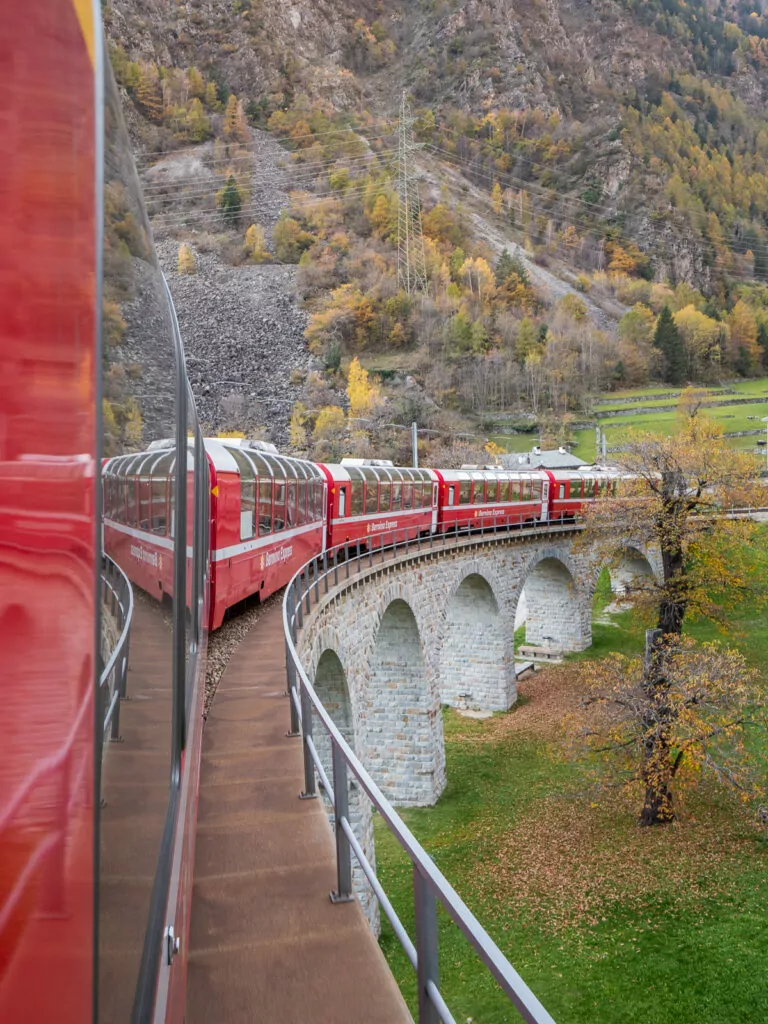
Swiss Travel Pass
The Swiss Travel Pass gives you unlimited access to the Swiss Travel System network, which covers most trains, buses, boats and public transport, as well as giving you 50% off many mountain railways/cable cars, and free entry to more than 500 museums. You can save 10% when booking through the link above if you use the promocode FINDINGALEXXKLOOK. Woohoo!
Your ticket on most public transportation is fully covered, but if you plan on taking one of the panorama trains (like the Bernina Express or Glacier Express) you’ll still need to pay for a seat reservation.
You can choose a certain number of days for your Swiss Travel Pass and it can either be consecutive days (best for a fast-paced trip) or a flex pass where you choose the days you want to activate the pass (better for a slower trip where you’re only moving cities every 3-4 days). You need to use a travel day for any day you make use of free transport or discounted trips, like mountain railways.
👉🏼 Read more: Is the Swiss Travel Pass worth it?
🎫 Buy your Swiss Travel Pass (and use promocode FINDINGALEXXKLOOK for 10% off)
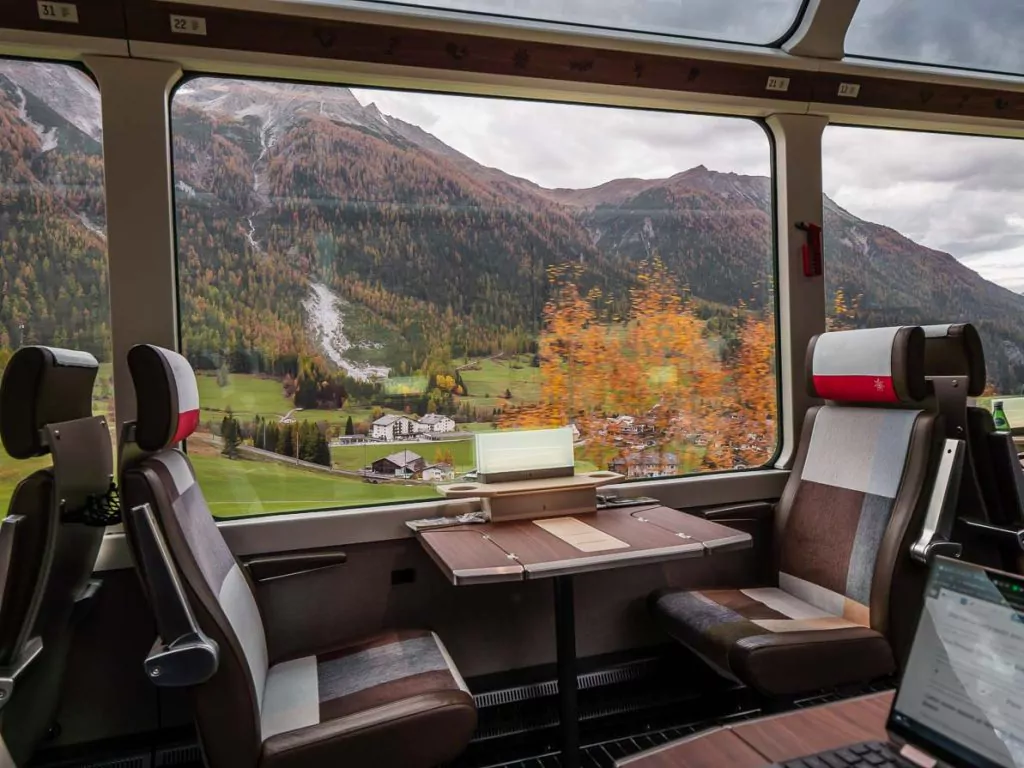
Swiss Half Fare Card
The Swiss Half Fare Card does what you’d expect it to, it gives you a 50% discount on most public transportation (trains, buses, boats etc.) as well as mountain railways. You can get 10% off your card with the promocode FINDINGALEXXKLOOK too!
I’m going to do a more detailed breakdown of the Swiss Half Fare Card vs. the Swiss Travel Pass but in terms of which one is best, it really depends on the itinerary.
If you’re taking multiple expensive panorama trains like the Bernina Express or Glacier Express then the full Swiss Travel Pass might come out on top, but for lots of mountain railways the Half Fare Card can often end up being better value.
👉🏼 Read more: Is the Swiss Half Fare Card worth it?
🎫 Buy your Swiss Half Fare Card (10% off with promocode FINDINGALEXXKLOOK)

Eurail/Interrail Passes
If you’re travelling Europe by train with a Eurail or Interrail Global Pass then your pass will work in Switzerland, this will cover your ticket for all trains between towns and cities (though you will need to pay for seat reservations on panorama trains).
The Eurail/Interrail passes don’t include boat/bus/public transport within cities like the Swiss Travel Pass and Swiss Half Fare Card.
One thing to note with a Eurail/Interrail Pass is that unlike the Swiss Travel Pass, taking advantage of a discounted trip like a mountain railway does not require you to use a travel day on a Eurail/Interrail Pass.
This is hard to find confirmation of online because there’s conflicting info and things have changed with some Eurail extensions in Switzerland in December 2023, but I spoke to my go-to rail experts at Rail Europe and they directed me to this official response from Eurail clearing it all up. Just scroll down to Camilo’s response from early 2024.
👉🏼 Read more: Is a Eurail Pass worth it?
🎫 Buy your Eurail Pass or Interrail Pass (10% off with promocode FINDINGALEXXKLOOK)
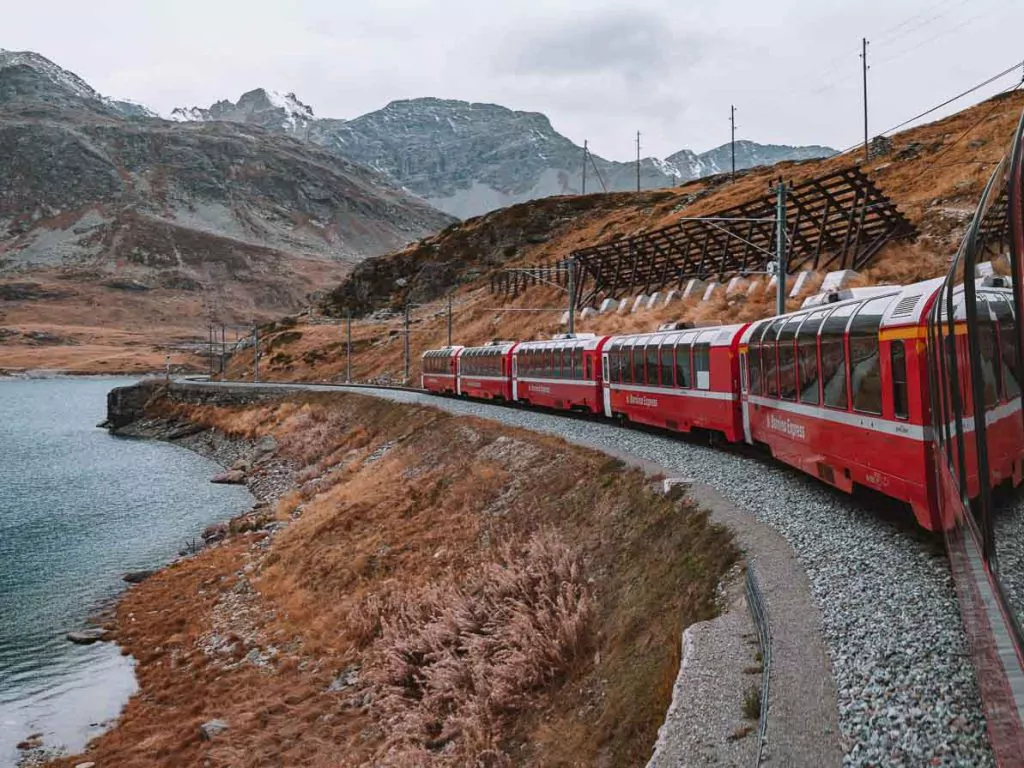
Regional travel passes
A few regions in Switzerland have their own travel passes which cover transport in the area, like the Tell Pass for the Lucerne region or the Jungfrau Travel Pass.
Usually these passes end up covering more than a Swiss Travel Pass or Eurail Pass, i.e. they often offer better discounts on mountain excursions (or cover them completely), but as you’re only in those places for a short time it might not be worth it.
You can also combine the Jungfrau Travel Pass with the Swiss Half Fare Card and the Jungfrau pass for a discounted rate (not half price but about 22% off) and then use the Half Fare Card for all your travel in the non-Jungfrau region.
The travel passes work best when they’re covering a longer period, a three day Swiss Travel Pass is 97CHF per day whereas a 10 day Swiss Travel Pass is 55CHF per day, so getting a mixture of three 3-day travel passes will end up being more expensive than one 9-day pass.
I know that sounds a bit confusing but it just takes a little bit of calculation work to find the best option. I’ve got a breakdown just after this next blog section!
👉🏼 Read more: Is the Jungfrau Travel Pass worth it?
🎫 Buy your Jungfrau Travel Pass or Tell Pass
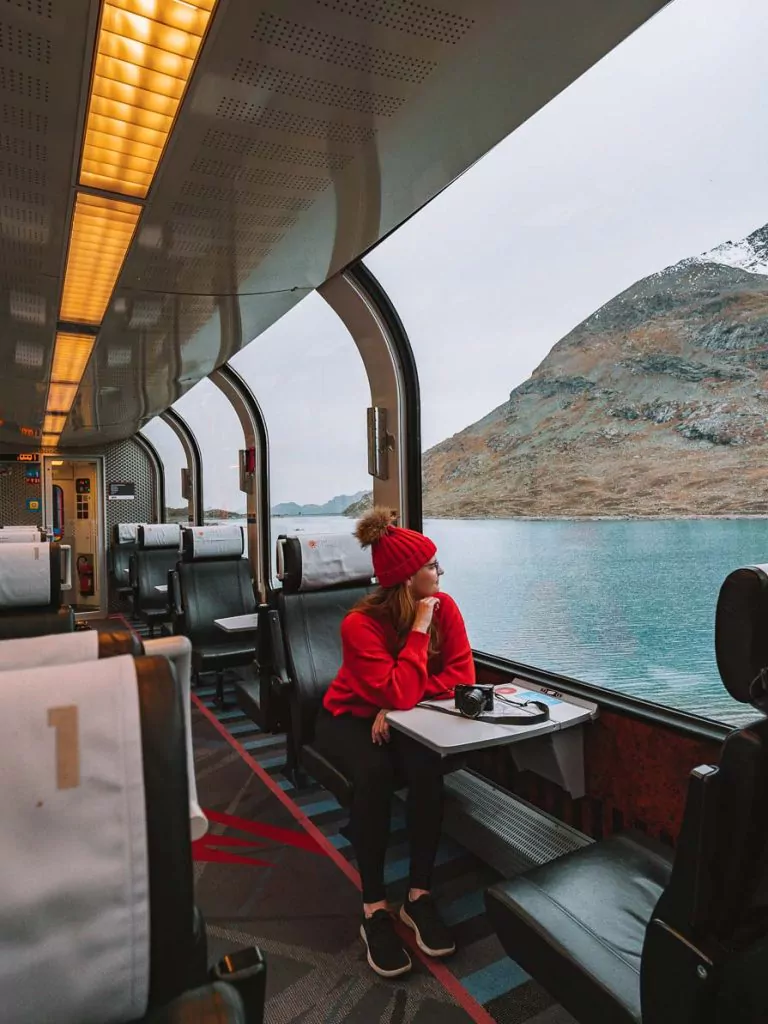
Getting around Switzerland by car
I haven’t driven around Switzerland myself so I can’t give you any personal recommendations here, but honestly the train system is so fantastic that I just think having a car would be more trouble than it’s worth.
Parking in cities is expensive. some places on this itinerary are car-free, and whoever is driving will miss out on some of the best views. whereas on a train you can enjoy the scenery without worrying about keeping your eyes on the road. Skip the car and go for the green, convenient and scenic option instead!
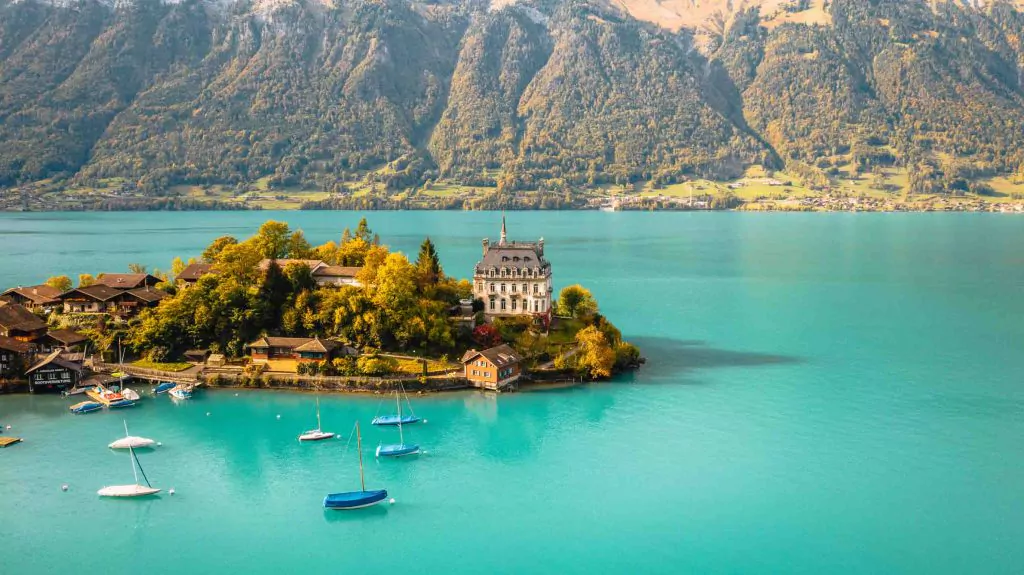
The best travel pass for this 10 day Switzerland itinerary
I know I’m sounding like a broken record here but it really does depend on the exact itinerary. Let’s look at a couple of scenarios.
If you were to follow this whole ten day itinerary for Switzerland, including Rigi and Pilatus in one day in Lucerne, both Jungfrau and Grindelwald, Gornergrat in Zermatt and the Glacier Express, the best option would be the Swiss Half Fare Card. Even more so with the 10% discount you can get using the promocode FINDINGALEXXKLOOK if you book through this link!
The total cost for your transport and mountain excursions would end up being about 800CHF (including the pass for 120CHF), though that could obviously change depending on season and demand. If you went for the Swiss Travel Pass for the exact same trip you’d be paying 880CHF all up including the pass, or if you did a combo of the Tell Pass, Jungfrau Travel Pass and Half Fare Card you’d spend about 867CHF total.
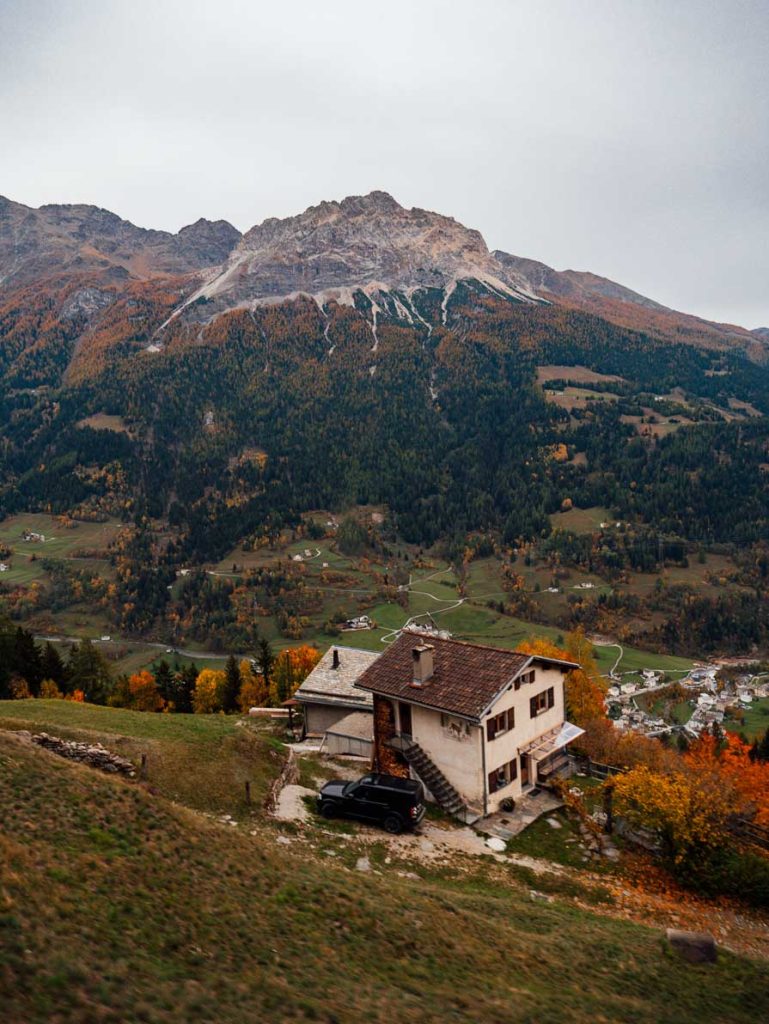
However, a few changes could make a big difference:
- Remove Jungfraujoch from your itinerary and switch Pilatus to Stanserhorn and the Swiss Travel Pass ends up being the cheapest option
- Remove the Glacier Express and the Swiss Half Fare Card comes out the cheapest by a long shot
- Spend more time in Lucerne and do all four mountain excursions nearby and the Tell Pass/Jungfrau Travel Pass/Half Fare combo ends up being best value
- If you’re spending time in Italy, France, Germany or any other European country afterwards, the Eurail/Interrail Pass might end up being a better option for you as the cost-per-day of the longer passes is really good value, but keep in mind that the mountain excursion costs do add up. You could consider taking a shorter Eurail Pass (e.g. 10 days instead of 15 days) and then using a Swiss Half Fare Card for your time in Switzerland instead.
One thing is for sure, and that is that point-to-point tickets are pretty much never the way to go if you’re planning on being in Switzerland for more than a week.
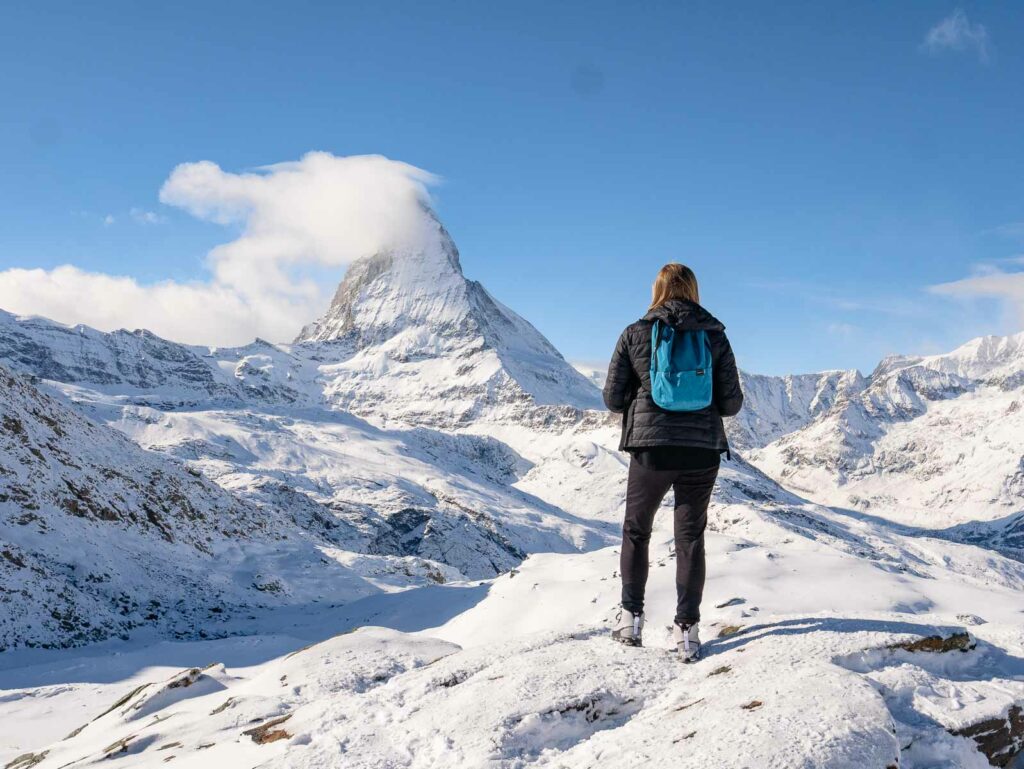
What to budget for 10 days in Switzerland
I’m sure no one here is expecting me to say that Switzerland is an affordable European destination, but I can help you get a better idea of what to prepare for in terms of expenditure.
If your idea of a Switzerland holiday is a luxe mountain-view hotel room, fine dining, ticking off all the mountain railways and travelling in style then you’re going to be looking at a pretty pricey bill by the end of it. Worth it if you can afford it though!
But if you’re trying to keep it within a reasonable price range, then with some careful planning, advance booking and well-considered compromises on your travel style, you might be surprised at what you can get for your money.
Please note: These prices are based on my personal experience in Switzerland and are of course very changeable and dependent on season. Always check current accommodation costs for your planned travel dates before booking flights, you don’t want to lock in flights and then realise your hotel costs are way more than you expected.
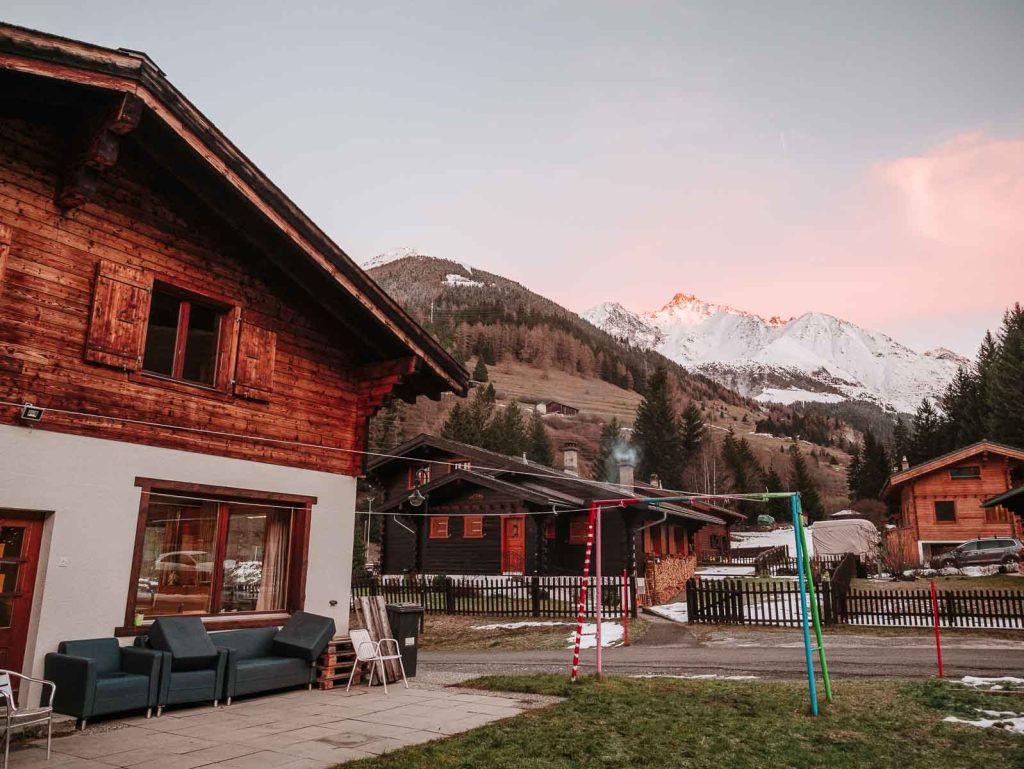
Accommodation
For those of you looking at the cheapest end of the accommodation scale for your 10 day Switzerland trip, prepare to spend around 35-70CHF for a bed in a shared dorm at a hostel or 75-110CHF for a private room, or perhaps a bit more for touristy destinations during high seasons or events. These hostels often have access to cooking facilities though so you’ll be able to save on food, this could end up saving you 20-30CHF per day.
For mid-range 3*/4* accommodation at a hotel or guesthouse, you’re likely to spend anywhere from 140-300CHF per night depending on the quality and facilities.
For a night of luxury at an epic 5* hotel, expect prices upwards of 300CHF per night, up to the early four figures for many top-rated resorts in places like Zermatt, St Moritz or Grindelwald.
Top tip: I always use booking.com to search for my accommodation options, then I’ll cross-check the direct website to see if booking direct is any cheaper (it’s usually not) or offers any extra benefits like free breakfast or late checkout.
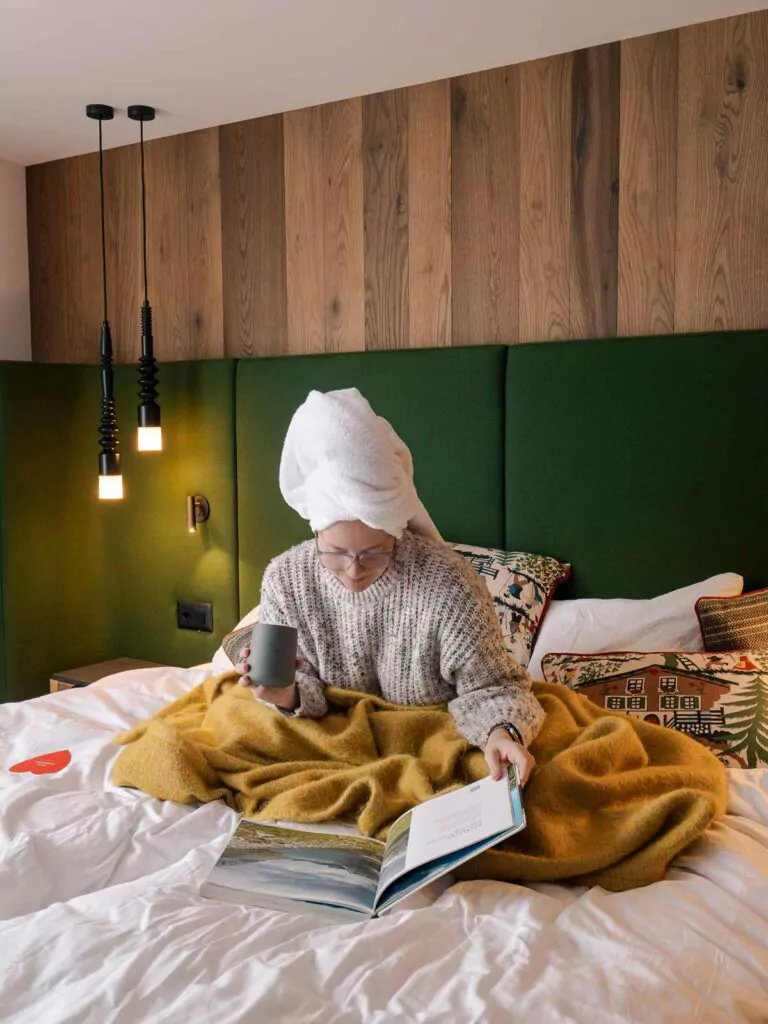
Transport
Transport costs will probably make up a decent chunk of your Switzerland budget, and these will depend on your exact route, how far in advance you book, and if you use a travel pass.
As I mentioned above, if you plan on following this itinerary fairly closely you should expect to spend around 720-800CHF for your inter-city trains, public transport and 4-5 mountain excursions.
Food
If your budget is reeeeally tight and you’re happy to cook your own meals at hostels or live off supermarket snacks, you could get away with spending 15-20CHF per day on food at a real push. This would give you enough for some fruit, bread rolls, juice, chips and other cheap snacks, but wouldn’t be enough to cover ready-made salads, sandwiches or any meals out.
An average restaurant main meal will generally cost around 25-30CHF, or if you’re dining somewhere fancy you can expect to spend 45-50CHF or more on a single course dinner. A local beer or wine typically starts from 6/7CHF.
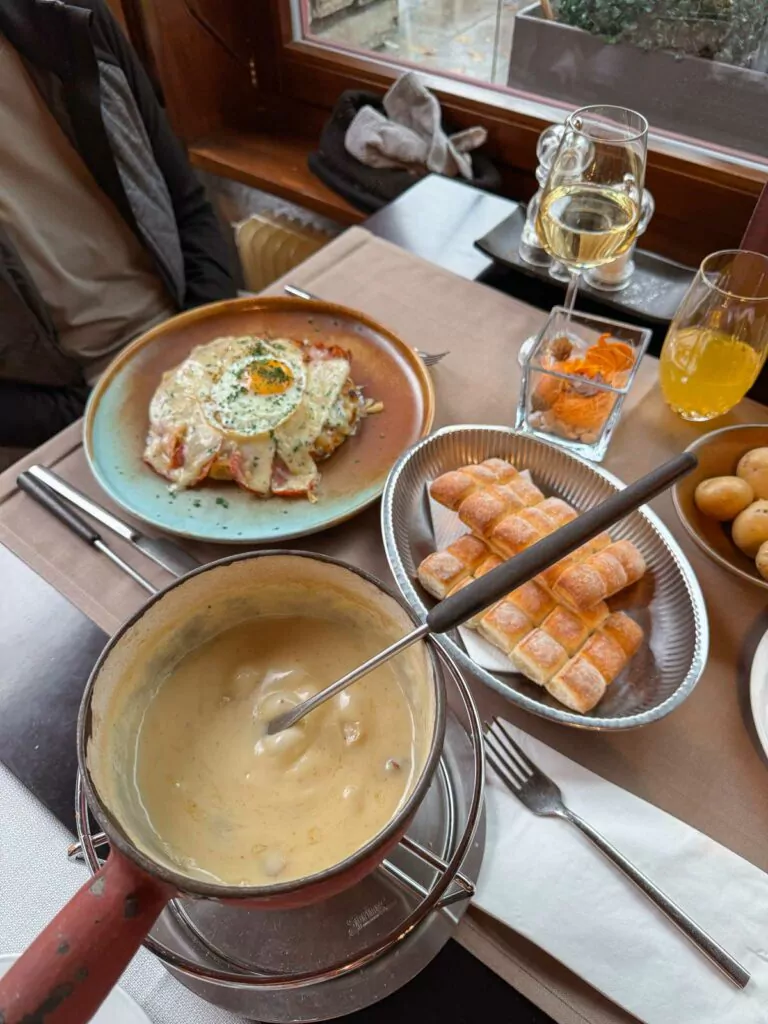
The ultimate 10 day Switzerland itinerary
Who is this Switzerland 10 day itinerary for?
This 10 day itinerary is for travellers heading to Switzerland who want to make the most of their time in this European slice of paradise. It’s a fairly fast-paced trip, you’ll be busy throughout each day and moving cities every second day or so, but that’s what it takes to experience the best Switzerland has to offer over 10 days.
If you’re looking for a shorter trip you can check out my 5 day Switzerland itinerary, or if you have more time you can take this itinerary and slow it down. Enjoy!
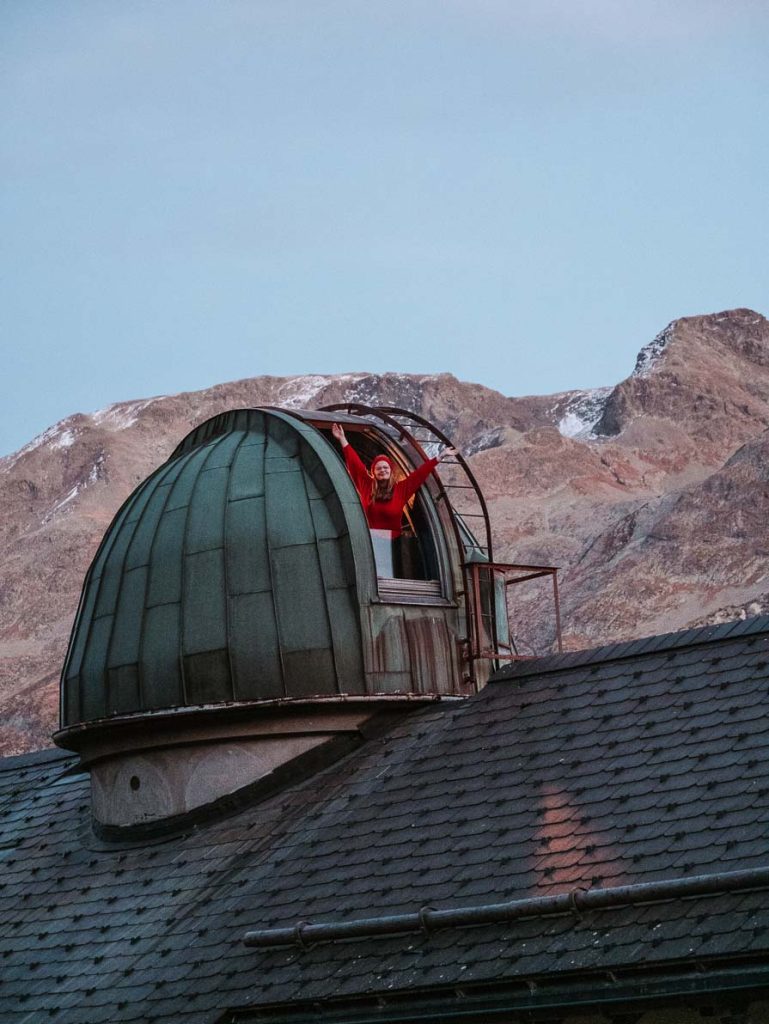
Day 1: Explore Zurich
Arrive into Switzerland’s cosmopolitan hub, the city of Zurich, and spend a night here before exploring beyond the city on day two.
About Zurich
Zurich might not be at the very top of your Switzerland bucket list, especially if you’re coming for outdoor adventures and alpine scenery, but spending a bit of time in the biggest city sets the stage for the rest of your trip.
There is plenty to see and do for all types of travellers, from fancy spa complexes to relax in after a long flight, to countless chocolate shops serving sweet treats, to fascinating museums offering an insight into Swiss character.
The city is wonderfully walkable, and if you’re short on time and want to get a Zurich rundown without too much logistical planning then the free walking tour in the Old Town is an absolute must.

Things to do in Zurich
- Wander around the Aldstadt (Old Town)
- Head up to Lindenhof Square for an incredible view over the river
- Taste test Swiss chocolate at the famous chocolatiers in the city, some notable ones are Teuscher, Vollenweider and Sprüngli, or you can book a chocolate walking tour to visit a few different ones
- Visit the Lindt Home of Chocolate for an in-depth look at one of the most famous chocolate makers in the world
- See the twin towers of Grossmünster and its incredible stained glass windows (5CHF entry, check opening hours here), you can climb 187 steps to the top of the tower if you want to see the view
- Do a fondue and wine tour on an eco-friendly tuktuk
- Soak your travel stress away at the Hürlimann Baths & Spa, they have a spectacular rooftop infinity pool plus an epic Roman-Irish spa ritual in ancient vaults
- Stroll along the waterfront of Lake Zurich or go on a lake cruise
- Visit a museum, there are lots! Kunsthaus Zürich is the biggest art museum in Switzerland, Landesmuseum offers a deep dive into Swiss national history and culture, the FIFA Museum is a must for football fiends, and Uhrenmuseum Beyer Zürich is a unique one hidden beneath a jeweller, showcasing more than 270 watches and timekeeping objects
- If you’re keen to experience Zurich’s nightlife before heading to quieter places, the Zurich Pub Crawl has great reviews
- For a full day Zurich experience all organised for you, this tour on GetYourGuide is well-rated and includes a city tour, lake cruise and the Lindt Home of Chocolate
- Indulge in some fine dining, we tried the degustation menu at Carlton and it was impeccable
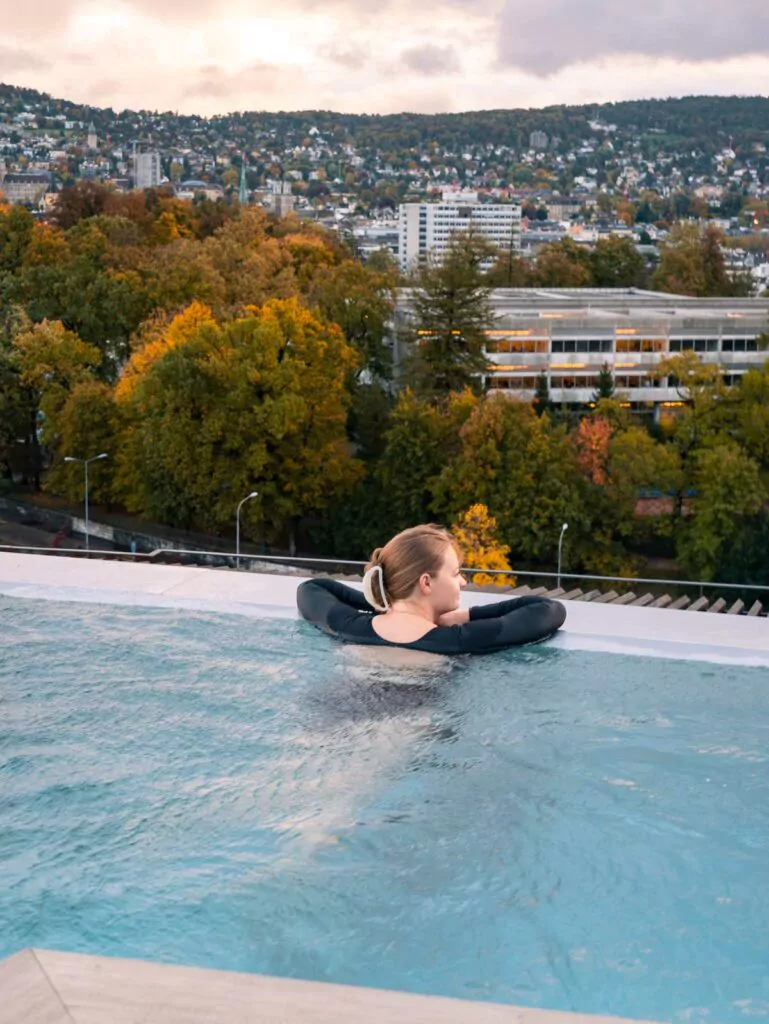
Where to stay in Zurich
Budget
- Zurich Youth Hostel (basic backpacker hostel with a fridge/microwave but not a proper kitchen)
- MEININGER Hotel Greencity (simple but stylish, full kitchen for guests, a bit far from the city centre)
- If you’re arriving late and just want to stay near the airport, Capsule Hotel Zurich Airport is ideal
Mid-range
- 25hours Hotel Langstrasse (my top personal recommendation for a mid-range stay, it’s an epic design hotel with super friendly staff and a great location in the vibrant Langstrasse district)
- Marktgasse Hotel (brilliant location in the Old Town)
- Hotel Adler (historic hotel with good value single rooms for solo travellers)
Luxury
- My favourite place to stay in Zurich is the beautiful B2 Hotel, a book-lovers dreeeeam. They have a huge library/dining room with floor-to-ceiling bookshelves two storeys tall, a brilliant workspace for digital nomads, and all the amenities you’d want like a gym, in-room workout equipment by request, and a delicious buffet breakfast. The hotel is in the same building as the Hürlimann Baths & Spa I mentioned earlier, and hotel guests get 50% off their entry. The hotel gives you a luxury experience but is actually a lot cheaper than the classic luxury hotels in Zurich!
- The Mandarin Oriental Savoy opened in early 2024 to rave reviews
- If you really want to splurge, Baur au Lac is an incredibly opulent 5* hotel with a 2-Michelin-star restaurant
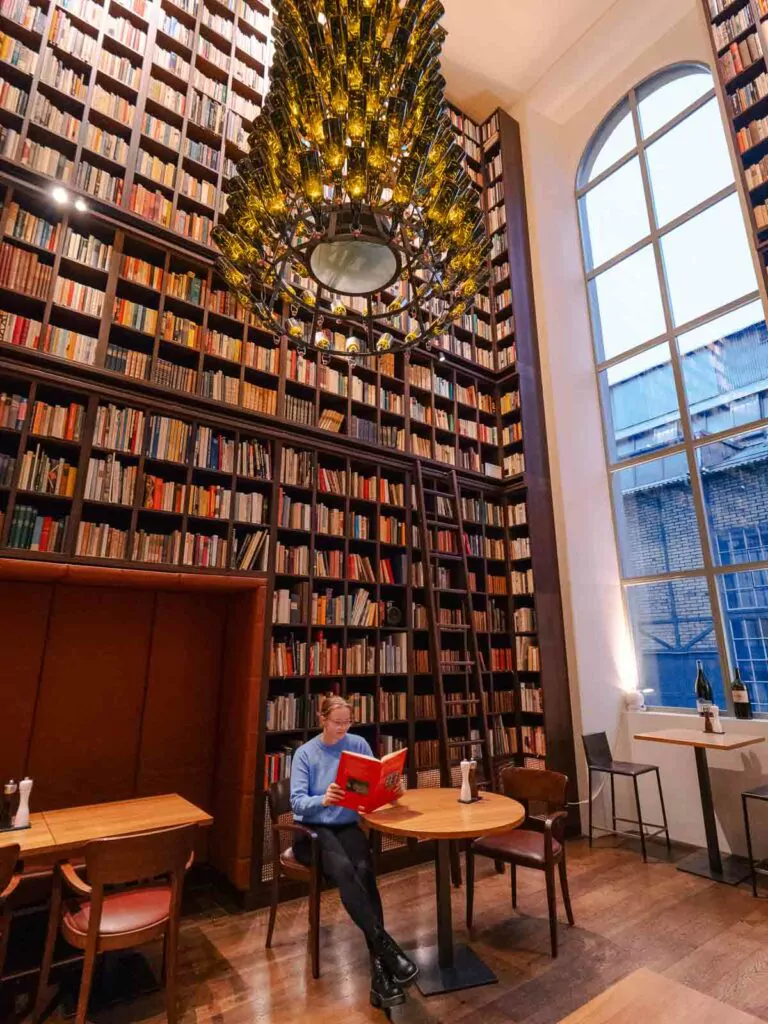
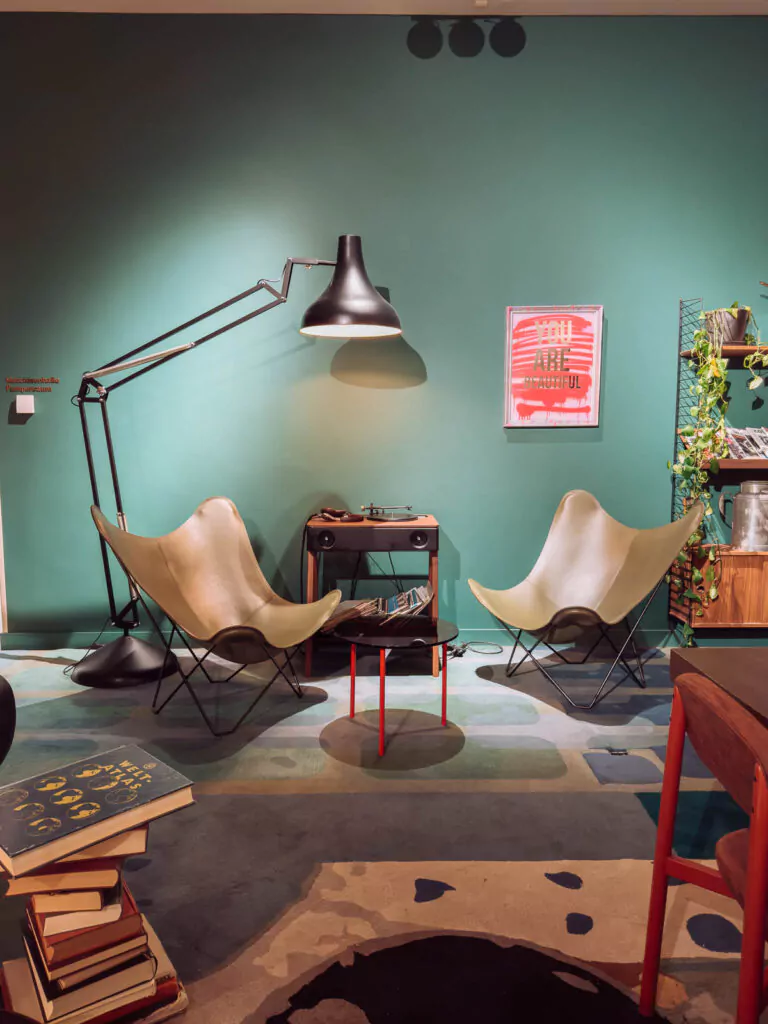
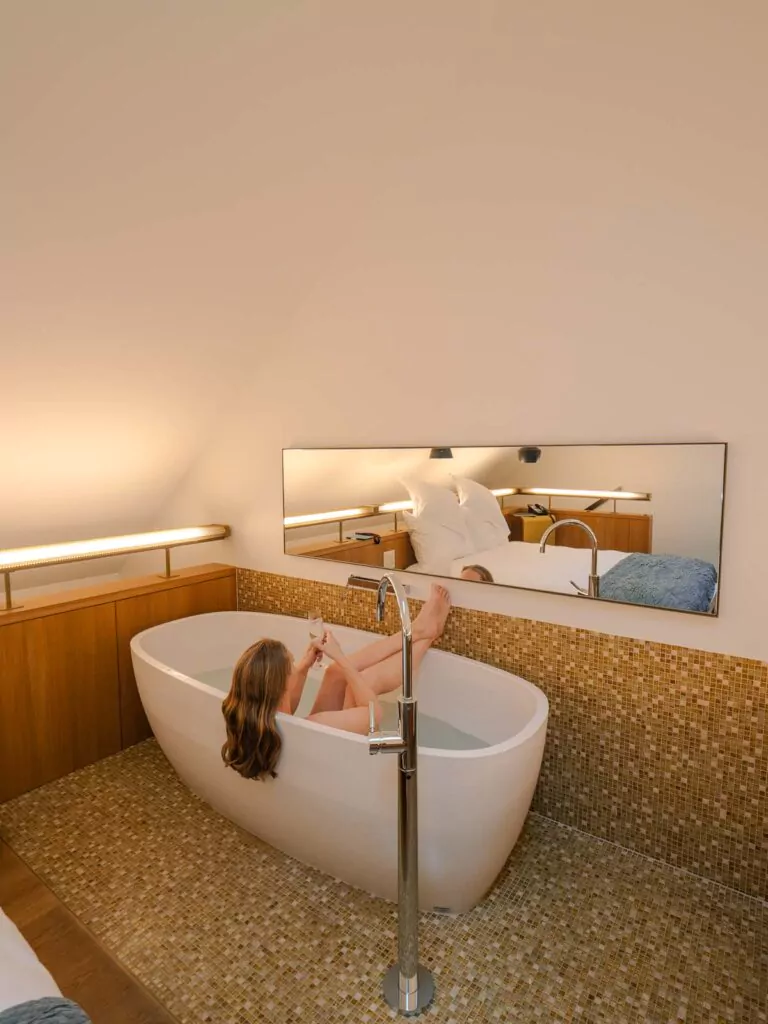
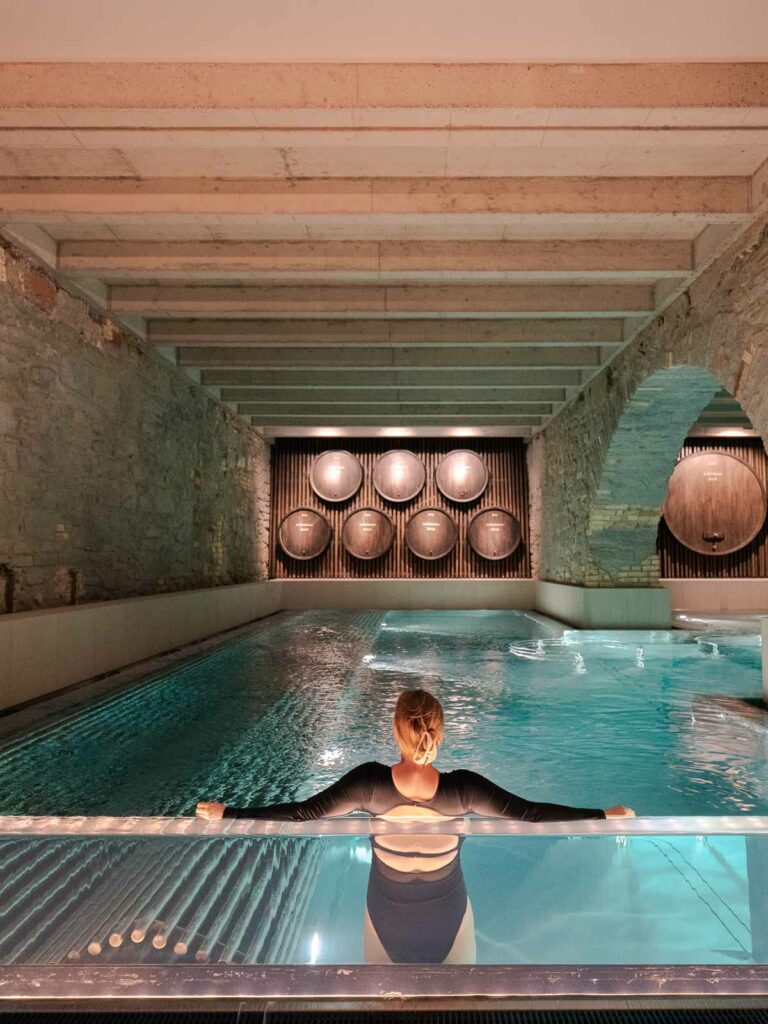
Day 2: Zurich to Lucerne via St Gallen
It’s time to say goodbye to the big city and make your way towards the mountains, with a quick pit stop on the way. And by on the way I mean a completely different direction, but I promise it’s worth it!
How to get from Zurich to St Gallen
If you want to take an scenic route and don’t mind spending a long day on trains, you can catch the train from Zurich to Schaffhausen and then from Schaffhausen to St Gallen via Stein am Rhein along the Rhine and Lake Constance. This trip takes 2h 40m all up.
If you’d prefer to just get there quickly, there are loads of direct trains from Zurich to St Gallen throughout the day that take about 1h-1h 15m.
Both of these options are fully covered by a Swiss Travel Pass or Eurail/Interrail Pass, no seat reservations needed.
Once you get to St Gallen you can store your bags in the luggage lockers at the train station so you can explore without lugging suitcases around.
About St Gallen
I hadn’t even heard of St Gallen the first couple of times I visited Switzerland, and after seeing it with my own eyes, I can’t believe so many people leave it off their Switzerland itineraries.
St Gallen is a quaint town tucked away in eastern Switzerland close to the Liechtenstein and German borders, with a beautifully-preserved Old Town boasting ornate bay windows and intricate carvings that set it apart from other Swiss villages.
But the real gem in St Gallen’s crown is the UNESCO World Heritage Listed Abbey of St Gall, an 8th century monastery with a Baroque cathedral and absolutely magical library. One of the oldest in the world, the Rococo-style library boasts elaborate stucco work and ornate frescoes, and houses an invaluable collection of medieval manuscripts and books that date back to the 700s.
Bookworms and history enthusiasts alike must make the side trip to St Gallen, it truly has to be seen to be believed.
Tickets are 18CHF for access to the Abbey Library, Vaulted Cellar and Exhibition Space, you can book online on the official website.
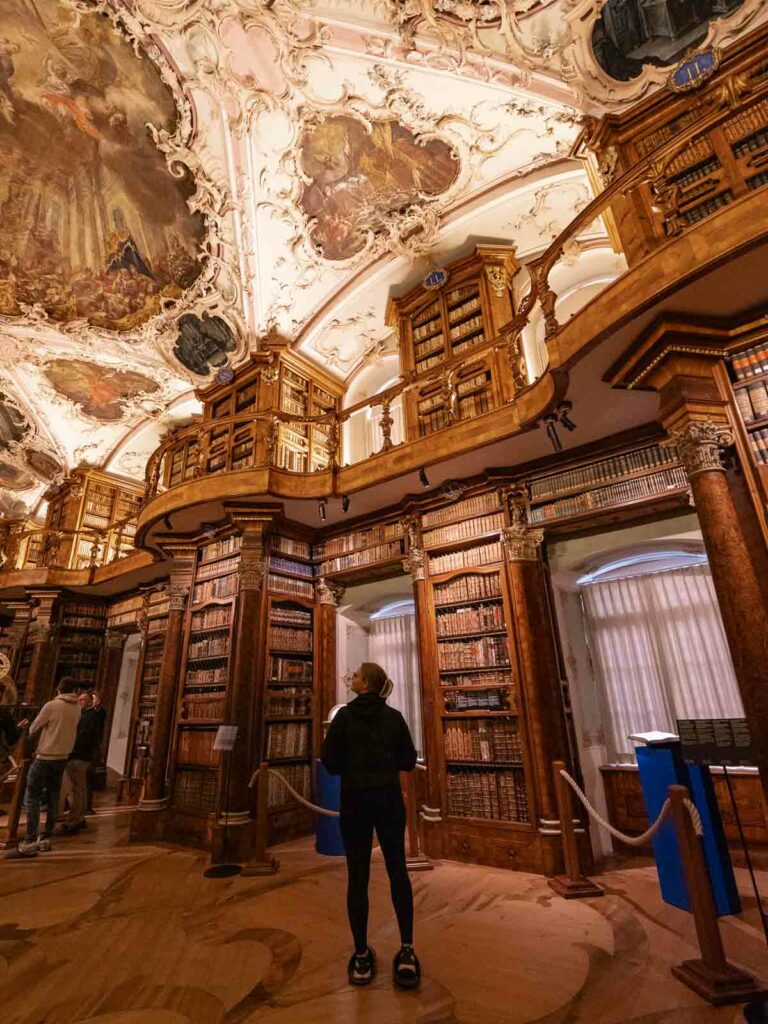
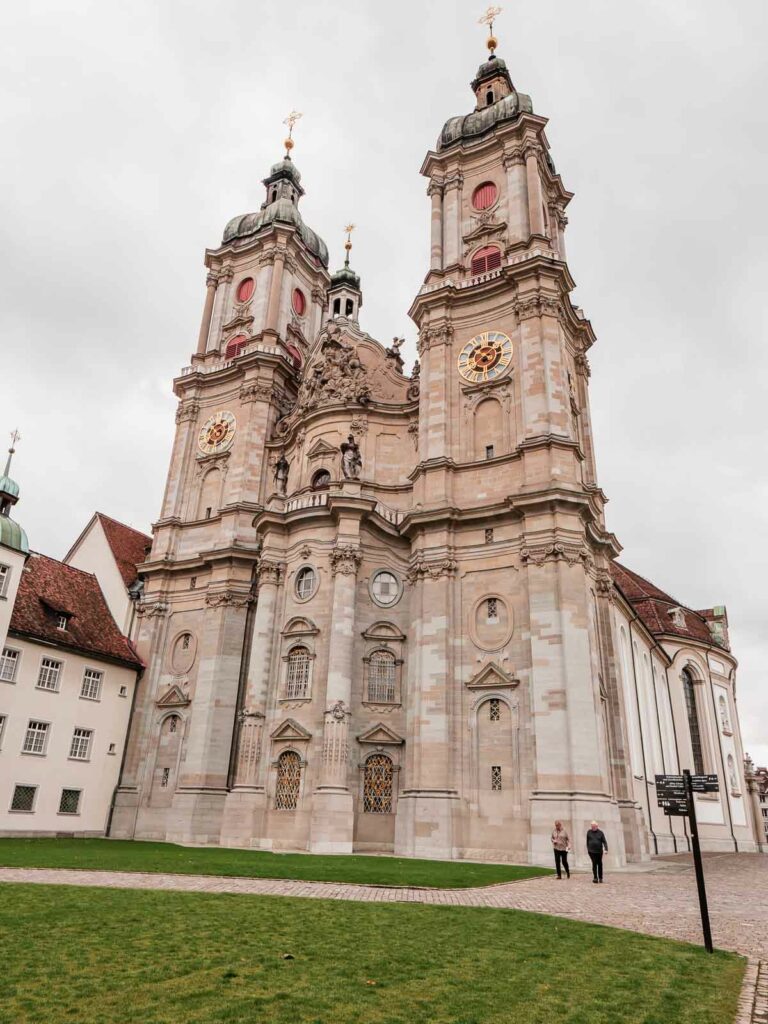
How to get from St Gallen to Lucerne
Another reason to add St Gallen to your Switzerland itinerary is so that you can tick the iconic Voralpen Express off your train bucket list.
Part of the Grand Train Tour of Switzerland, the Voralpen Express runs hourly from St Gallen to Lucerne, taking 2h 15m to cover a distance of 125km. The scenery from this train is beautiful, not as dramatic as some other trains later on in this itinerary but still definitely worth it.
This train is fully covered by a Swiss Travel Pass or other rail pass, no seat reservations required.

About Lucerne
From one historic city to another, Lucerne is the epitome of Swiss charm. Nestled between countless snow-capped peaks, it’s the kind of place where every turn offers a postcard-worthy view, from the historic Kapellbrücke (Chapel Bridge) with its iconic water tower, to the beautifully painted facades of the old town buildings.
Lucerne is the perfect place to travellers seeking a blend of culture and nature, it’s much less businessy (that’s a word now) than Zurich and is a gateway to mountain adventures and lake activities alike.
Things to do in Lucerne
- Take a tour around the city to get your bearings, there’s this walking & boat tour, a self-guided walking tour & scavenger hunt, or I love the look of this top-rated Night Watchman Historical Tour
- See the city and mountains from a lake cruise, or splurge on one with a 3-course lunch included
- Visit the Swiss Museum of Transport to unravel the history of Switzerland’s trains, cars, boats and planes
- Go on a day trip to one of the nearby mountains, I’ll give you some details on each of the options in the next section of this blog
- Treat your taste buds with a food tour
- Do a small group wine tasting tour
- Go paragliding
- Join a photography walking tour if you’re a budding shutterbug
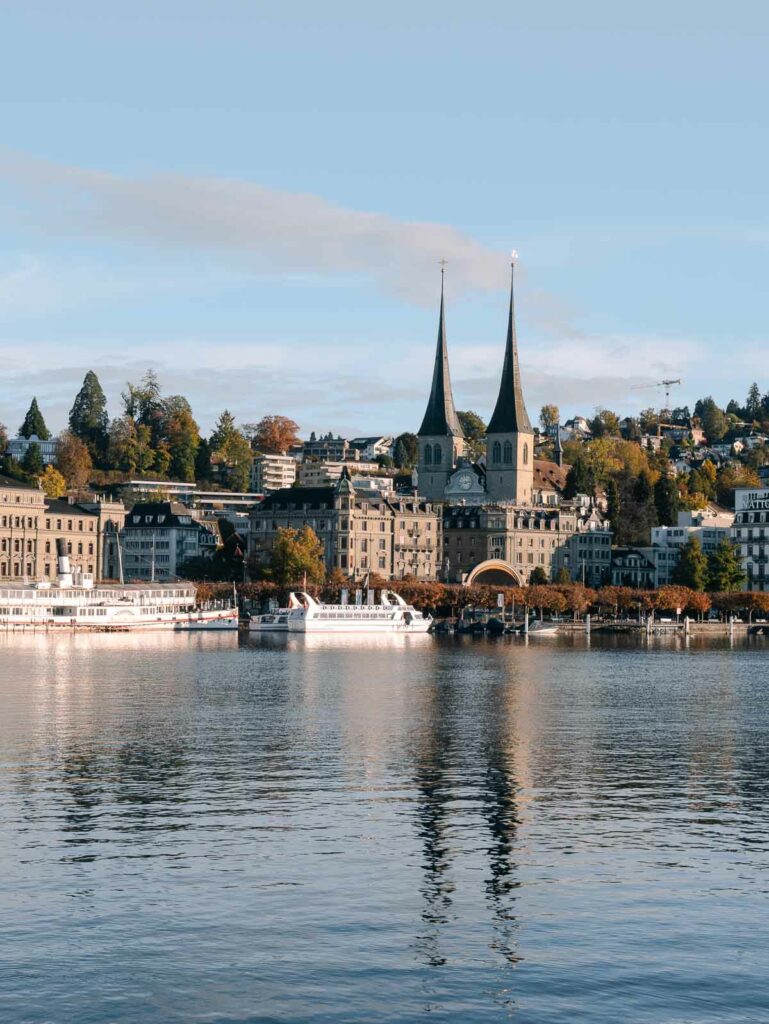
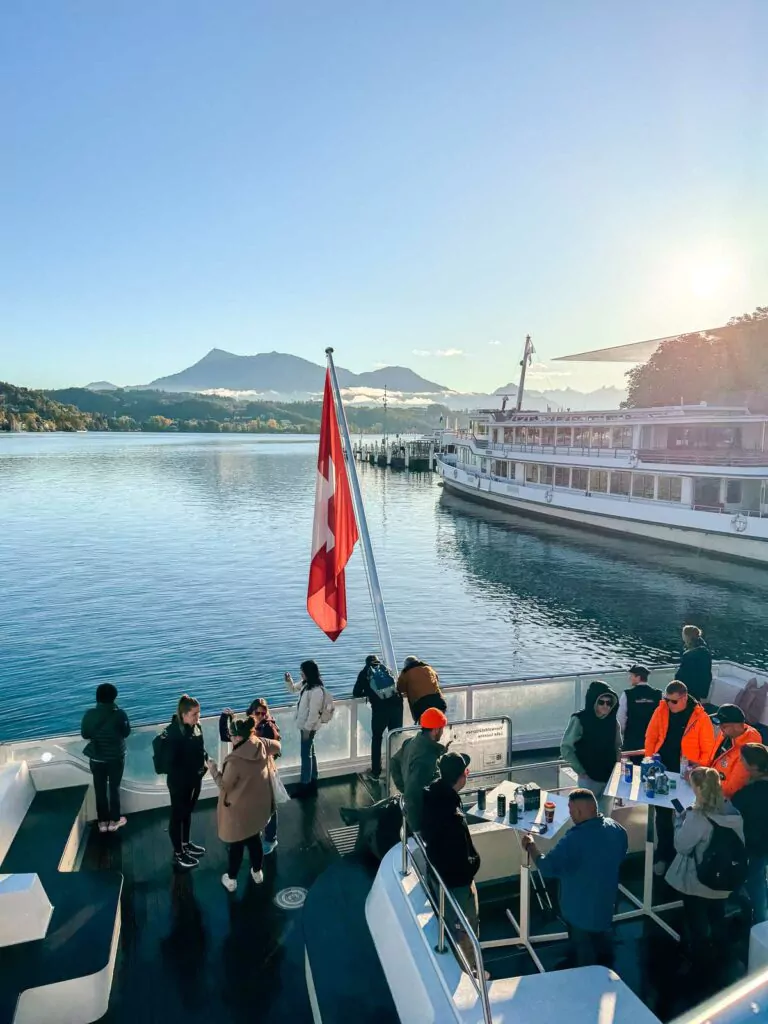
Where to stay in Lucerne
Budget
- Backpackers Luzern (my go-to for a cheap and cheerful stay, it’s a 15 minute walk from the train station and has clean, comfortable rooms at a decent price. Nothing fancy, but fine for a short stay!)
- Hotel Sonnenberg (top-rated budget hotel out of the city but easily reached by funicular)
- Hotel Beau Séjour Lucerne (simple but cute budget hotel with affordable private rooms)
Mid-range
- On my most recent trip I stayed at the Lubo, a funky smart-hotel right in the historic city centre. Spacious room with a big, comfy bed, a kitchenette, breakfast at a lovely cafe downstairs, and access to washing machines. I’d happily stay here again!
- Hotel des Balances (a tasteful 4* hotel with gorgeous views)
- Hotel Rebstock (quirky, quality accommodation for a good price)

Luxury
- Lucerne Lake View Apartments (dreamy apartments with full kitchens and epic views)
- Bürgenstock Hotels & Resort (25 mins from Lucerne, a true luxury resort experience amongst the mountains)
- Hotel Villa Honegg (this one is probably in the top ten of my personal accommodation bucket list because of its mountaintop infinity pool)
Day 3: Lucerne + mountain day trip to Rigi, Pilatus or Stanserhorn
Start off your full day in Lucerne with a delicious breakfast, I love ROKKA for somewhere easy and affordable, or Melissa’s Kitchen for something a bit heartier.
After breakfast, pack a day bag and get ready to head out on an adventure into the mountains. There are a few to choose from so here’s a bit of a rundown to help you pick what suits you best.
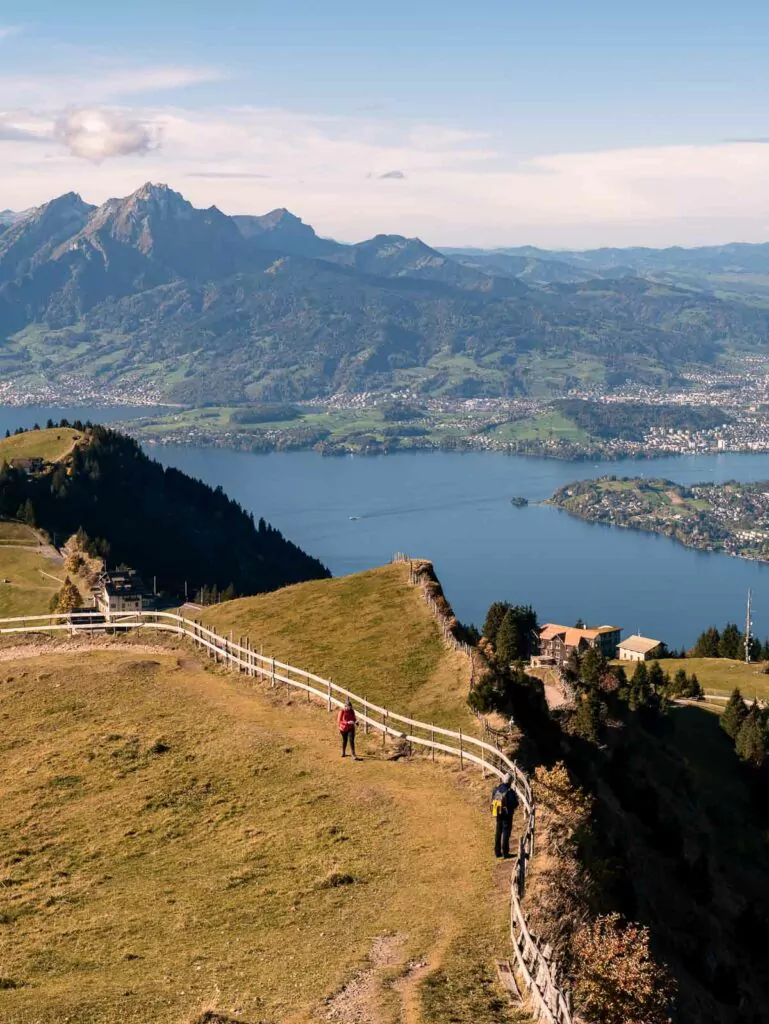
Mount Rigi
Open all year but timetables vary, check here
How to get there
You can catch a boat to Vitznau, then switch to a cogwheel train to Rigi Kulm, or you can catch a train to Arth-Goldau and switch to a cogwheel to Rigi Kulm.
Or you can combine both and do the boat-cogwheel first and then cogwheel-train on the way back!
Highlights
- Known as the ‘Queen of the Mountains’, offering stunning 360-degree views of the Alps and lakes
- Europe’s first mountain railway, the Rigi Mountain Railways, dating back to 1871
- Beautiful mineral baths at Rigi Kaltbad
- Hiking trails suitable for all levels
- Rigi is open year-round, mainly offering hiking and sightseeing in summer, and hiking, snowshoeing, sledding and skiing in winter
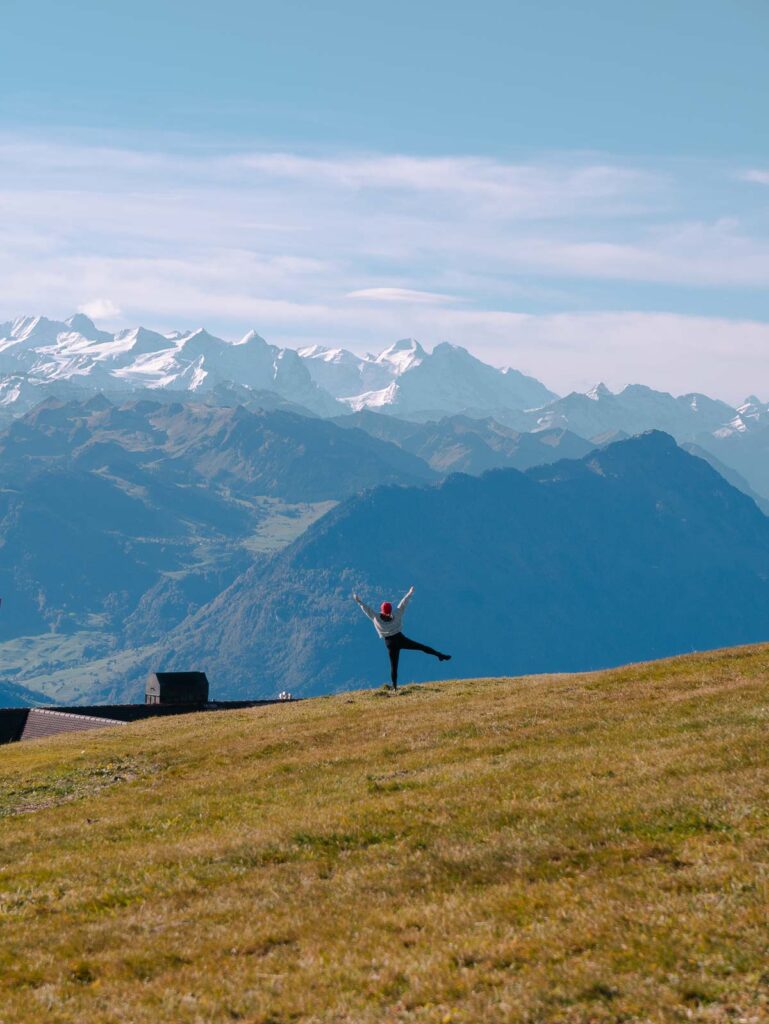
Price & discounts
It depends on the route you choose:
- 10-14CHF one way for the train between Lucerne and Arth-Goldau
- 31CHF one way for the boat between Lucerne and Vitznau
- 78CHF return from either Arth-Goldau or Vitznau to Rigi Kulm (you can go up one way and down the other)
And the mountain railway discounts are:
- 100% discount on the whole journey with Swiss Travel Pass or Tell-Pass
- 50% discount on the whole journey with Swiss Half Fare Card
- 50% discount on the mountain railways and the Lake Lucerne boat with a Eurail Pass or Interrail Pass (no need to use a travel day)
Book tickets on the official Rigi website >>
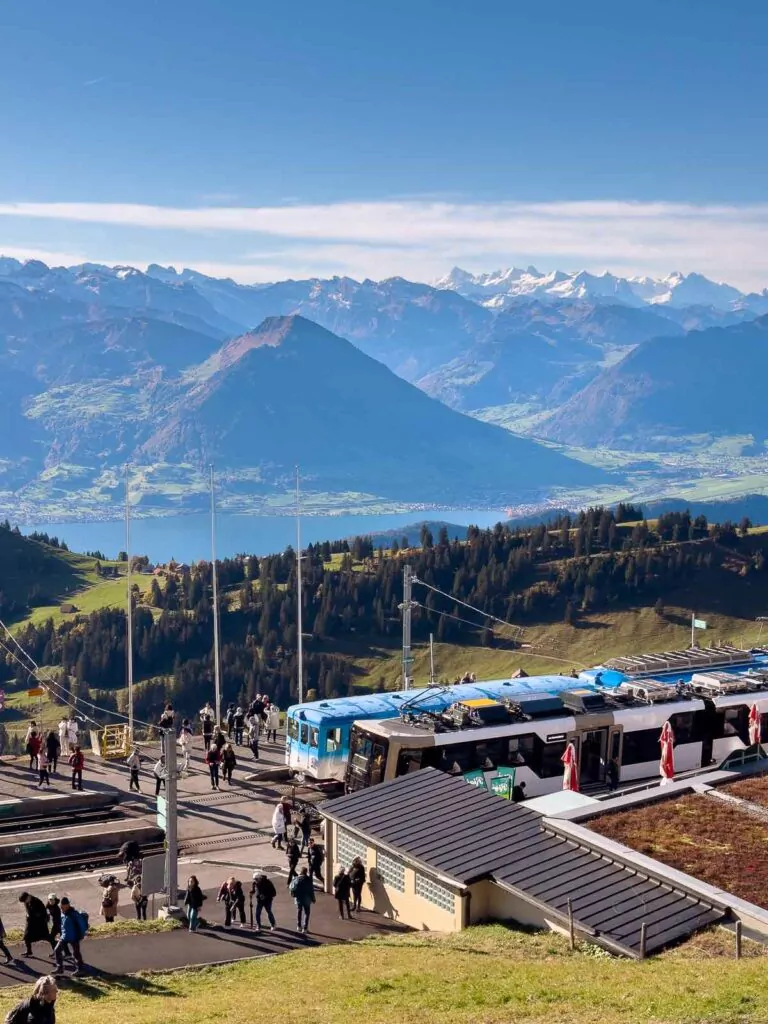
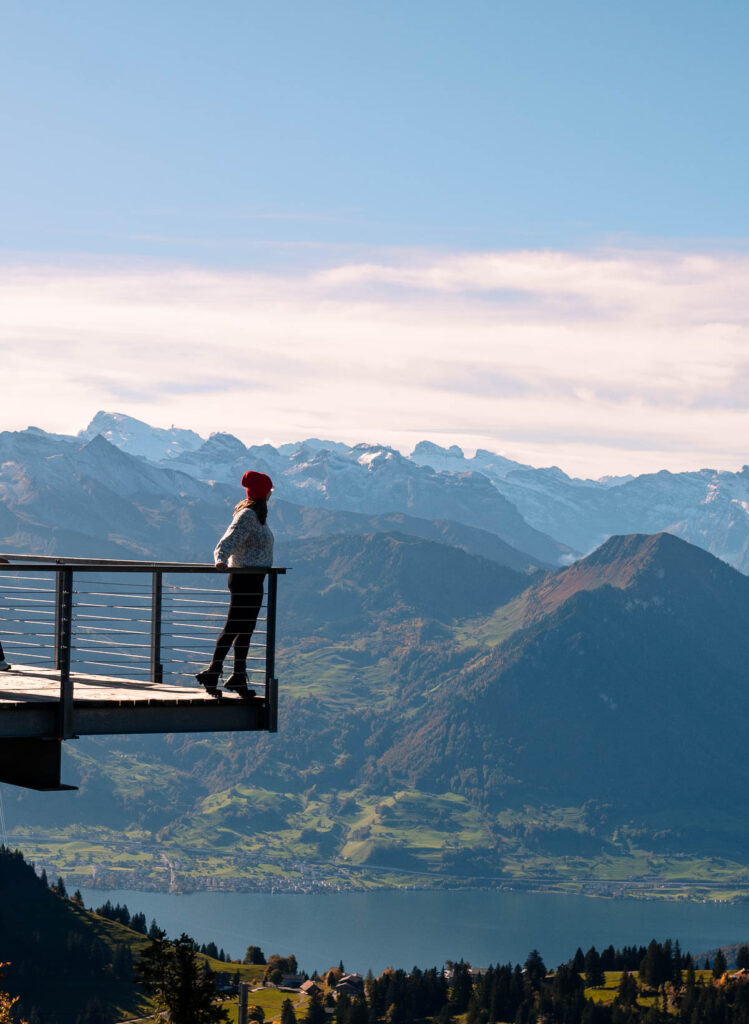
Stanserhorn
Open from 12 April to 23 November 2025
How to get there
Catch an easy 15-20 minute train from Lucerne to Stans, walk a couple of minutes to Stanserhornbahn and then jump on the vintage funicular up to Kälti midway station, which takes about ten minutes. From Kälti you change to the epic CabriO cableway for a thrilling ten minute final leg to reach the top.
Highlights
- A nostalgic trip on the restored wooden funicular carriage for the first bit
- The world’s first open-top cable car, the CabriO, offering unobstructed views
- Revolving restaurant for dining with panoramic views (but you need a seat at the edge of the revolving platform to really enjoy it)
- Suspended walkway for epic photos
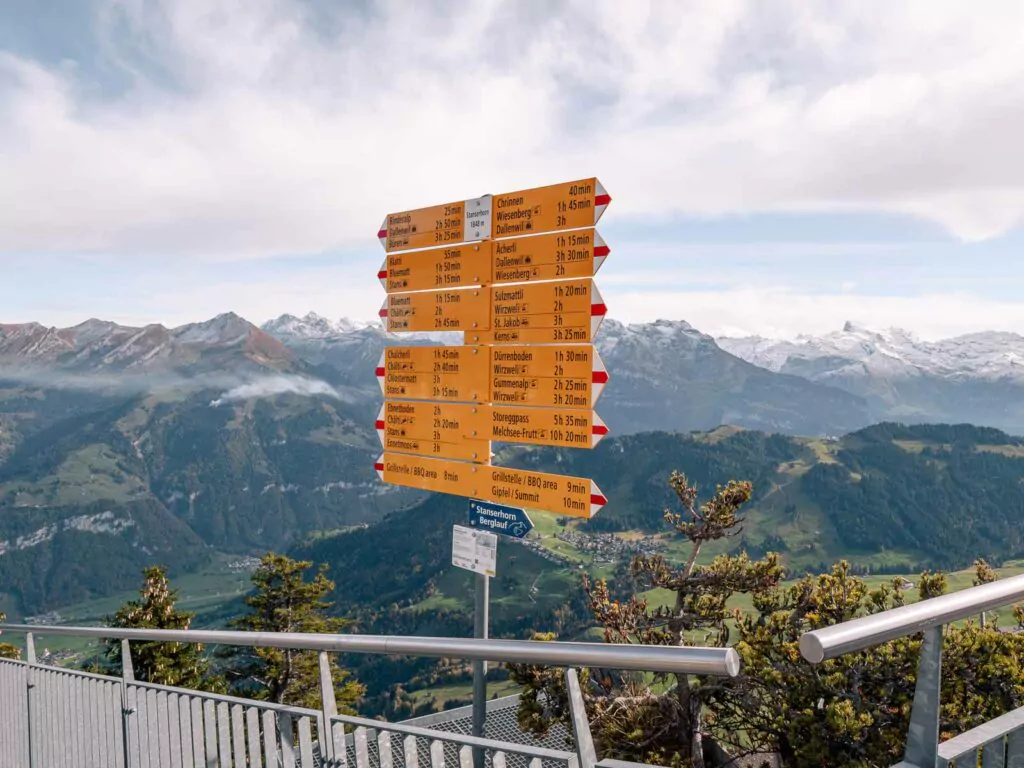
Price & discounts
- About 16CHF return from Lucerne to Stans
- 82CHF return from Stanserhornbahn to the top
And the mountain railway discounts are:
- 100% discount with Swiss Travel Pass or Tell-Pass
- 50% discount with Swiss Half Fare Card
- 25% discount with Eurail Pass or Interrail Pass (no need to use a travel day)
Book tickets on the official Stanserhorn website >>
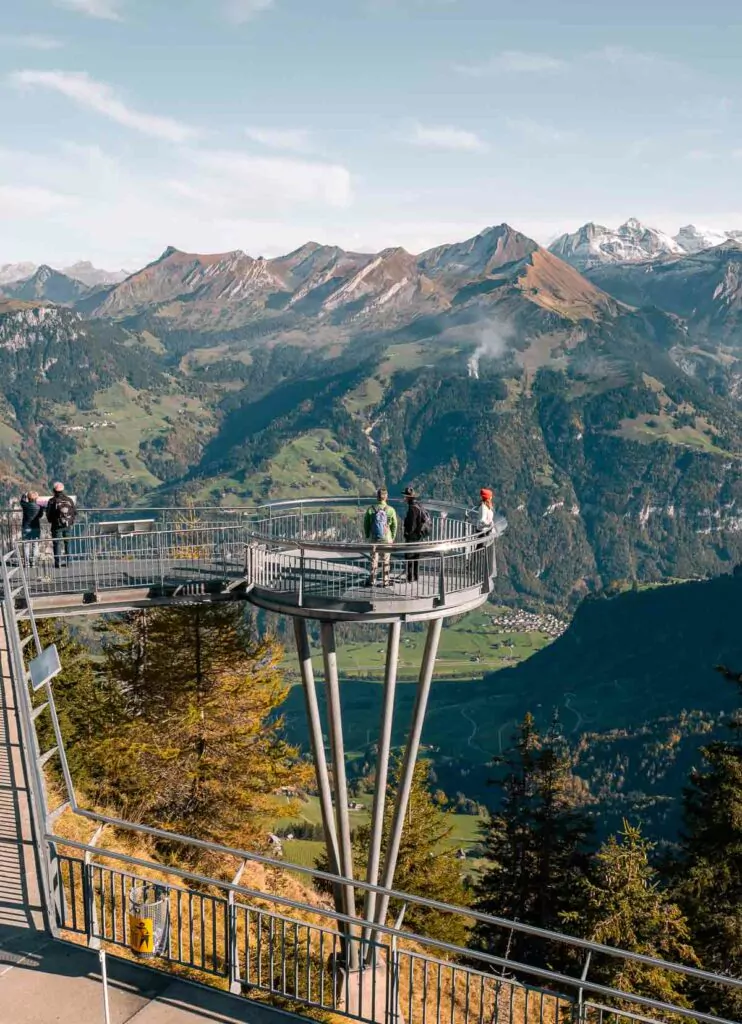
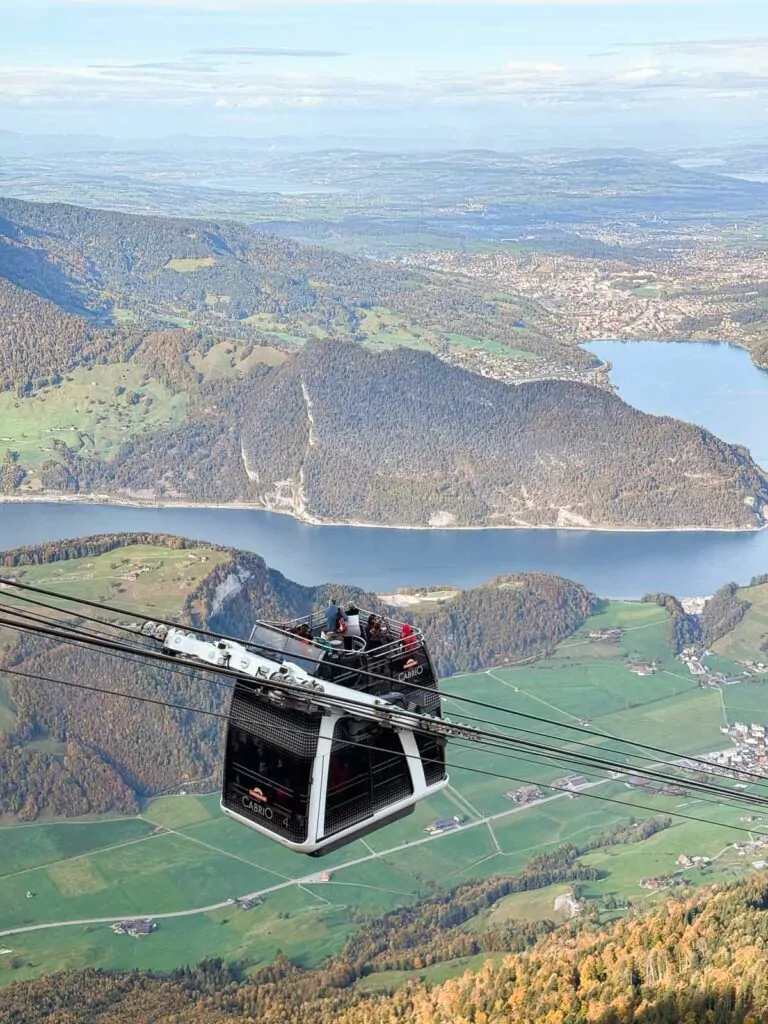
Mount Pilatus
Open year-round but some travel options are seasonal
How to get there
There are a few different ways to get to and from Mount Pilatus.
- Take a boat across Lake Lucerne to Alpnachstad (available from 12 May to 19 October 2025) or take a train from Lucerne to Alpnachstad, then switch to the cogwheel train to reach the summit (cogwheel train runs from 12 May to 16 November 2025)
- Bus to Kriens, catch the panoramic gondola to Fräkmüntegg, then change to the ‘Dragon Ride’ aerial cableway to the top (runs year-round except for maintenance on 7/8 April 2025 and from 20 October to 7 November 2025)
- Combine the boat, cogwheel, cable cars and train to create a loop, this is called the ‘Golden Round Trip’
- Combine the bus, cogwheel, cable cars and train to create a loop (just no boat), this is called the ‘Silver Round Trip’

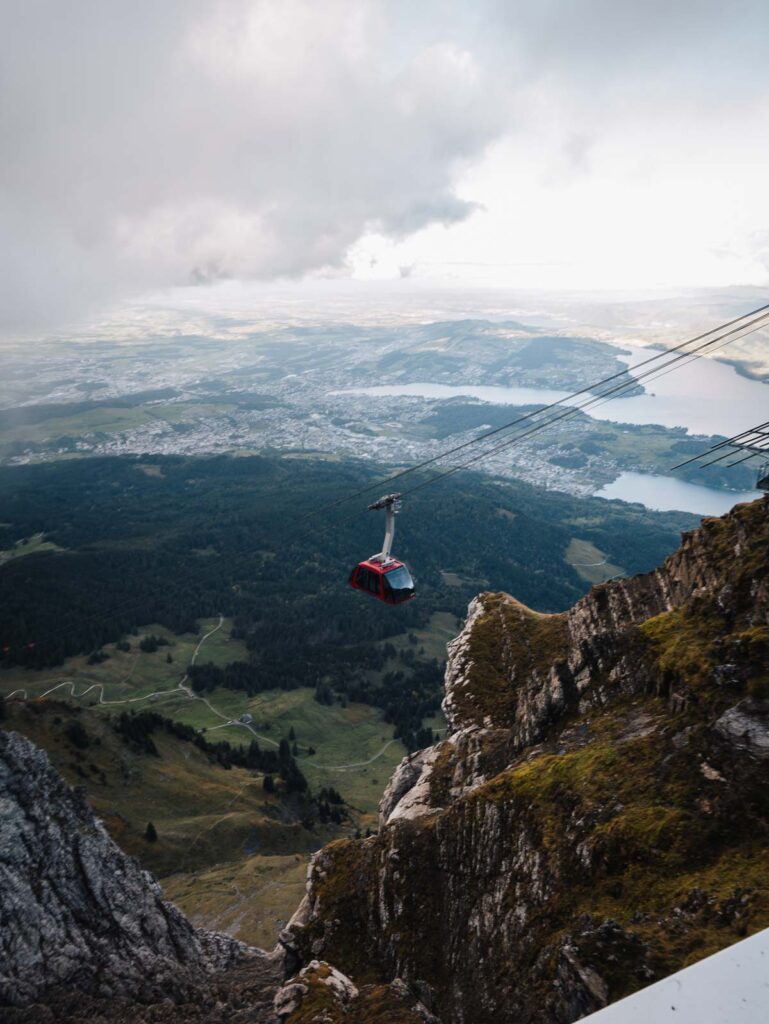
Highlights
- World’s steepest cogwheel railway
- Panoramic aerial cableway and gondolas to Kriens
- Family-friendly activities like a rope park, Pilu-Land playground, toboggan run and ibex safari
- Astronomy evenings including accommodation up the mountain
- Some cool culinary experiences like fondue in the panoramic gondola and an Easter brunch event
Price & discounts
- 115.80CHF for the full Golden Round Trip, 132.80CHF if you want access to the 1st class boat deck
- 90.20CHF for the Silver Round Trip
- 9.60CHF to get from Lucerne to Kriens return, then 80CHF for a return ticket up and down the aerial cableways (if you don’t want to go on the cogwheel or if it’s closed)
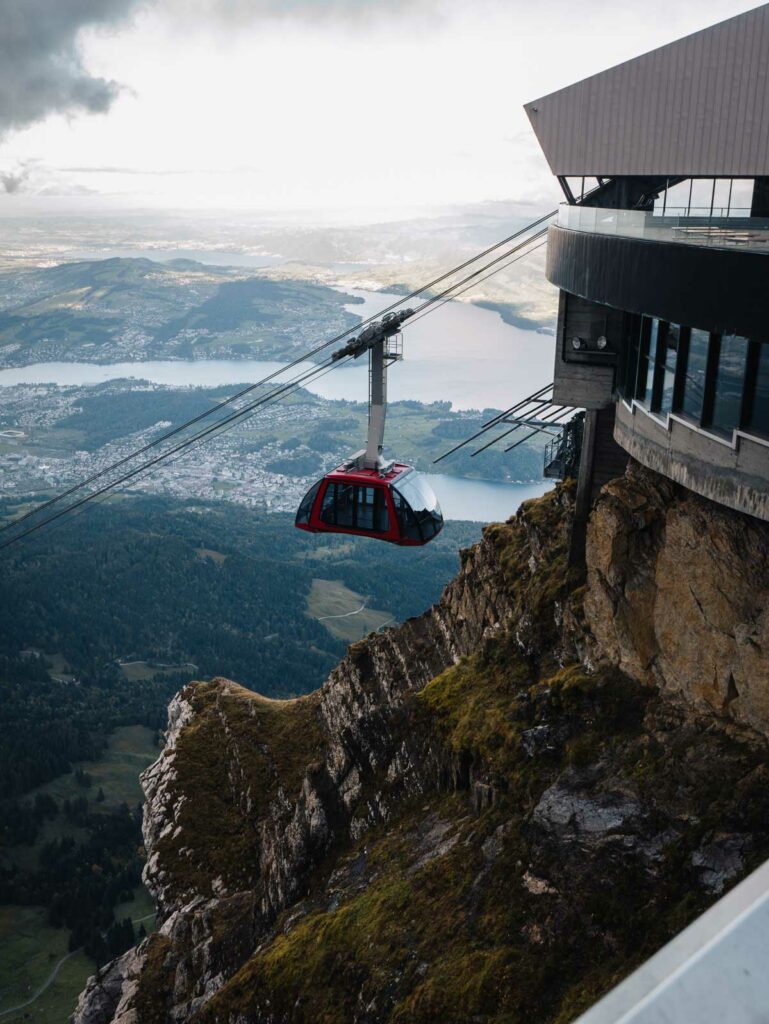
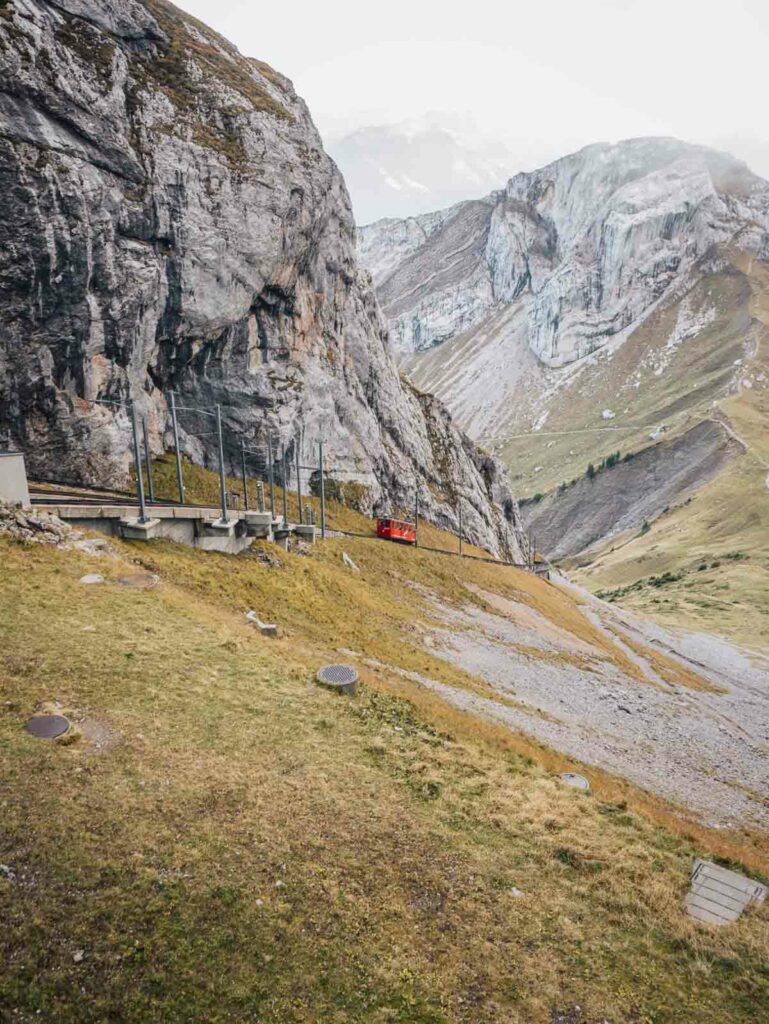
There are some somewhat complex discounts available too:
- A Tell Pass gets the whole Lucerne to Pilatus trip included
- A Swiss Half Fare Card gets the whole trip at half price
- A Swiss Travel Pass will cover your transport between Lucerne and Alpnachstad (bus or boat) and/or Kriens (train) for free, and you’ll get 50% off the Pilatus cogwheel railway and aerial cableways
- A Eurail/Interrail Pass will get you 50% off the boat trip to Alpnachstad and 50% off the Pilatus cogwheel railway and/or aerial cableways (no need to use a travel day)
Book tickets on the official Pilatus website >>
Mount Titlis
Open year-round except for maintenance from 3-14 November 2025
How to get there
Catch a 43 minute train to Engelberg, walk a short way to the cable car station, then it’s a trip on the Titlis Xpress cable car to Stand station and a quick switch to the Titlis Rotair revolving cable car to Titlis. The cable cars take about 30 minutes all up.
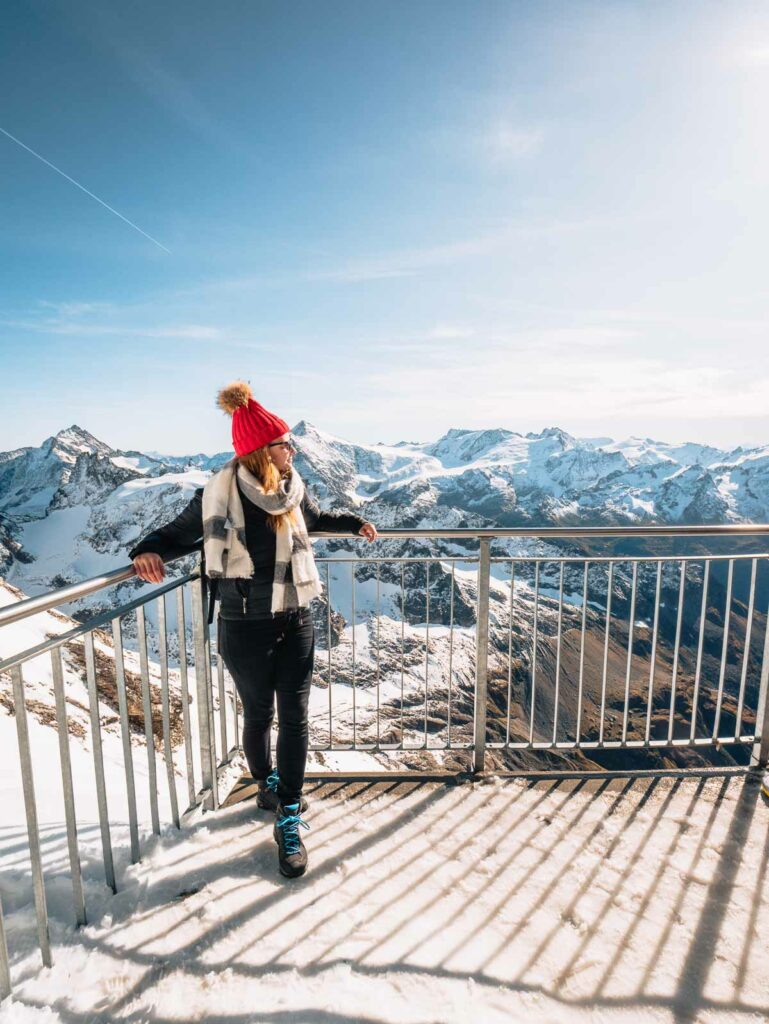
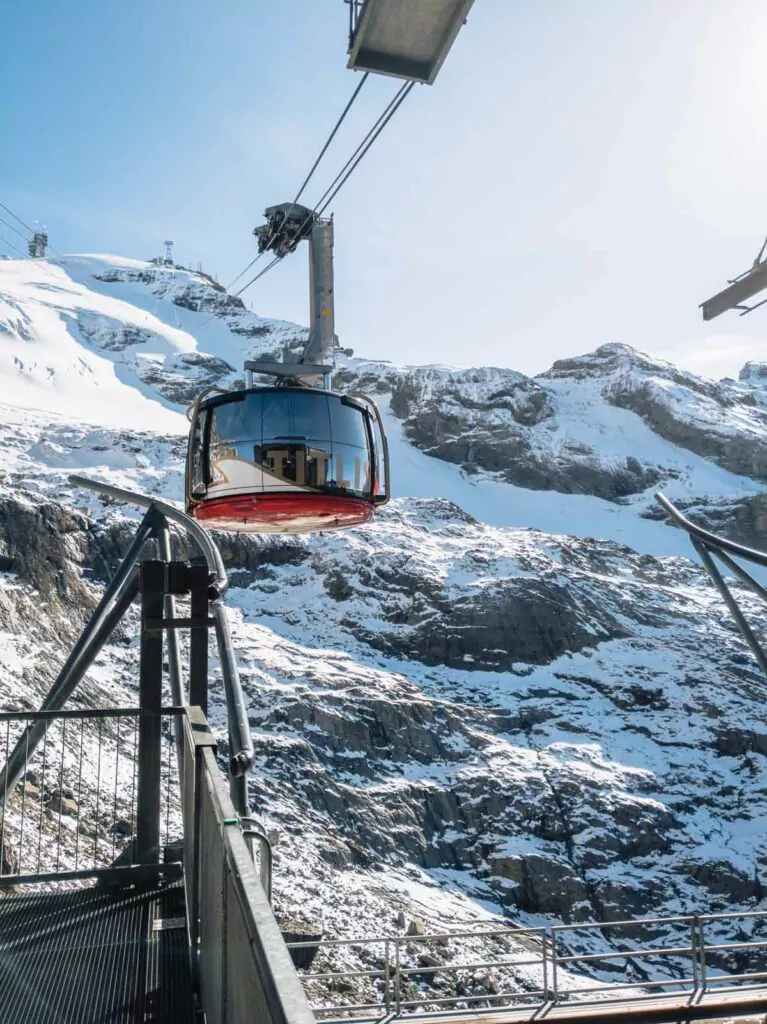
Highlights
- The world’s first rotating aerial cableway, taking ‘panoramic views’ to the next level!
- The Titlis Cliff Walk, Europe’s highest suspension bridge
- A 150m-long path 10 metres below the surface of a glacier
Price & discounts
102CHF return from Engelberg to Titlis, and about 36.40CHF to get from Lucerne to Engelberg and back.
And the cable car discounts:
- A Tell Pass gets the whole trip included
- A Swiss Half Fare Card gets the whole journey half price
- A Swiss Travel Pass gets to Engelberg for free and then half price to Titlis
- A Eurail/Interrail Pass gets 25% off the cable car to Titlis (no need to use a travel day)
Book tickets on the official Titlus website >>
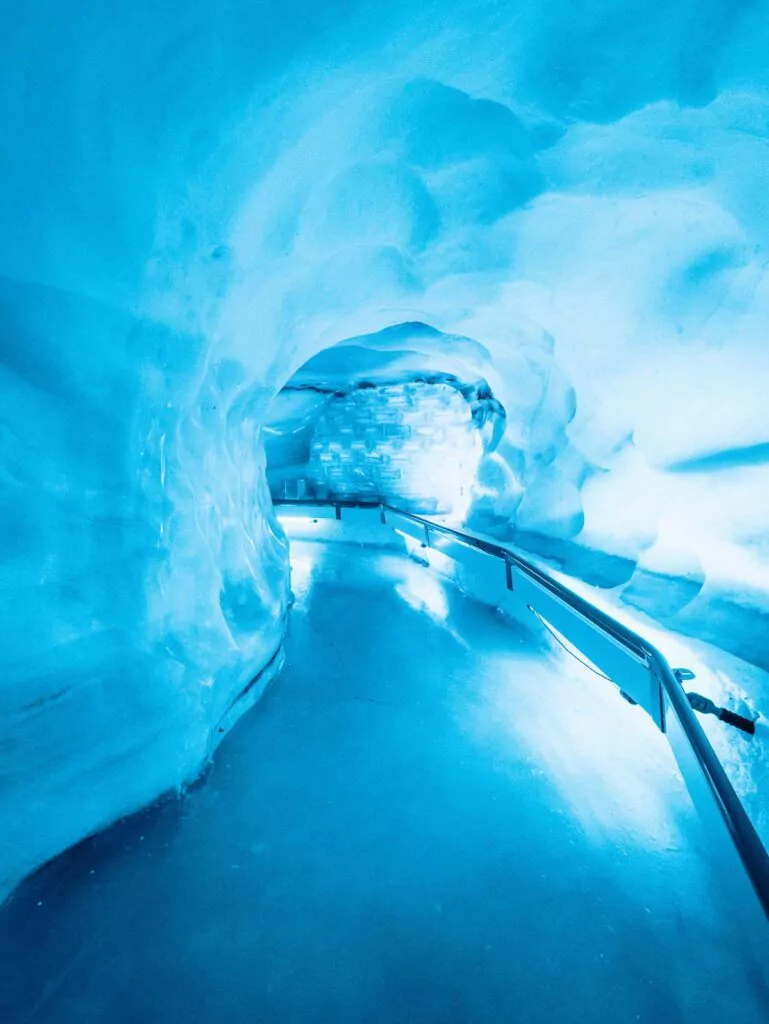
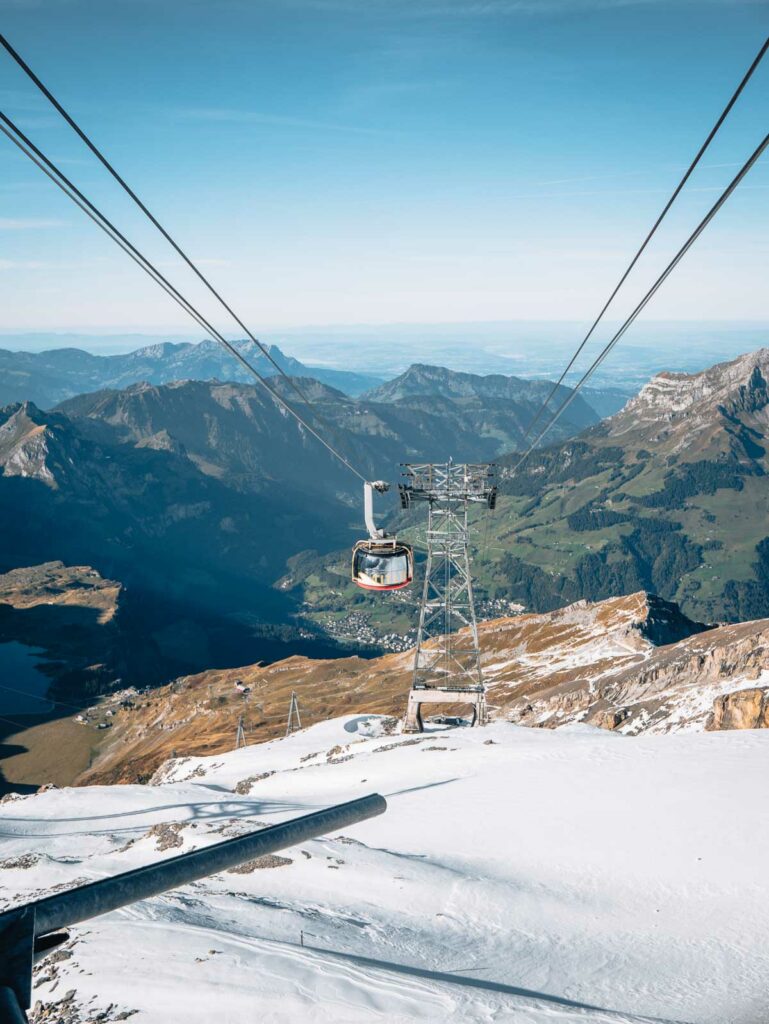
Can you do more than one mountain day trip from Lucerne in one day?
If you’re travelling in summer (longer days and potentially later cogwheel/cableway departures) and don’t mind rushing, you could technically do two mountain trips in one day,
The easiest two to combine would be Rigi and Stanserhorn, I did this on my last trip and it was more than enough time to experience the views at both without rushing.
Titlis and Pilatus have more activities/things to do so it might be trickier, but still doable in summer if you don’t mind waking up early and not spending too much time at the summits. Here’s an example:
- 7.42am train from Lucerne to Alpnachstad, cogwheel train from Alpnachstad to Pilatus Kulm at 8.10am, arriving at the top at 8.37am
- Spend an hour enjoying the view and grabbing some breakfast at the restaurant
- Depart Pilatus Kulm at 10am on the aerial cableways, reaching Kriens at 10.49am, then catch a train to Lucerne arriving at 11.01am
- That leaves more than enough time to head to Titlis (you’d arrive at the Titlis summit at 12.27pm at the earliest), Rigi (you’d arrive at Rigi Kulm at 12.47pm at the earliest) and Stanserhorn (earliest arrival of 11.24am)
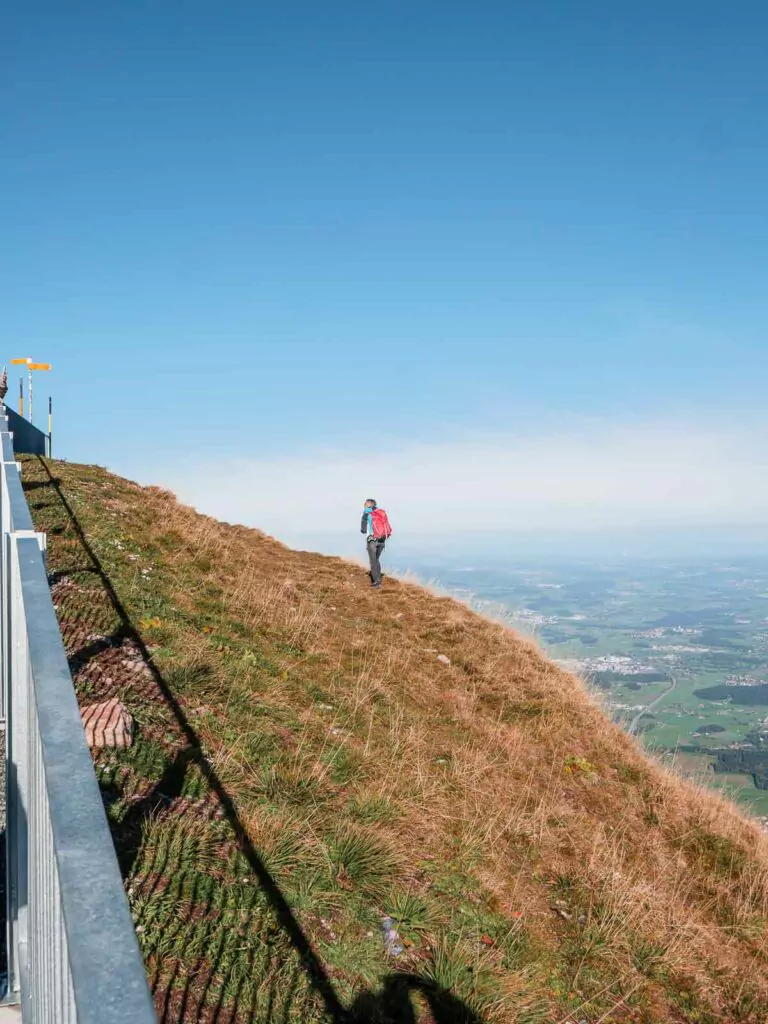
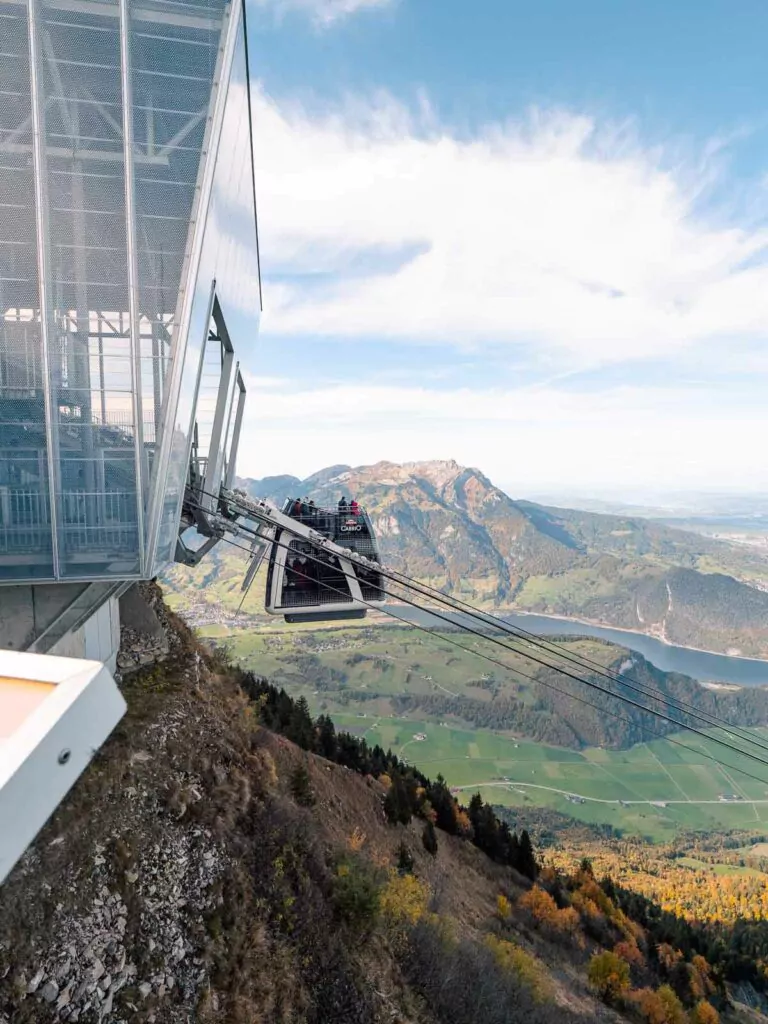
Day 4: Lucerne to Grindelwald
Say ‘tschüss’ (bye!) to Lucerne and get ready to head towards some magical mountain villages.
I’ve got two nights in Grindelwald (days 4 & 5) and then two nights in Interlaken (days 6 & 7) on this 10 day Switzerland itinerary, but technically you could spend all four nights in Grindelwald, all four in Interlaken, split them differently or stay in another mountain village like Lauterbrunnen, Wengen or Murren instead.
I just chose Grindelwald as it offers the easiest access to Grindelwald-First and has more accommodation options than other villages.
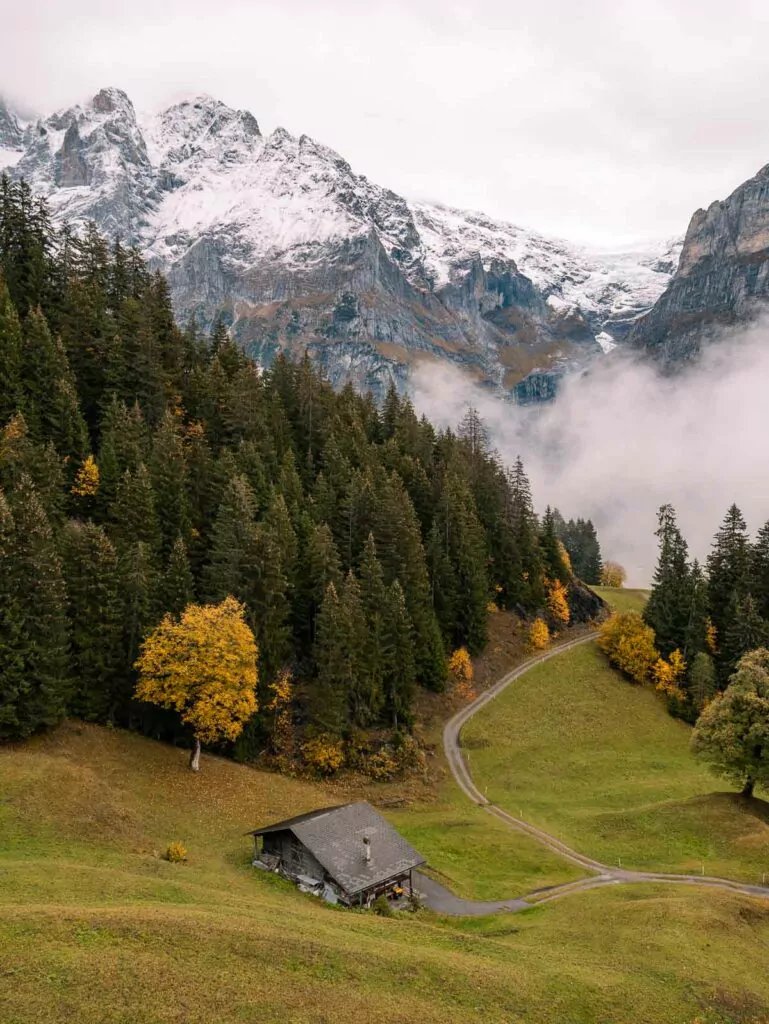
How to get from Lucerne to Grindelwald
First off you’ll take the iconic Luzern-Interlaken Express, another segment of the Grand Train Tour of Switzerland. Over the 1h 50m journey you’ll pass by five magnificent alpine lakes, rugged mountains and quintessential Swiss rural landscapes.
This trip is fully covered by the Swiss Travel Pass/Eurail/Interrail Pass, seat reservations aren’t required but if you’re travelling during a busy period (weekend in summer or school holidays) it would be worth reserving a window seat just in case.
From Interlaken you switch to a direct train to Grindelwald that takes 36 minutes and voila, you’re in your home for the next couple of nights.
This portion of the trip (and any trains from Interlaken into the mountain villages) used to not be covered by Eurail/Interrail, you could only get a 25% discount, but your Eurail/Interrail Pass now covers all BOB (Berner Oberland Bahn) trains which includes Wilderswil, Lauterbrunnen, Wengen and Grindelwald. This change was made in late 2023. Woohoo!
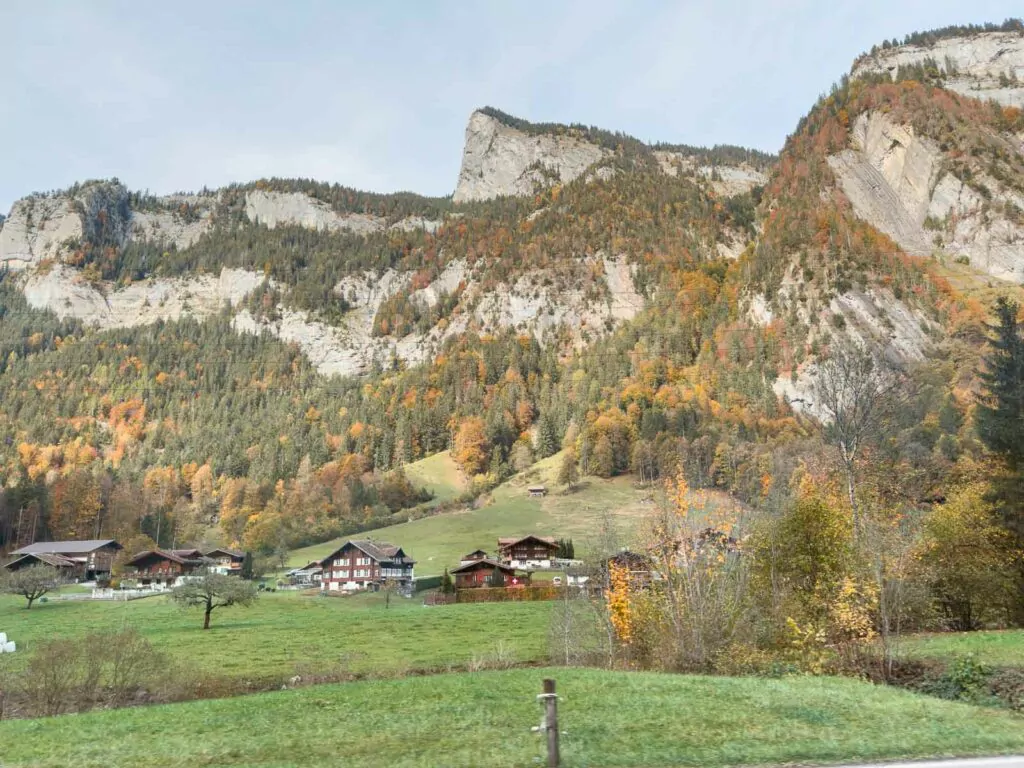
About Grindelwald
Grindelwald is the picture of alpine perfection, nestled at the foot of three towering peaks (Eiger, Mönch, and Jungfrau) that make the village one of the best places to stay for those looking for mountain adventures.
Visitors get easy access to a patchwork of hiking trails, scenic mountain railways, panoramic cable cars and endless snow activities in winter. Grindelwald-First is a playground for the adventurous, and Jungfrau’s Top of Europe experience is an essential inclusion on any Switzerland itinerary.
The village itself is touristy, obviously, but it’s still quaint and charming with cosy eateries, a decent range of accommodation for different types of travellers, and the classic Swiss hospitality you expect in the mountains.
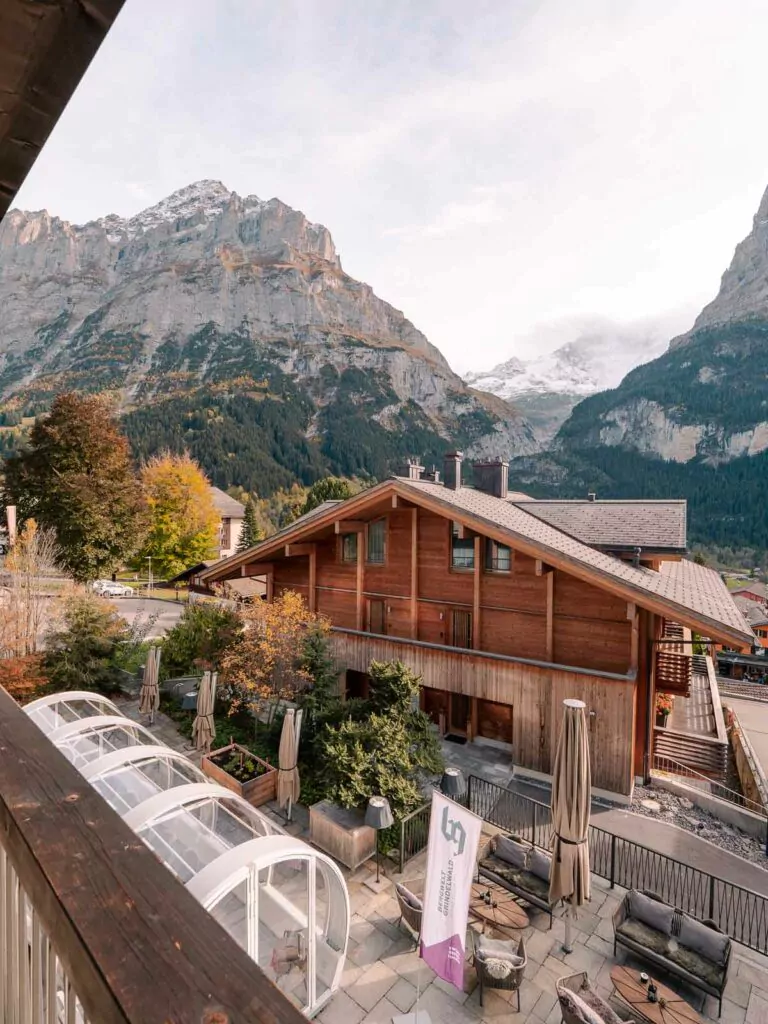
Things to do in Grindelwald
- Take a scenic gondola ride up Grindelwald-First to enjoy the majestic mountain landscapes
- Experience the thrill of the First Flyer zipline at the top
- Or try a different type of zipline with the First Glider, where you’re facing the ground horizontally like in a hang glider. Seriously freaky!
- Navigate the Cliff Walk for a bit of an adrenaline rush and stunning panoramic views
- Zoom down Grindelwald-First on the toboggan run
- Take a guided walk in the mountains with Swiss cheese and chocolate tasting
- Stroll through Grindelwald village to soak in the traditional Alpine charm
- Hike the Eiger Trail for close up views of Eiger’s North Face (for experienced hikers)
- Explore the area on a mountain bike along well-marked trails
- Enjoy a fondue night at a local chalet for a taste of Swiss culinary tradition
- If it’s a rainy day, visit the indoor rope park for some family-friendly climbing fun
- Do a sledding safari with a chocolate degustation at the end
- Ski or snowboard in winter
- Marvel at the spectacular walkway at the top-rated Glacier Canyon attraction
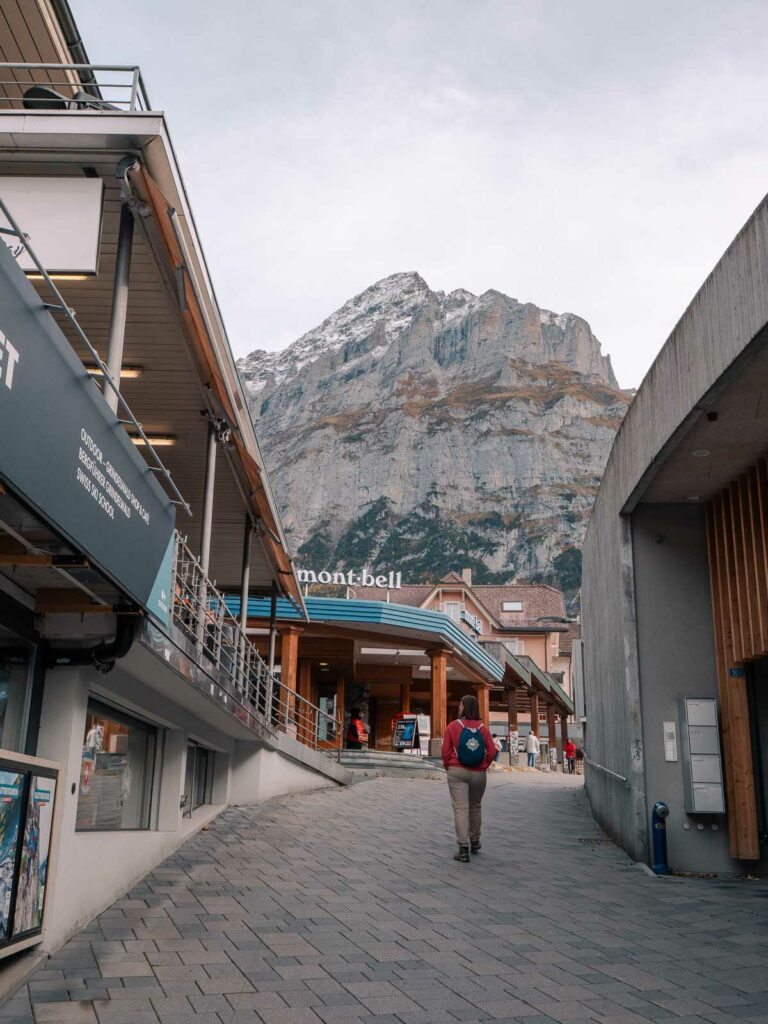
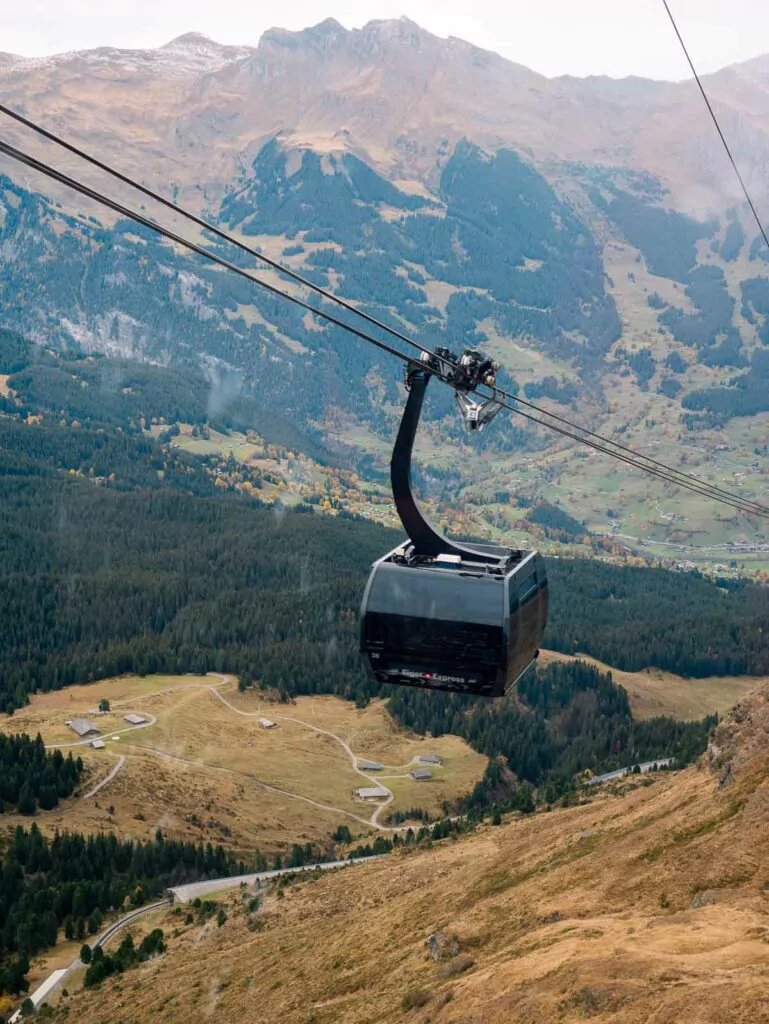
Where to stay in Grindelwald & nearby
Budget
- Grindelwald Youth Hostel (cheap and cosy, a classic backpacker hostel)
- Basic Rooms Jungfrau Lodge (decent single rooms with shared bathrooms to keep costs down)
- Valley Hostel in Lauterbrunnen is also a great option for budget travellers, with a kitchen unlike most other hostels in the mountains
Mid-range
- Hotel Gletschergarten (top-rated traditional alpine hotel)
- Hotel Cabana (affordable hotel with excellent views)
- Hotel Spinne Grindelwald (the cheapest hotel in Grindelwald that has a pool/spa)
Luxury
- I stayed at the incredible Bergwelt Grindelwald and oh my gosh, I’m obsessed. It’s a 4* hotel but absolutely feels 5* from the moment you catch the shuttle from the train station. Stunning interior design, super friendly and helpful staff, a lovely wellbeing area with both indoor and outdoor pools, and an ideal location just a short walk to the First gondola. Honestly pure magic.
- Boutique Hotel Glacier (super stylish, the higher-end rooms have mountain-view balconies with built-in spa baths)
- If you’re travelling with a group of friends or family, some top-rated luxury apartments are the Grindelwald Penthouse, Chalet Rothenegg and Bergwelt Grindelwald Residence
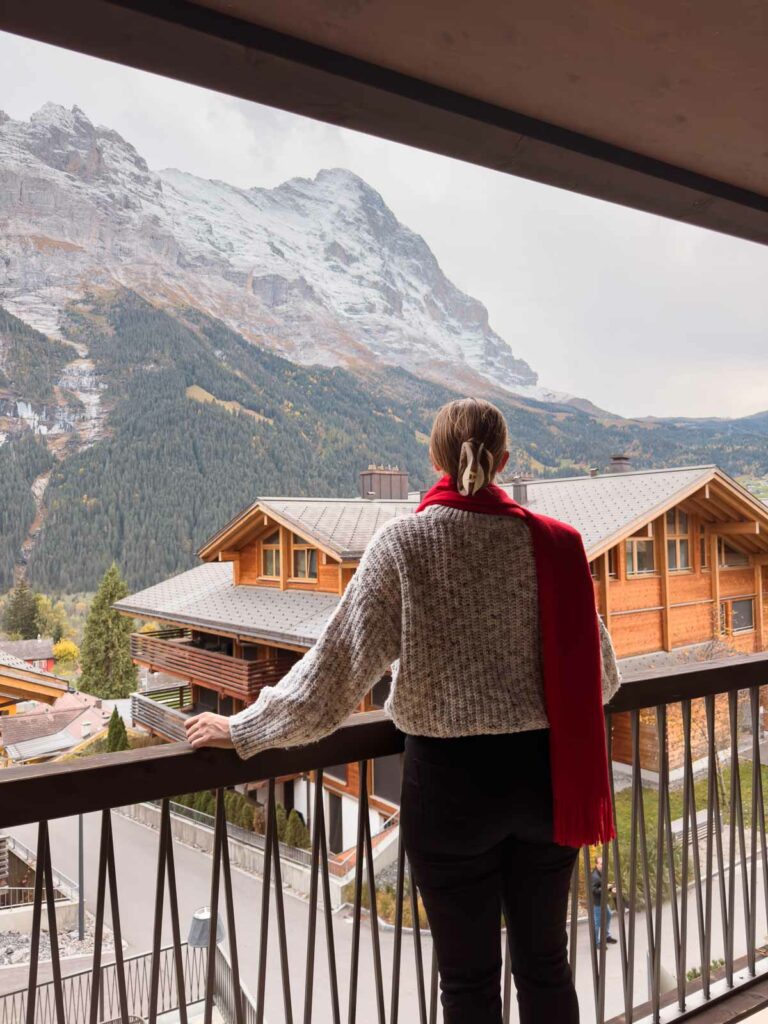
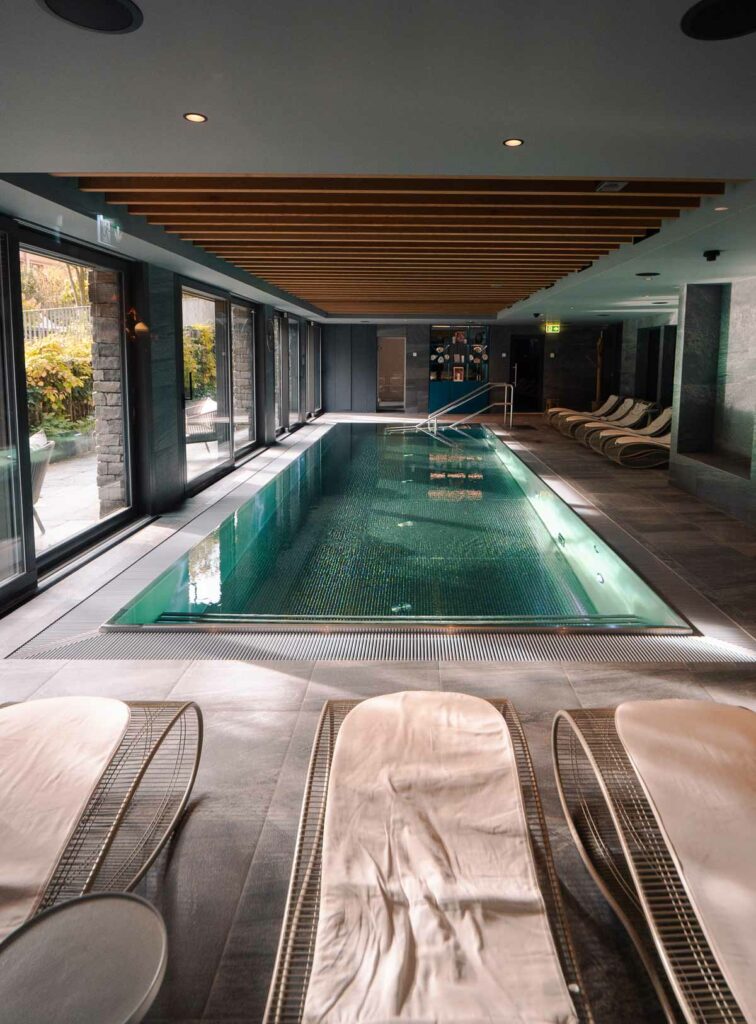
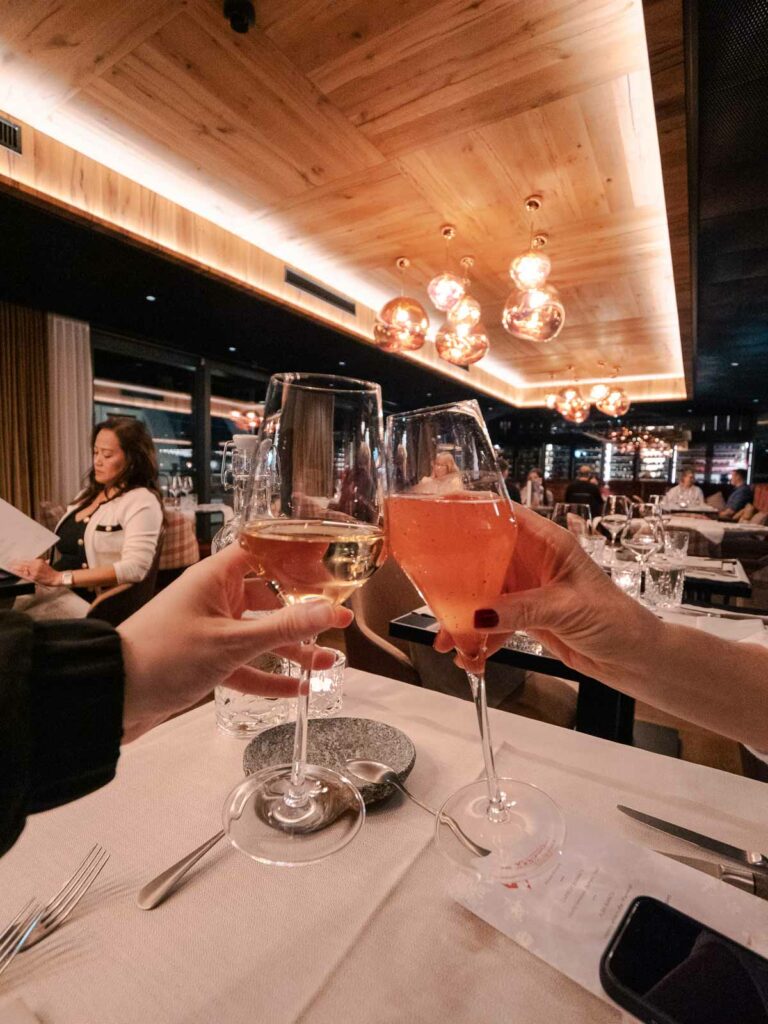
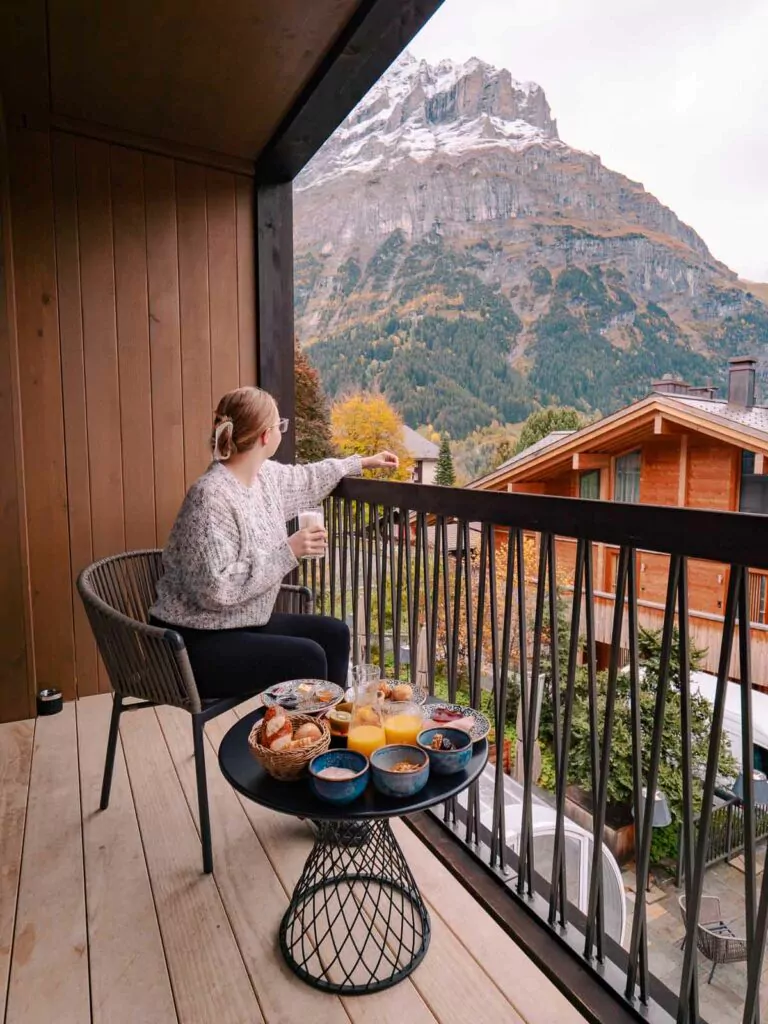
Day 5: Jungfrau or Grindelwald mountain day trip
You’ve got a full day in Grindelwald, and there’s nothing better to do here than to head up into the mountains.
You can choose from Jungfrau or Grindelwald-First, or if you’re a keen bean who likes a challenge, do both!
If you’re spending three or more days in the Jungfrau region, which includes Interlaken, Jungfrau, Grindelwald, Lauterbrunnen and more, the Jungfrau Travel Pass might be worth it for your trip. Check out my full Jungfrau Travel Pass review with example itineraries and calculations.
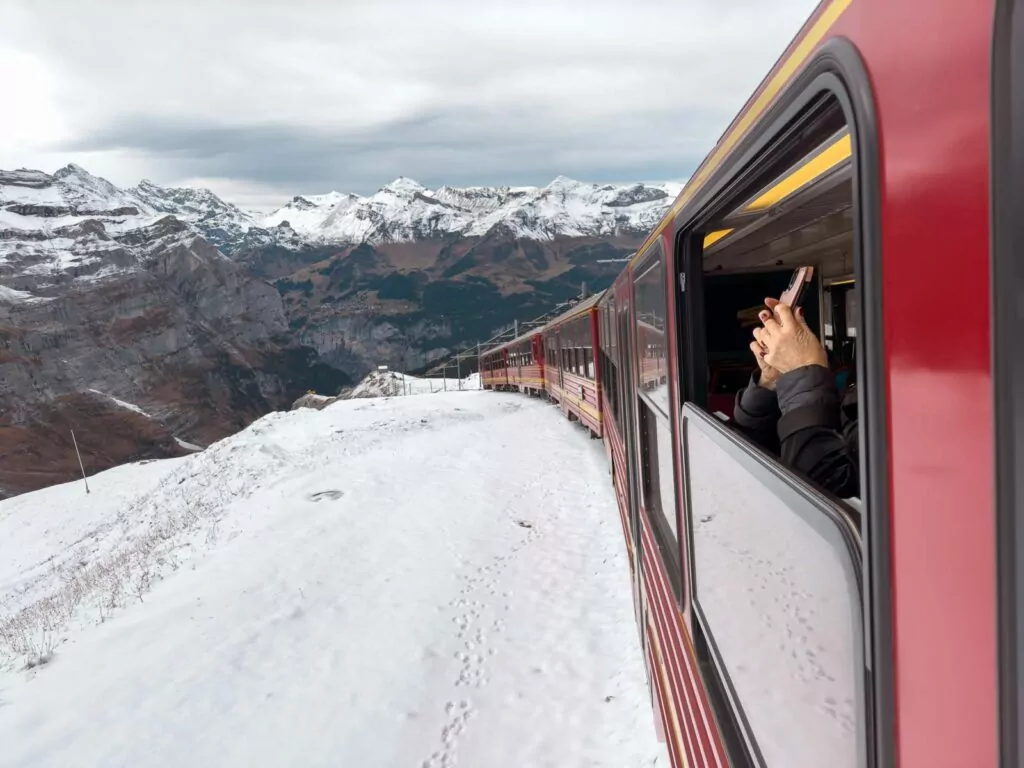
Jungfraujoch (Top of Europe)
Open year-round but travel options depend on season
How to get there
There are a few ways to get from Grindelwald to Jungfraujoch:
- The traditional route is slower but includes two iconic trains. From Grindelwald you take the Wengenalp Railway (the green and yellow train from the mountain train emoji 🚞) to Kleine Scheidegg, then you change to the Jungfrau Railway via the Eiger Glacier to the Top of Europe.
- The quicker trip is more modern. From Grindelwald Terminal you take the Eiger Express tricable gondola to the Eiger Glacier station, then switch to the Jungfrau Railway there to take the final leg of the trip through the mountains.
- You can combine both routes to get the best of both worlds, take the classic Wengenalp Railway to Kleine Scheidegg, switch to the Jungfrau Railway to get to the top, then come back down to Eiger Glacier station and catch the Eiger Express back to Grindelwald.
- In the Eiger Express you’ll want to sit on the left side going up for the best views of Eiger and over Grindelwald
- For the Grindelwald to Kleine Scheidegg leg, the left side is best for Eiger views
- From Kleine Scheidegg towards Jungfraujoch, sit on the right for the best chance to take photos out the window looking over the valley and back at the rest of the train. From Eiger Glacier Station the rest of the train journey is in the tunnel so there are no views.

And some info on operating dates:
- Grindelwald to Kleine Scheidegg open from 15 December 2024 to 13 December 2025
- Kleine Scheidegg to Jungfraujoch open year-round
- Eiger Express operates year-round
Highlights
- Ride the Jungfrau Railway, Europe’s highest-altitude railway, to the “Top of Europe” at 3454m elevation
- Step onto the Sphinx Observatory deck for sweeping views of the Aletsch Glacier
- Walk the Ice Palace, a magical corridor carved through the heart of the glacier
- Enjoy snow activities in summer at the Snow Fun Park (mid-May to mid-October)
- Savor Swiss cuisine with a view at one of the Jungfraujoch restaurants
- Send a postcard from Europe’s highest-altitude post office
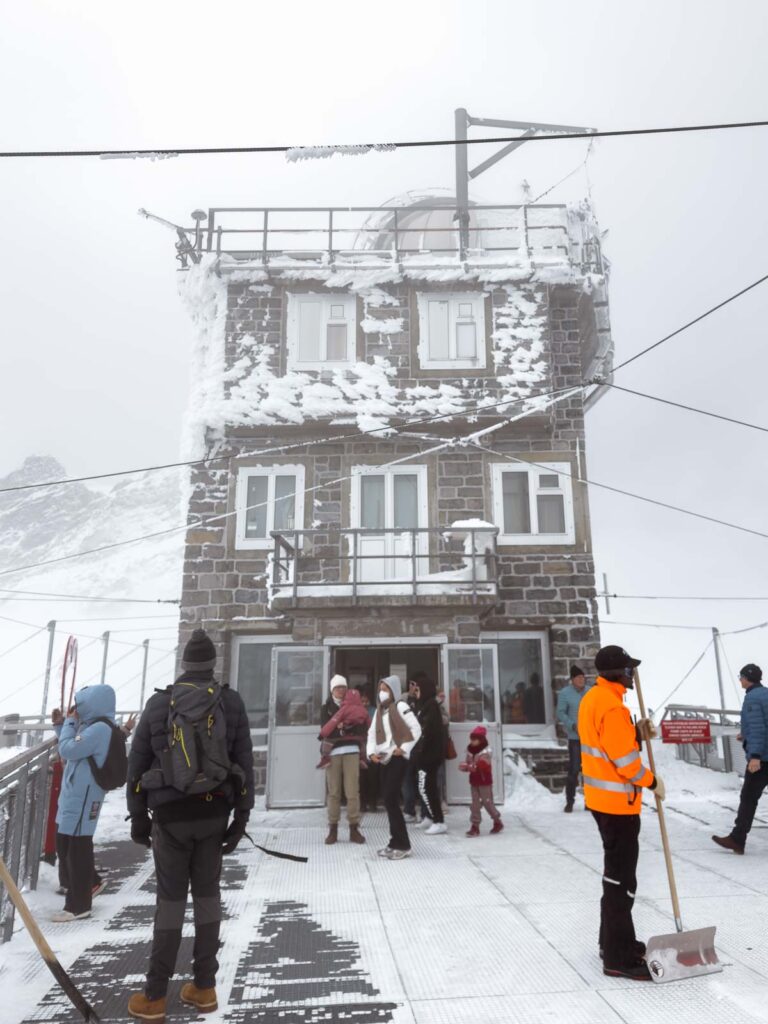

Prices & discounts
Jungfrau is priceyyyyy, but there are some decent travel pass discounts available. With your ticket you can choose to take the traditional train route or the Eiger Express (or both).
- Grindelwald to Jungfraujoch return is 201CHF for the full fare
- If you’re staying in Interlaken, getting to Jungfraujoch return is 223.80CHF for the full fare
- Kids 6-15 get tickets for just 20CHF and kids 5 & under are free
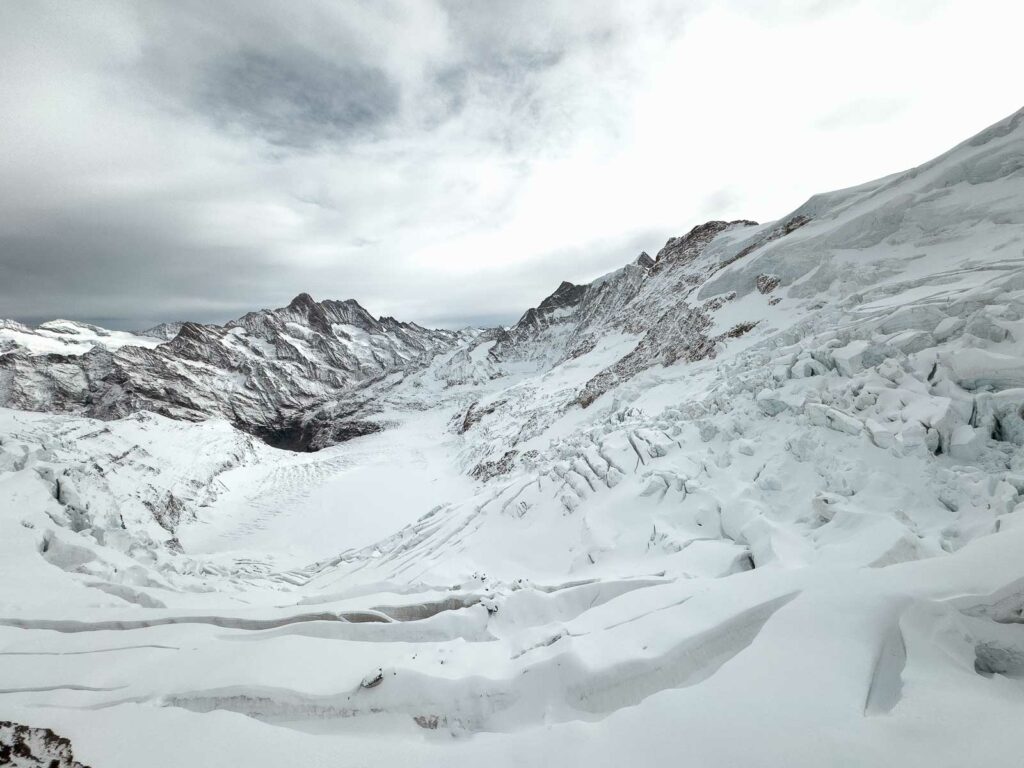
There are some discounts available too:
- A Swiss Half Fare Card gets you 50% off the whole journey
- A Swiss Travel Pass gets you 25% off the mountain railways and cable car, making a return trip from Grindelwald 148.60CHF (slightly lower than 25% off, because the travel pass covers the bus from Grindelwald Terminal WAB to the Grindelwald train station)
- A Eurail/Interrail Pass will get you the same discount as the Swiss Travel Pass, 25% off the cable car and mountain railways
- A Berner Oberland Pass also gives you 25% off, this used to be a bigger discount but as of 2025 the BO Pass had some big changes and this is one of them. If you hold a Swiss Half Fare Card in conjunction with your BO Pass, you get the higher 50% discount.
- A Jungfrau Travel Pass gives you access to a special price on the mountain railways and cable car, only 63CHF return from 29 March to 31 May and again from 1 Sept to 27 Oct, and 75CHF return from 1 June to 31 August
- And if you’re travelling in winter with a regional travel pass, you can get access to a special ‘connecting ticket’ for only 63CHF. Winter 2025 pass details have not been released as of April 2025 but in 2024, the connecting ticket was valid with the following passes: Jungfrau Ski Pass (3+ days), Hiking and Sledging Pass (3+ days), Season Ski Pass for Jungfrau Region, Top4 Ski Pass, and the Jungfrau Travel Pass Winter
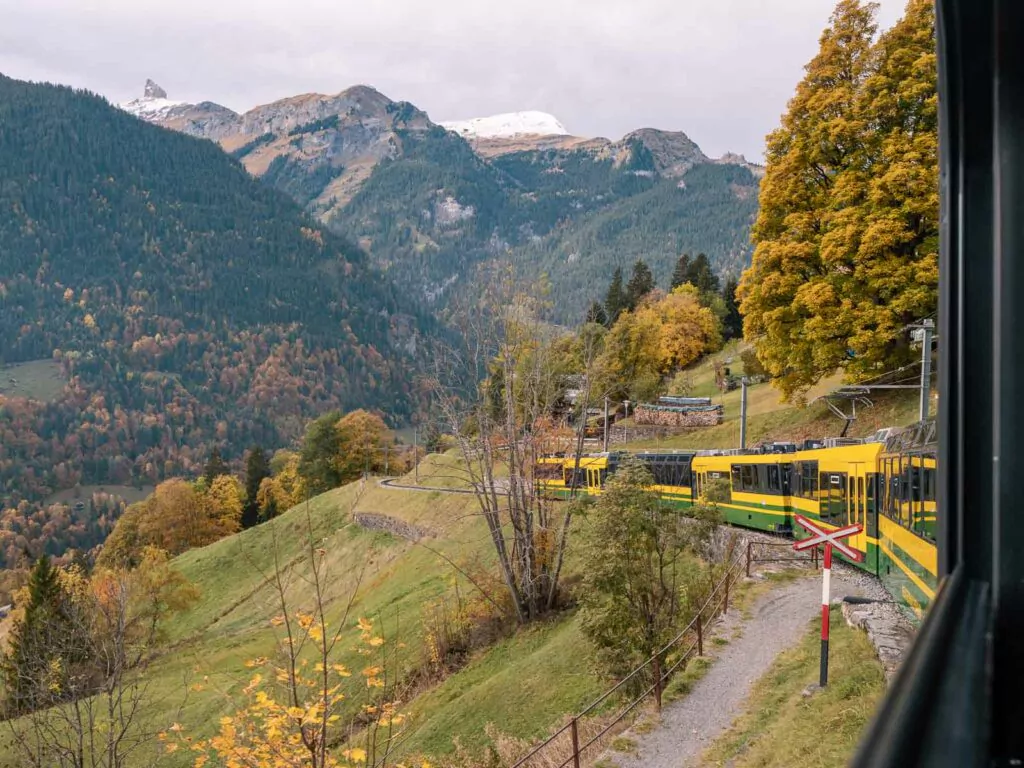
Seat reservations are optional most of the year but mandatory from May to August, here’s what you need to know:
- Seat reservations for the Kleine Scheidegg – Jungfraujoch train or Eigergletscher – Jungfraujoch train cost 10CHF return per person
- A reservation doesn’t guarantee you a specific seat, it just guarantees you a particular train departure so you can turn up just before and not have to wait in line
- The risk here is that if you book your ticket and reservation in advance, and the weather is trash, you’ve paid hundreds of CHF to stand inside a cloud 🙃
- If you’re travelling in peak season then this is a risk you have to take, but outside of peak season I’d suggest waiting until the day of your planned Jungfrau trip, checking the weather webcam to make sure it’s worth it, and just deal with potentially having a longer wait to get on a train
If you’d prefer a guided tour with commentary, this one from Interlaken is your best bet.
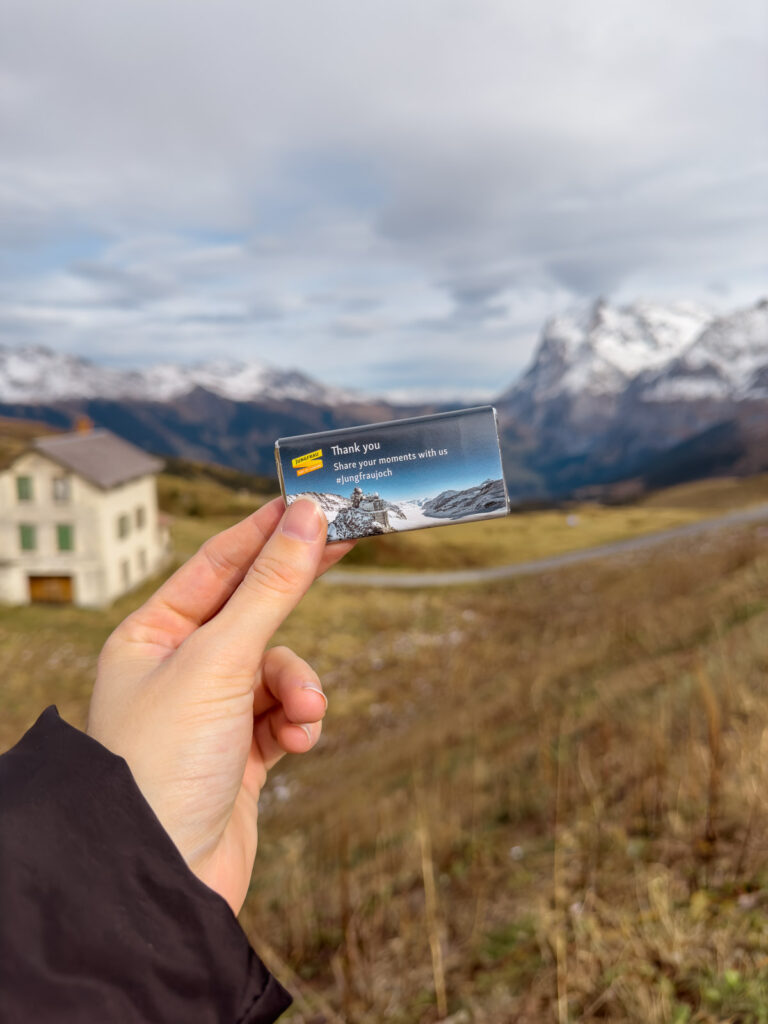
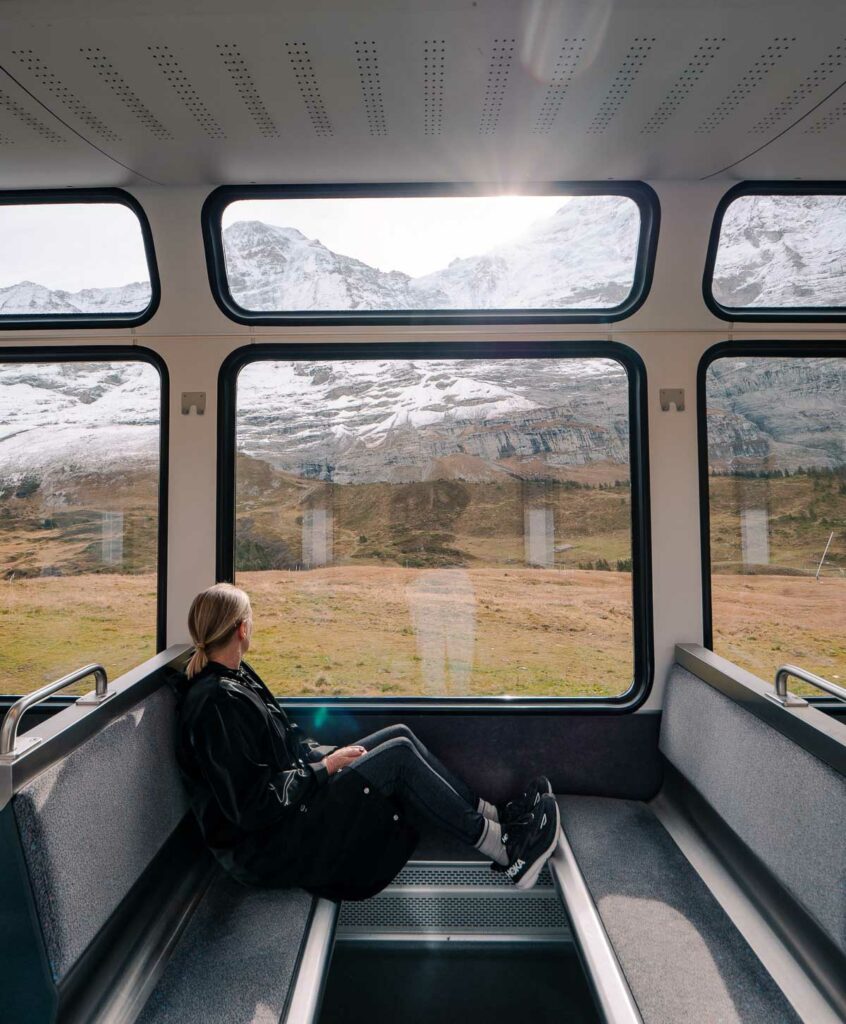
Grindelwald-First (Top of Adventure)
Gondola open from 14 December 2024 to 26 October 2025
How to get there
Make your way to Grindelwald BGF station, just a short walk or bus from Grindelwald town centre. From here it’s an easy 25 min trip on the First Aerial Cableway to reach Grindelwald-First.
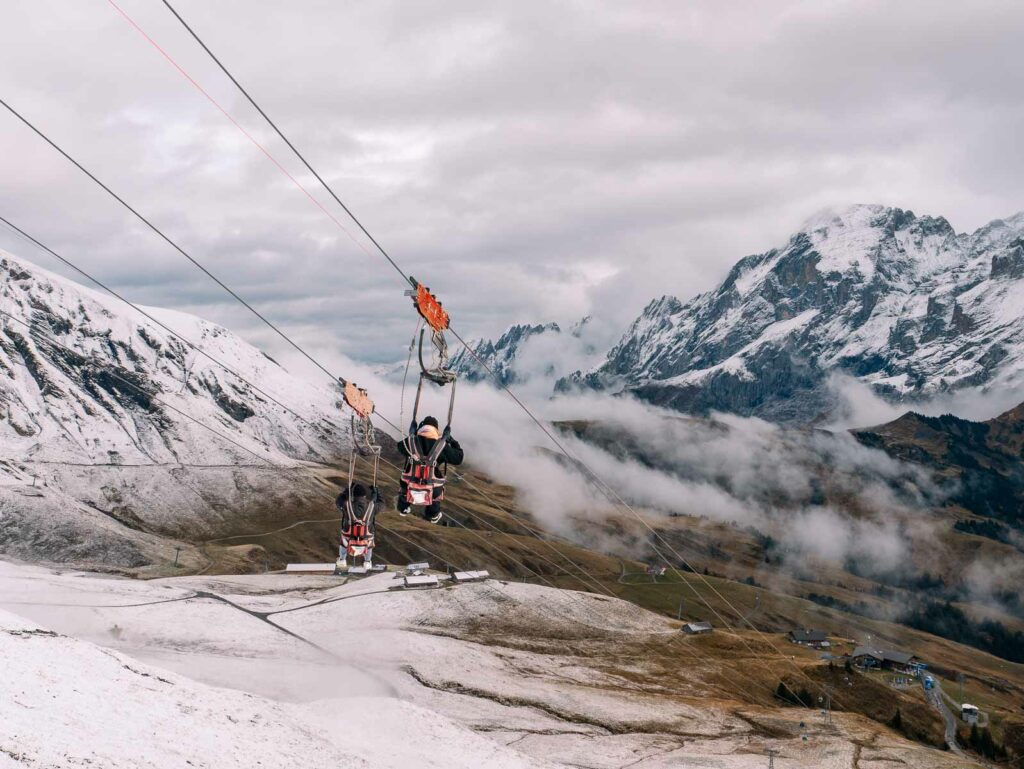
Highlights
- Soak up panoramic views from the gondola
- Brave the First Flyer, a thrilling zip line with world-class views
- Walk the First Cliff Walk by Tissot, a spectacular high-altitude pathway with stunning vistas
- Try the First Glider, an exhilarating ride that simulates the flight of an eagle (I’m absolutely fine with ziplines but the feeling of lying down and facing the ground on the glider was extremely scary for me haha)
- Take a scenic hike to Bachalpsee, known for its reflective alpine lake, around 2 hours return
- Enjoy mountain carting or try out a Trottibike scooter to get down the mountain in summer (1 May to 26 Oct 2025)
- Indulge in Swiss specialties at the Bergrestaurant First
- Engage in winter sports during the colder months, including skiing and snowboarding on well-groomed pistes
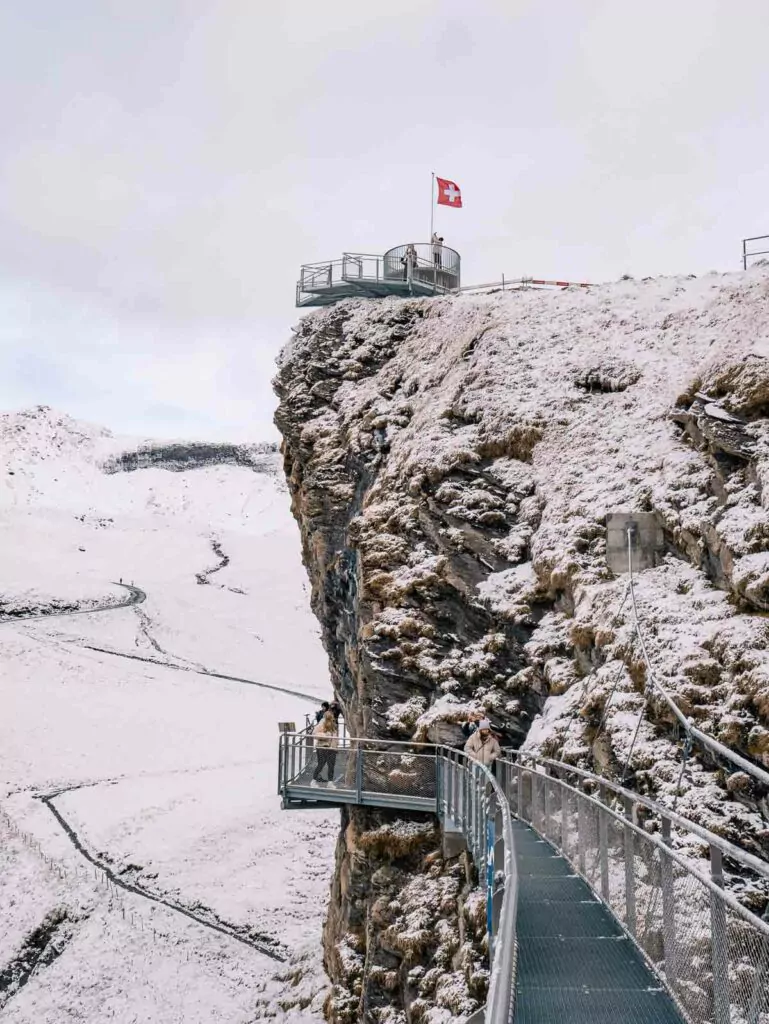
Prices & discounts
- 72CHF return from Grindelwald BGF to Grindelwald-First until the end of May, 76CHF from June to August, 72CHF again September/October
- There is an Adventure Package available from 1 May to 26 October 2025 which includes unlimited gondola rides as well as one or two activities, the price for one activity is 82CHF in shoulder season (May & September/October) or 86CHF in summer (June, July, August), the price for two activities is 97CHF in shoulder season and 101CHF in summer. The Adventure Package used to offer unlimited activities but as of 2024 you have to choose either one or two.
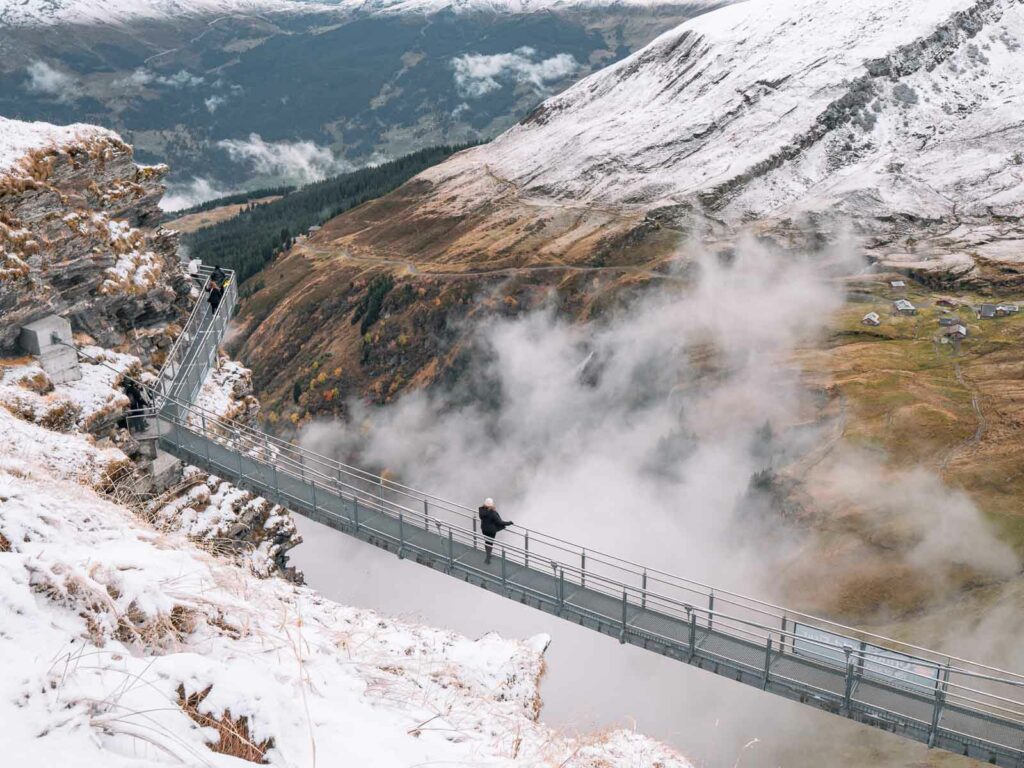
And the discounts:
- A Swiss Half Fare Card gives you 50% off the gondola trip + a discounted rate for the Adventure Package
- A Swiss Travel Pass gives you 50% the gondola trip + a discounted rate for the Adventure Package
- A Eurail/Interrail Pass gives you 50% off the gondola but no discount on the Adventure Package
- A Jungfrau Travel Pass gives you a 100% discount on the gondola trip but no discount on activities
- A Berner Oberland Pass gives you a 50% discount on the gondola trip but no discount on activities
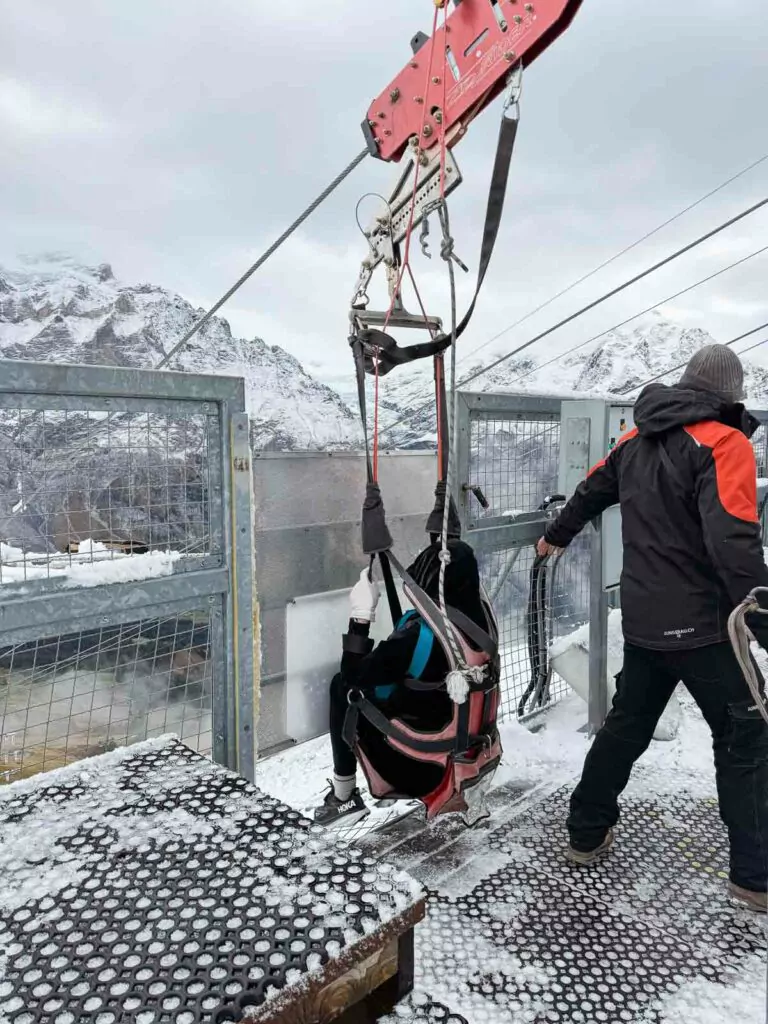

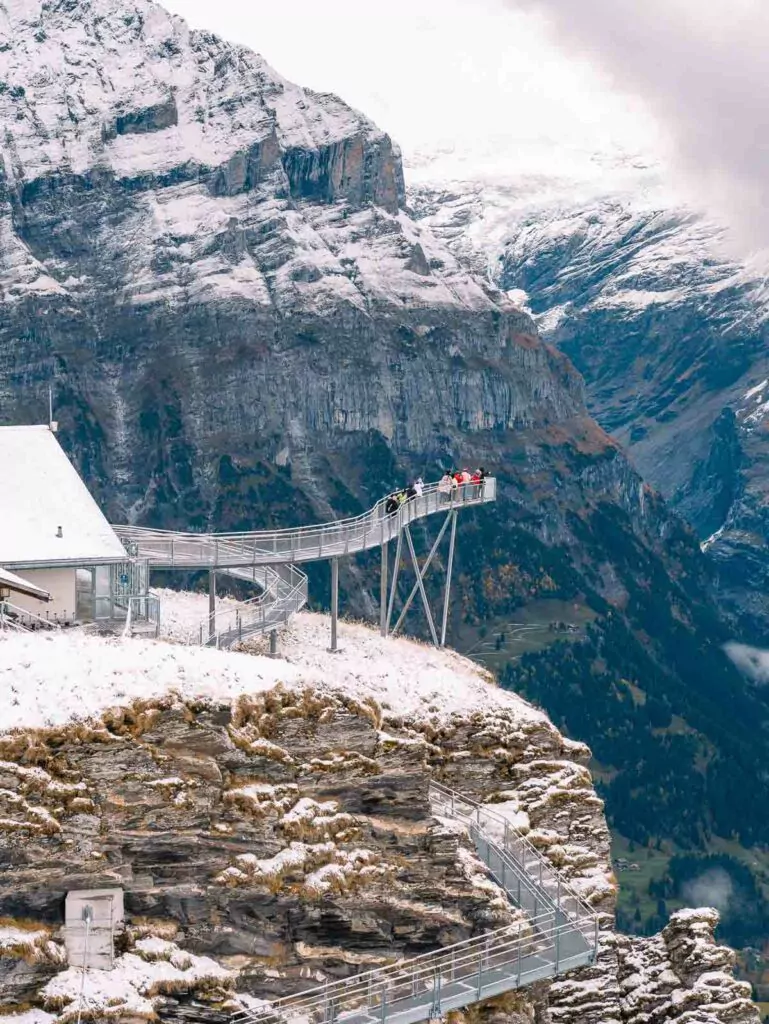
Can you do both mountains in a day?
You can do both Grindelwald-First and Jungfraujoch in one day, but it will be an expensive day 🙃
Which mountain is better?
As with all things, it really depends on your travel preferences.
If you’re travelling to Switzerland on a budget, Grindelwald-First is much cheaper and I think the value for money is fantastic. The views up there are incredible, you can do the Cliff Walk or hike to Bachalpsee without paying anything extra, and the Adventure Package is a great option if you’ve got a travel pass of some sort.
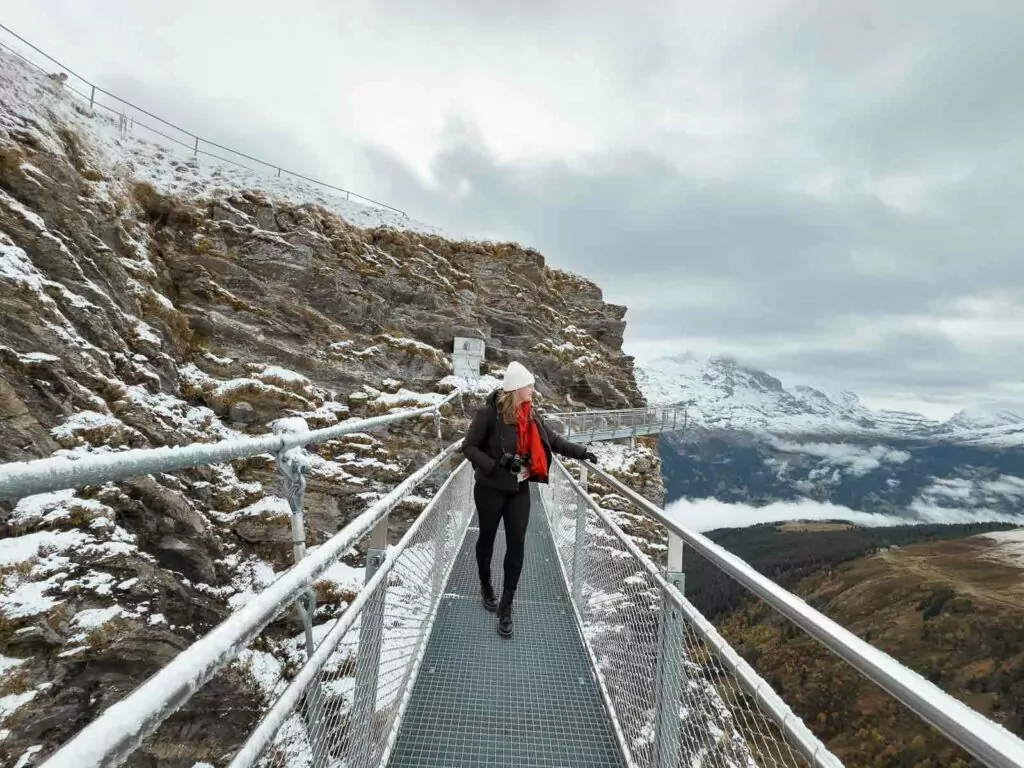
If you travel for adventure rather than ticking things off your bucket list, Grindelwald-First might suit you best too. There’s more to do up there, especially in summer when the mountain carts, Trottibikes and hiking trails are all open. At Jungfrau it’s more about sightseeing and learning about the mountain and railway rather than ‘doing’ things.
But if you’re all about the views, Jungfrau on a good day is pure magic. It’s expensive, yes, but the panoramic scenery is pretty much unbeatable when skies are clear. It’s also one of the most accessible mountain viewpoints in the world.
The weather might impact your plans too, Jungfrau tickets cost a lot and you don’t want to be spending that much and then not see anything. Check the forecast 24 hours before you go to get an idea, and you can check the webcams when you’re ready to leave to make sure it’s definitely worth it.
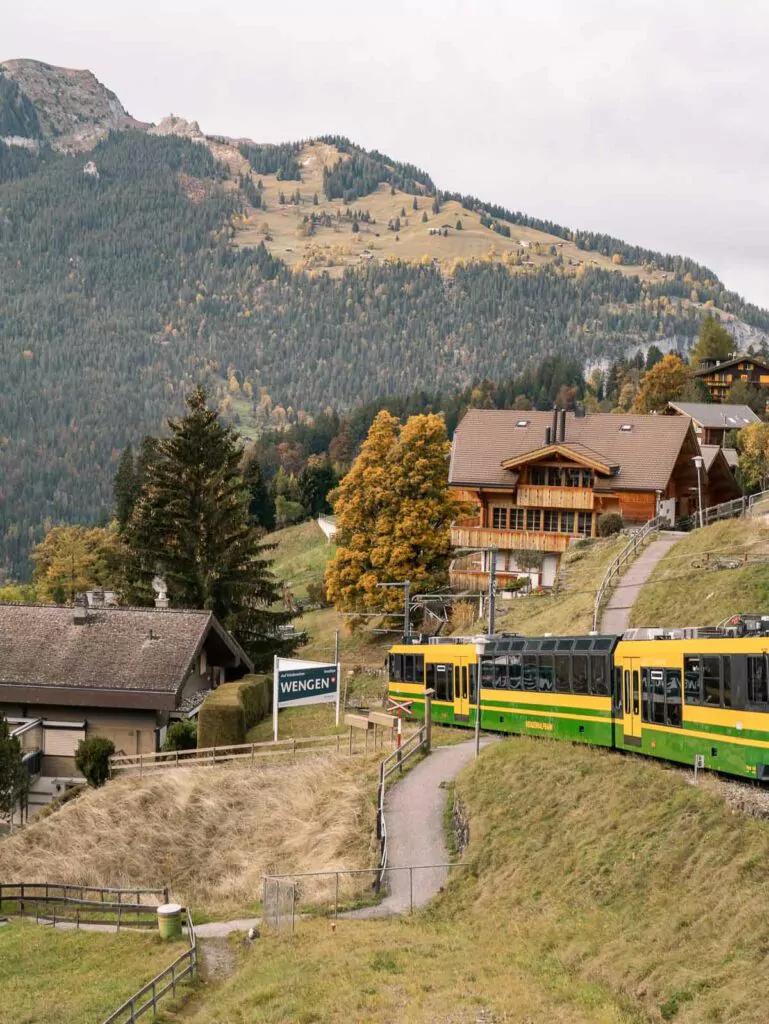
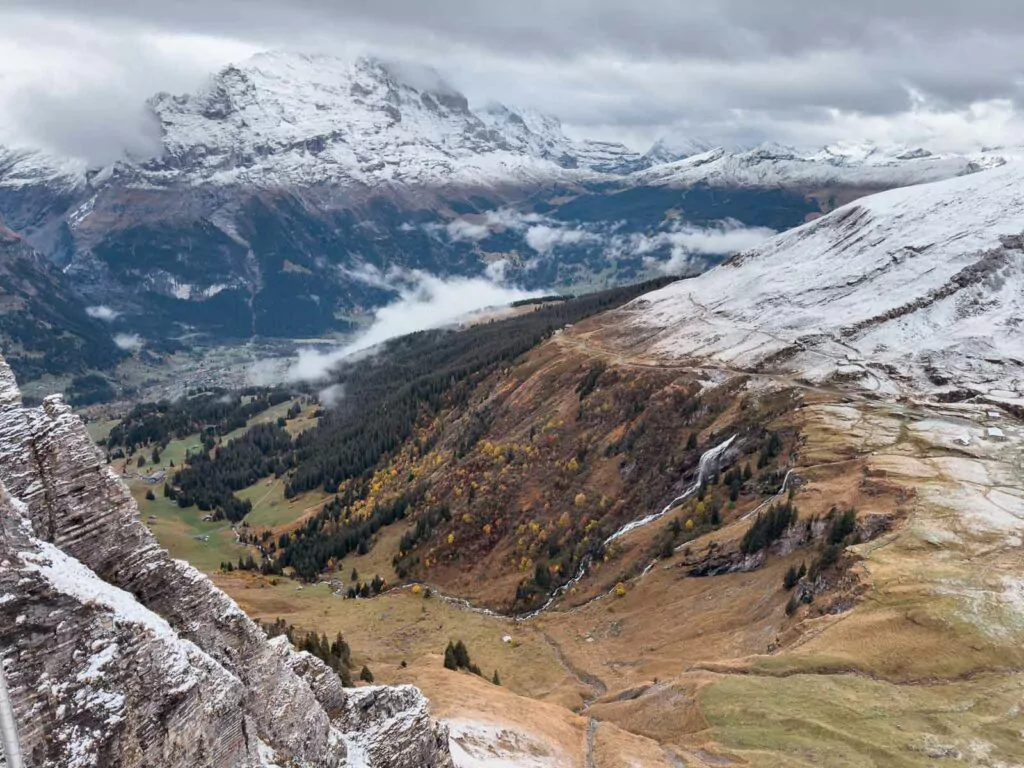
Day 6: Grindelwald to Interlaken
How to get from Grindelwald to Interlaken
It’s a short 36 minute train from Grindelwald to Interlaken, super easy, and fully covered by a Swiss Travel Pass, Eurail/Interrail and Jungfrau Travel Pass, no seat reservations needed.
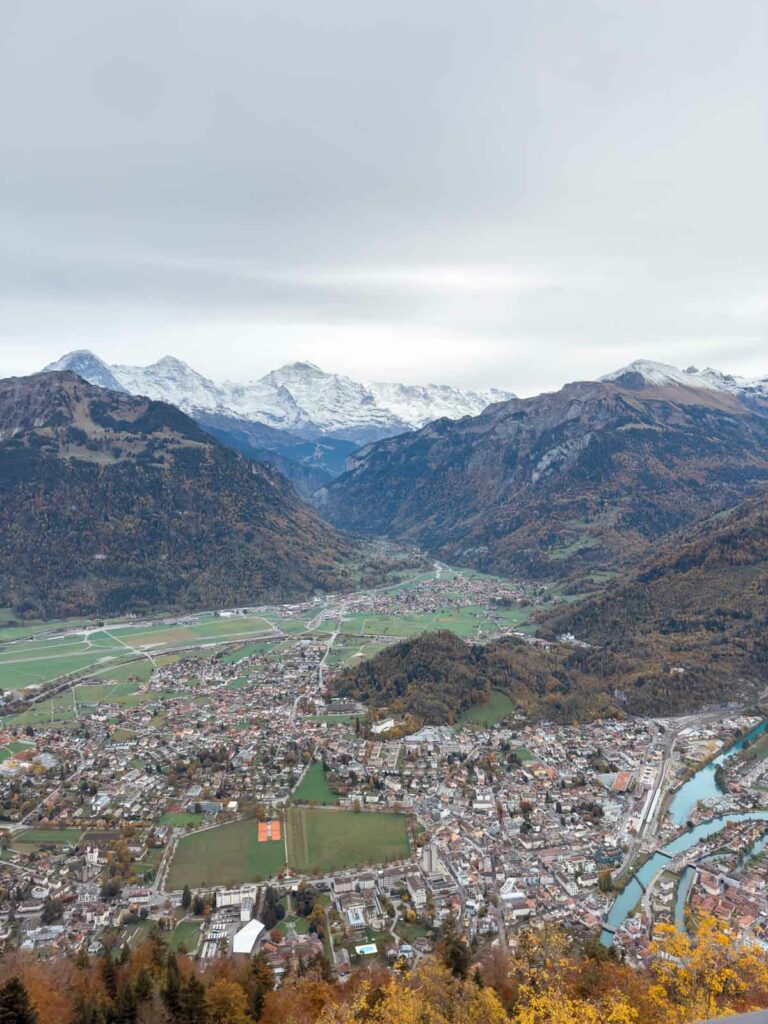
About Interlaken
Nestled between the pristine waters of Lake Thun and Lake Brienz, and flanked by the mighty peaks of the Eiger, Mönch, and Jungfrau, Interlaken is Switzerland’s adventure capital. The skies are dotted with paragliders and skydivers, the lakes are alive with boats and kayaks enjoying the scenery, and the nearby rivers host adrenaline junkies spending the day canyoning or white water rafting.
But it’s not all about high octane pursuits here, Interlaken is also a haven for those seeking calm and quiet. The town itself has beautiful parks with epic views, casual eateries as well as fine dining serving up traditional delicacies, and the 5* Victoria-Jungfrau hotel has a day spa if you need to rest and rejuvenate in the middle of your ten days in Switzerland.
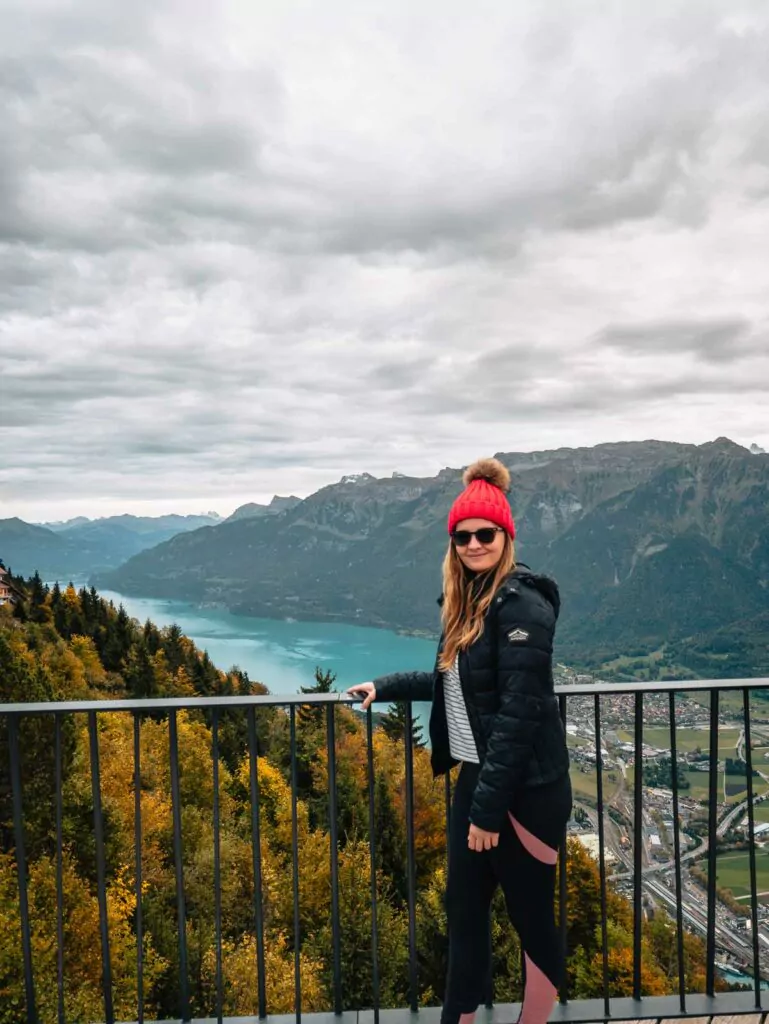
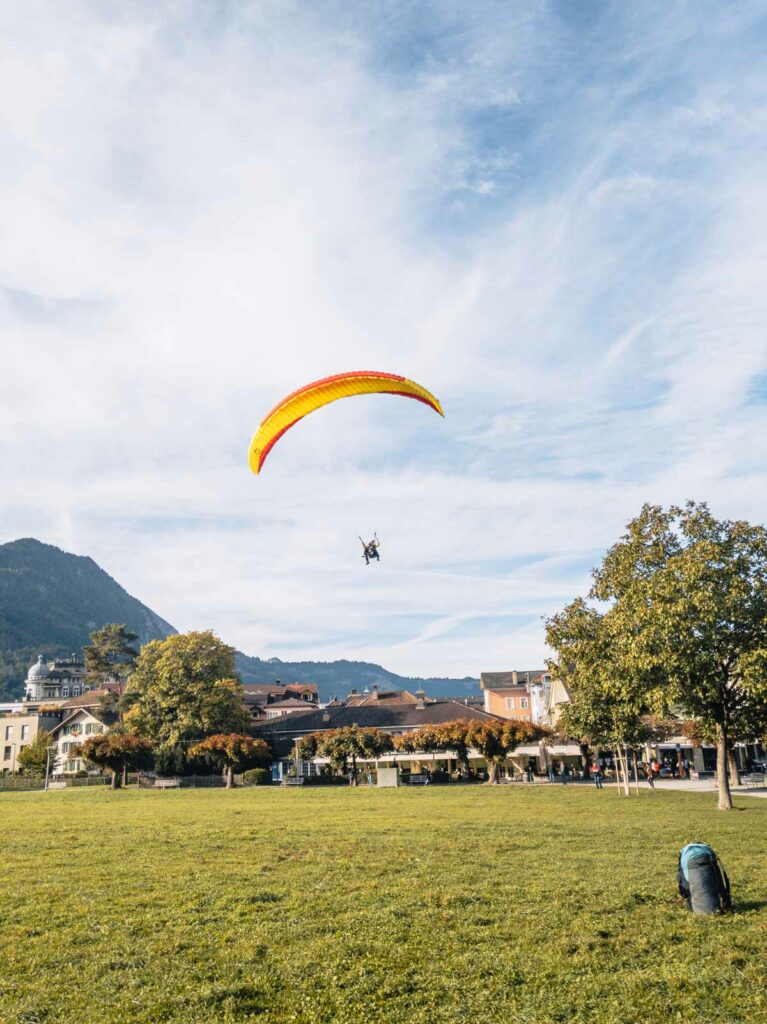
Things to do in Interlaken
- Cruise on Lake Thun or Lake Brienz to take in the stunning scenery from the water
- Or book a kayak tour to explore the lakes with a local guide (summer option here and winter option here)
- Paraglide over Interlaken for a bird’s-eye view of the lakes and mountains, one of the coolest things I’ve ever done
- Take the funicular up to Harder Kulm, Interlaken’s local mountain, for panoramic views across the city and both lakes
- Visit the St. Beatus Caves and marvel at the natural underground wonders
- Do a group canyoning tour to get up close and personal with Interlaken’s narrow gorges
- Take a day trip to the Lauterbrunnen Valley and see the 72 waterfalls
- Experience the thrill of white-water rafting on the Lütschine River
- Go on a photography tour with a local
- Wander through Interlaken’s Höhematte Park for iconic Jungfrau views
- Try the canyon swing for an adrenaline rush and a 90m freefall
- Enjoy a traditional Swiss meal at one of Interlaken’s cozy restaurants, we had delicious fondue at the terrace restaurant of Hotel Krebs but some other top-rated ones are Restaurant Cafe Gleis 3 and Pure8
- Treat yourself to a fancy spa day at Victoria-Jungfrau, then indulge in a delicious meal at one of the hotel’s restaurants after (I looooved Sapori for Italian food)
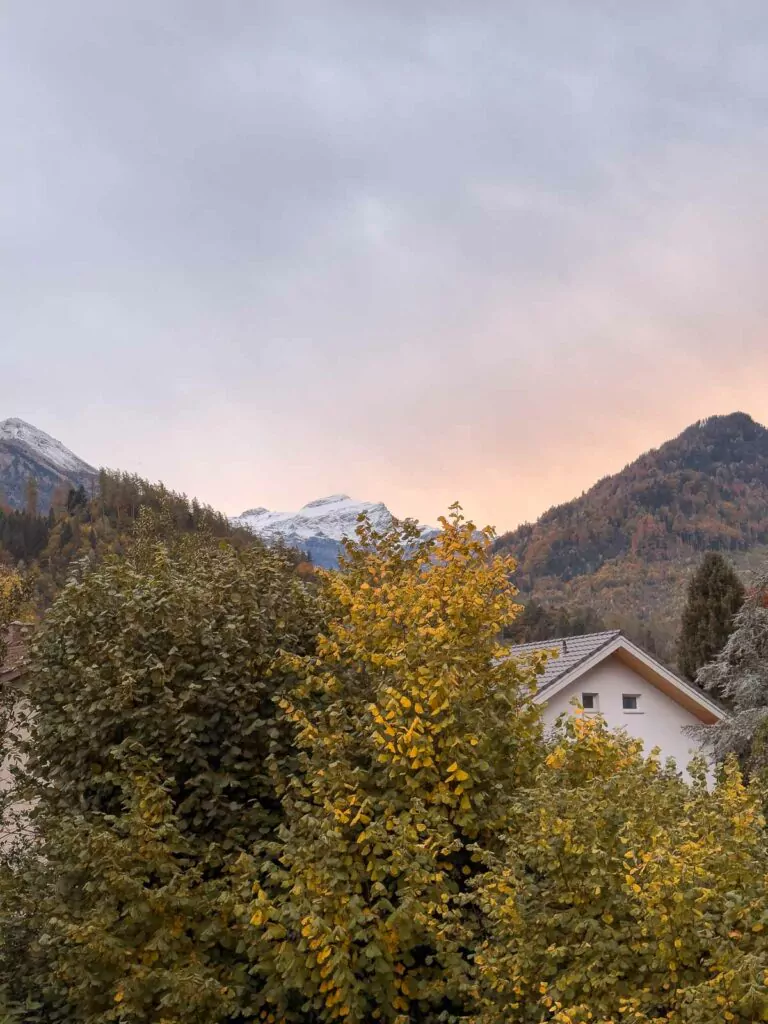
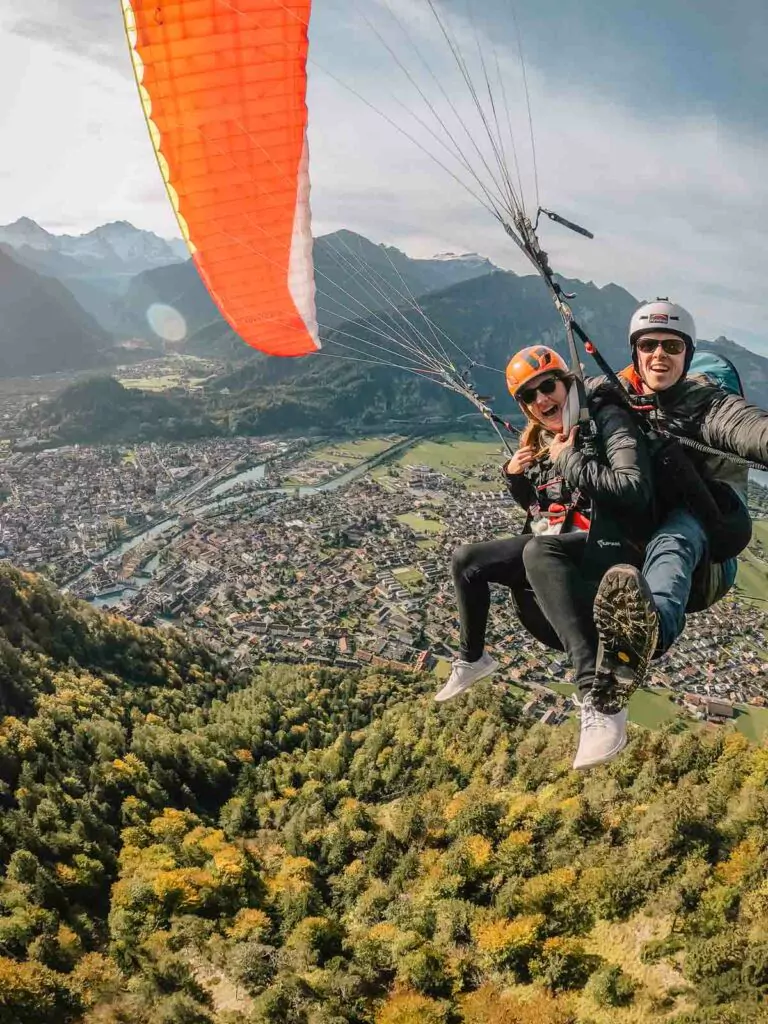
Where to stay in Interlaken
Budget
- On my most recent trip I stayed at the top-rated Backpackers Villa Sonnenhof hostel, and it was superb. Simple but modern and comfortable, ideal location within easy walking distance to the main street’s eateries and shops, and it had a huge kitchen, a dedicated co-working space for digital nomads and a really social atmosphere without being party-party.
- If you want something cheap and cheerful but aren’t keen on a hostel, I’ve also stayed at Arnolds B&B which was super cute and great value for money.
- Interlaken Youth Hostel is right next to the train station, but it’s a bit more expensive than Backpackers Villa
Mid-range
- Swiss Inn & Apartments (classic 3* hotel but fantastic reviews mentioning great service and excellent location)
- Boutique Hotel Bellevue (tasteful 4* hotel with excellent room views)
- Hotel Interlaken (cosy 4* hotel with alpine decor, great value rooms)
Luxury
- Victoria-Jungfrau Grand Hotel & Spa (super fancy 5* hotel right in the middle of town, perfect for a special occasion)
- BEATUS Wellness & Spa Hotel (9km from Interlaken on the shore of Lake Thun, gorgeous luxury hotel with an impressive spa complex)
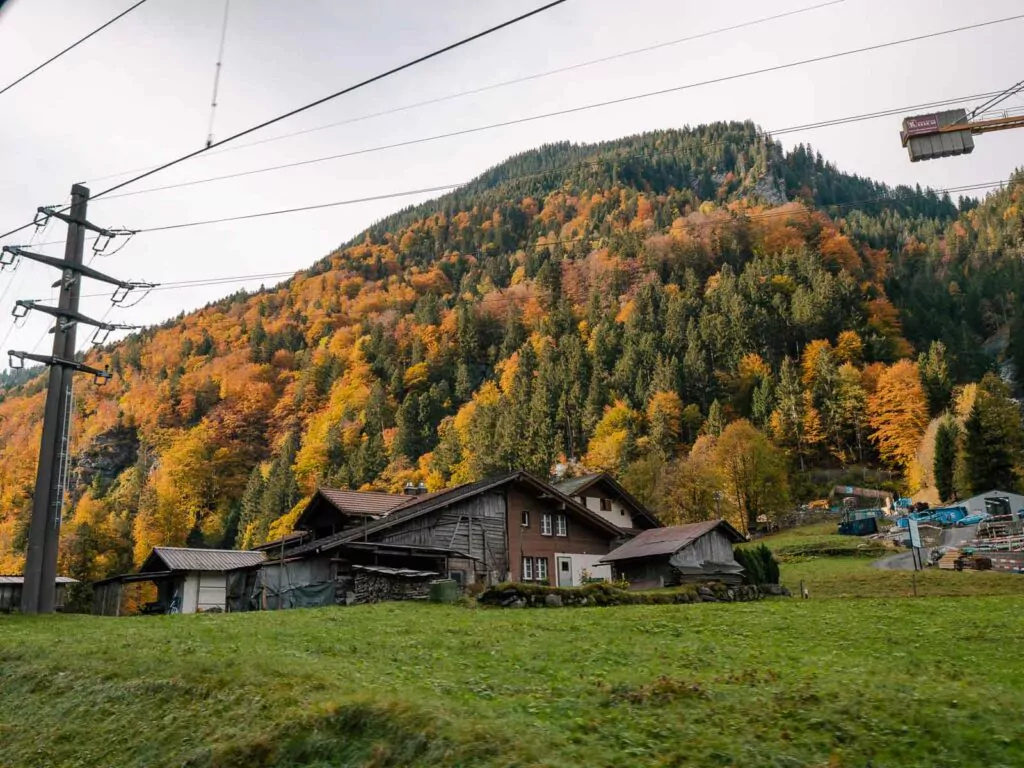
Day 7: Explore Interlaken & beyond
Day seven of your 10 days in Switzerland is a free day to do whatever you want in Interlaken, obviously dependent on what you managed to get done on day six.
My absolute must-dos in Interlaken would be:
- Visit Lauterbrunnen
- Paraglide
- Do a cruise or kayak on one of the lakes
- Head up Harder Kulm
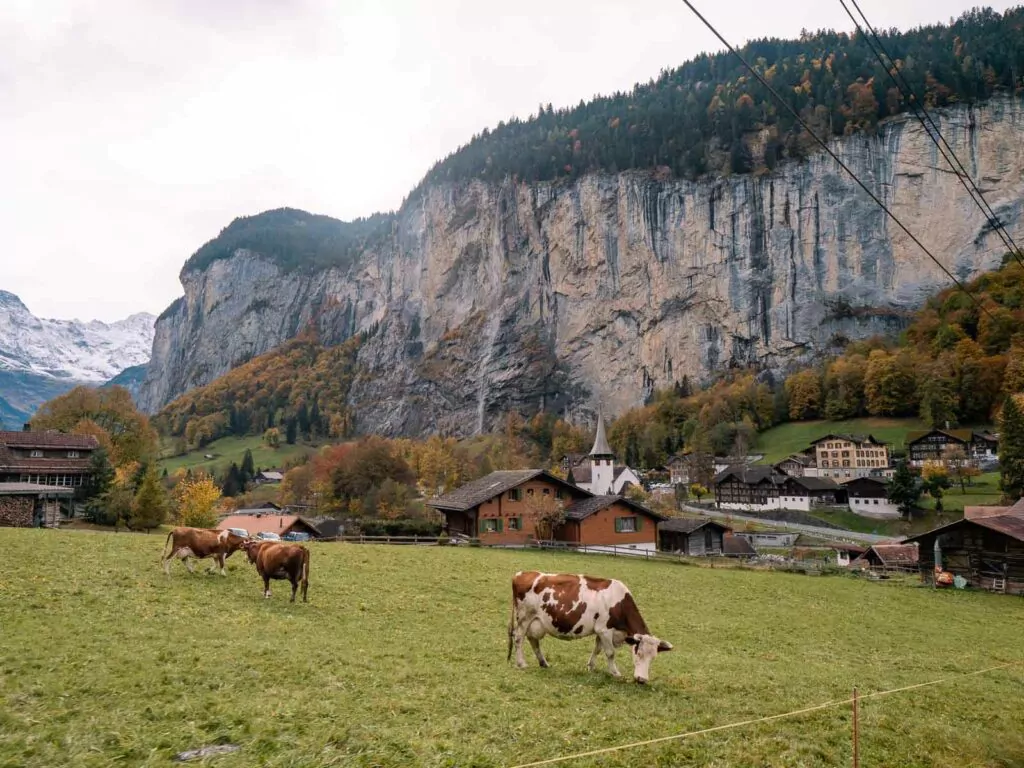
Day 8: Interlaken to Zermatt
Day eight includes two epic train rides to reach the stylish alpine resort of Zermatt.
How to get from Interlaken to Zermatt
First you’ll catch the GoldenPass Express from Interlaken to Montreux, which passes by castles, lush valleys and vineyards over the 3h 15m journey, Upgrade to ‘Prestige’ class for an exclusive luxe experience, including super comfy seats that rotate 180 degrees.
The train is covered by Eurail/Interrail/Swiss Travel Passes but reservations are required in Prestige class (49CHF but worth it) and recommended for 1st and 2nd class.

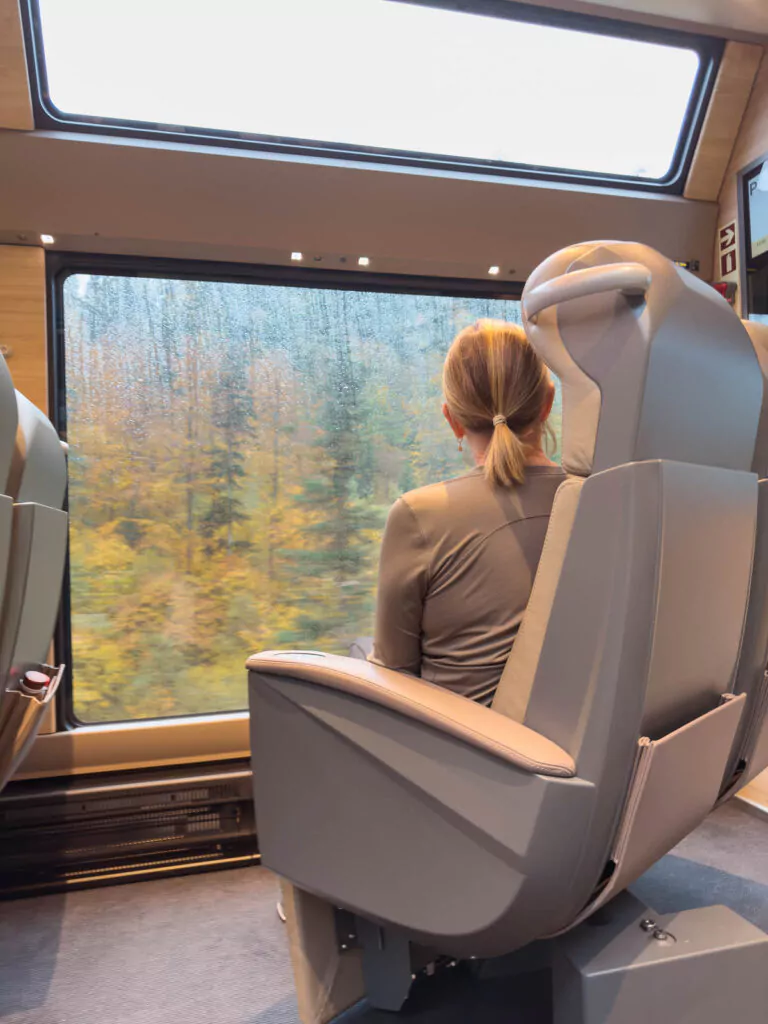
In Montreux you could store your bags at the station to grab something to eat, wander the lakefront or visit the Queen Studio Experience, a museum located in the studio Queen recorded loads of songs from 1978 to 1995.
If you don’t have time to stop (or just want to get to Zermatt), you can make an easy switch to another train going from Montreux to Visp and then to Zermatt (2h 40m total). No reservations needed, covered by rail passes.
About Zermatt
Arrive in Zermatt in winter and you might think you’ve teleported into a snow globe. This gorgeous resort village is the epitome of the Swiss Alps, with wooden chalets, cobblestoned car-free streets and alpine grub being served at fondue bistros and fancy restaurants alike.
But Zermatt isn’t solely for snow sports enthusiasts. The warmer months unveil a network of hiking trails that meander past lush meadows, serene lakes and rugged mountain paths, offering insane views at every turn. And if you prefer to sightsee without working up a sweat, the Gornergrat Railway and Matterhorn Glacier Paradise are easy day trips that provide some of the best views in the country.
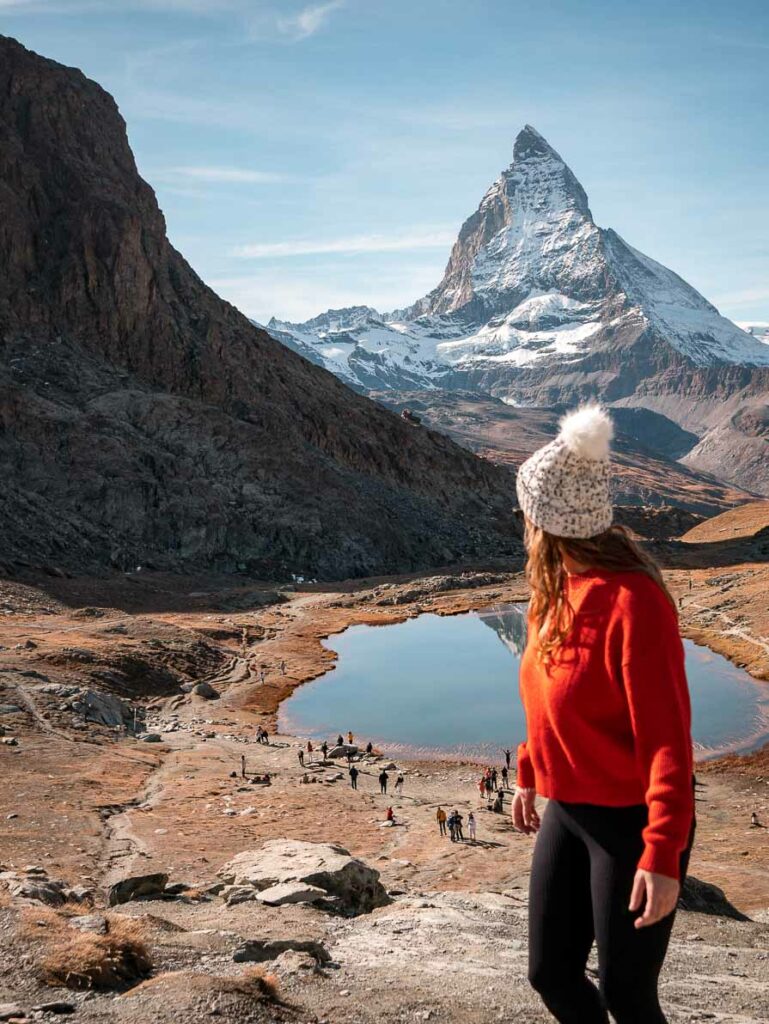
Things to do in Zermatt
- Marvel at the iconic Matterhorn, one of the most famous mountains in the world, you might recognise it from the Toberlone packaging!
- Hit the slopes at the Matterhorn Ski Paradise, Europe’s highest-altitude ski area, open year-round
- Ride the Gornergratbahn for breathtaking panoramic views of the surrounding peaks and glaciers
- Explore scenic hiking trails like the Five Lakes Walk, offering stunning reflections of the Matterhorn
- Experience the thrill of the Matterhorn Glacier Paradise, with its ice palace and the highest cable car station in Europe
- Indulge in Swiss culinary delights at cosy mountain restaurants and gourmet eateries (I recommend ZERMAMA Bistro)
- Take a helicopter tour for an unforgettable aerial view of the Matterhorn and the Swiss Alps
- Relax in one of Zermatt’s luxurious spas, unwinding with views of the majestic alpine landscape
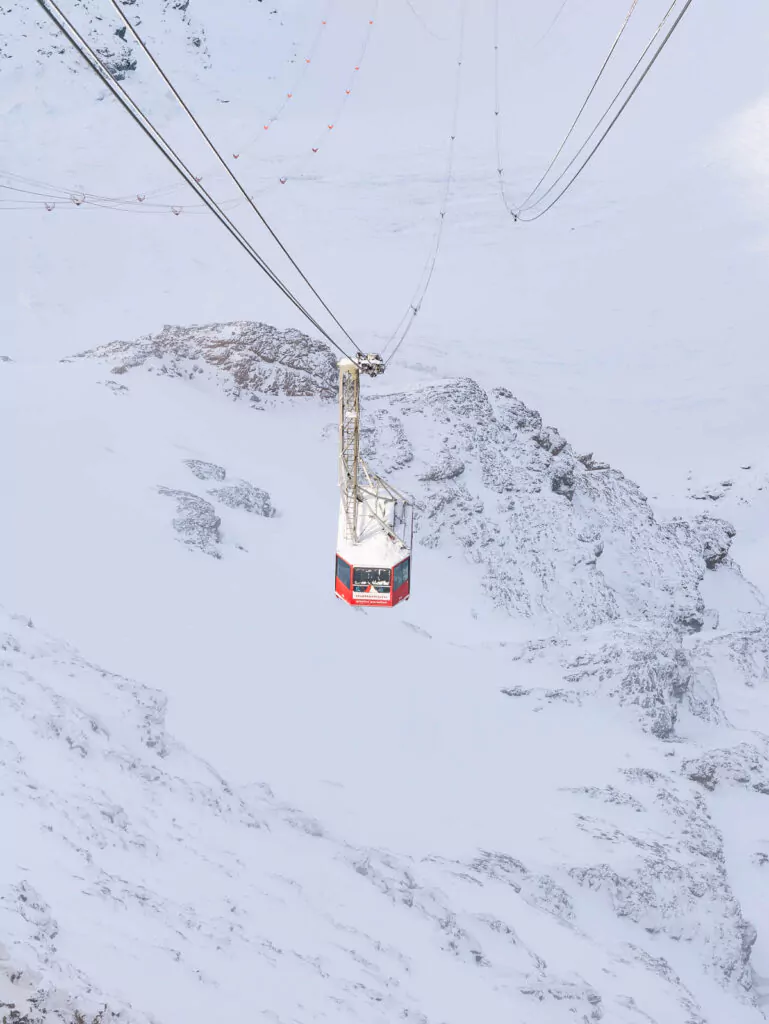
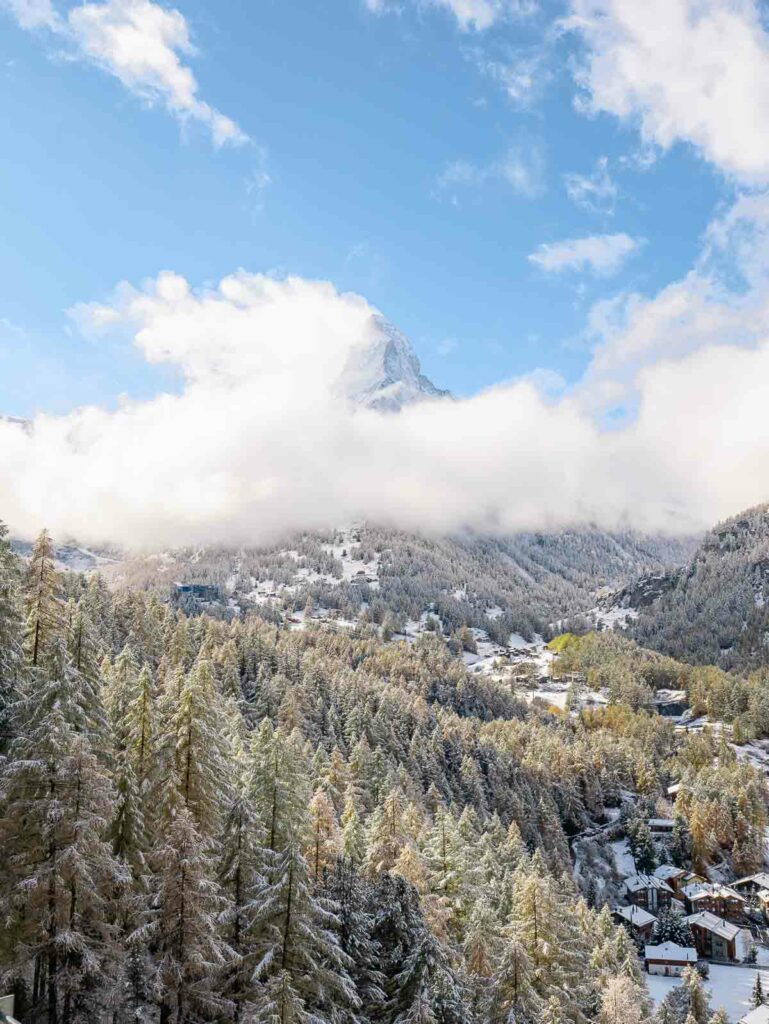
Where to stay in Zermatt
Quick note: The decent accommodation options in Zermatt book up many months in advance, and the budget options are few and far between, so book as early as you can to ensure you don’t miss out on something within your price range.
Budget
- Hotel Bahnhof (right by the train station, kitchen facilities, comfortable dorms and private rooms)
- Annex Antika (simple, affordable rooms but with access to the wellness area + free buffet breakfast at the Antika Hotel next door)
- Zermatt Youth Hostel (very basic but one of the cheapest places in Zermatt without compromising on cleanliness or comfort)
Mid-range
- Carina Design&Lifestyle Hotel (probably the most expensive dorm rooms I’ve ever seen haha but the hotel/hostel is absolutely beautiful!)
- Hotel Jägerhof (traditional 3* chalet with an excellent restaurant)
- Resort La Ginabelle (great value 4* hotel with access to wellness facilities)
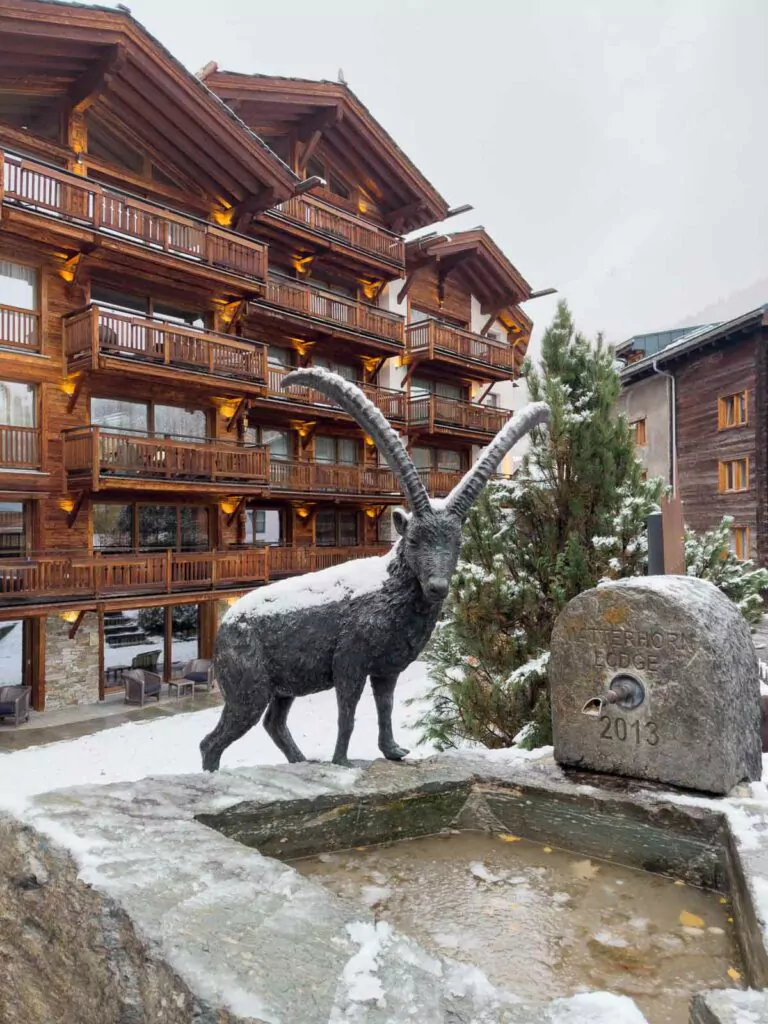

Luxury
- My absolute favourite hotel here is Hotel ZERMAMA, I’ve stayed twice and it’ll always be my choice when I’m in Zermatt! It’s a funky 4* boutique design hotel, every little detail has been thought of, from in-room fondue sets to foam rollers and yoga mats to big faux fur jackets for guests to wear. The meals are hearty and delicious, the rooms themselves are amazing and spacious, and the bed is absolutely dreamy, I sleep like a baby here. It’s worth spending a little extra for a Matterhorn view, magic!
- The Omnia (top-rated 5* hotel with world-class service and a lush spa complex)
- Riffelalp Resort (5* ski-in ski-out resort sitting at 2222m, with mind-blowing Matterhorn views)
- CERVO Mountain Resort (5* après ski haven with a focus on health, wellness and community)
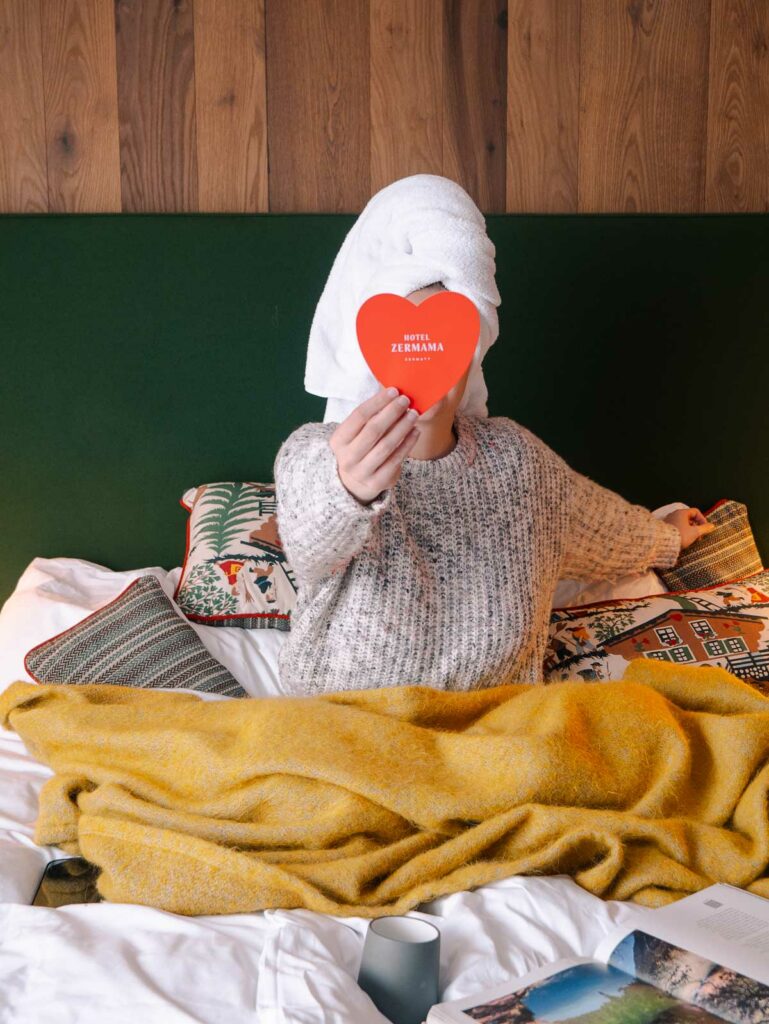
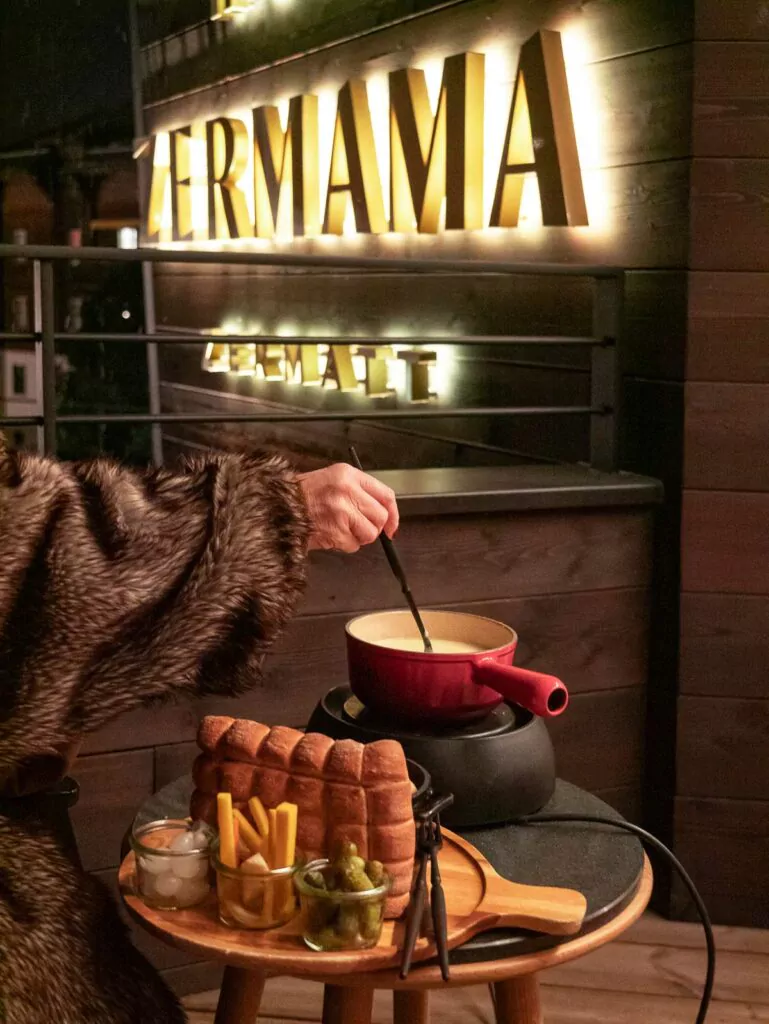
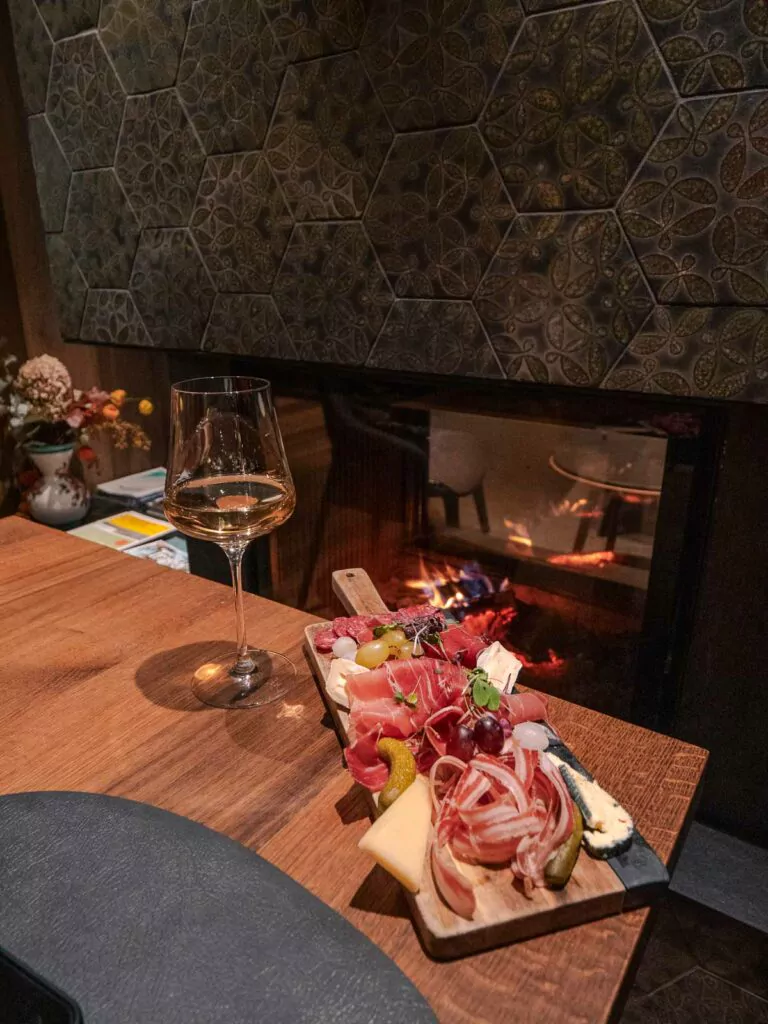
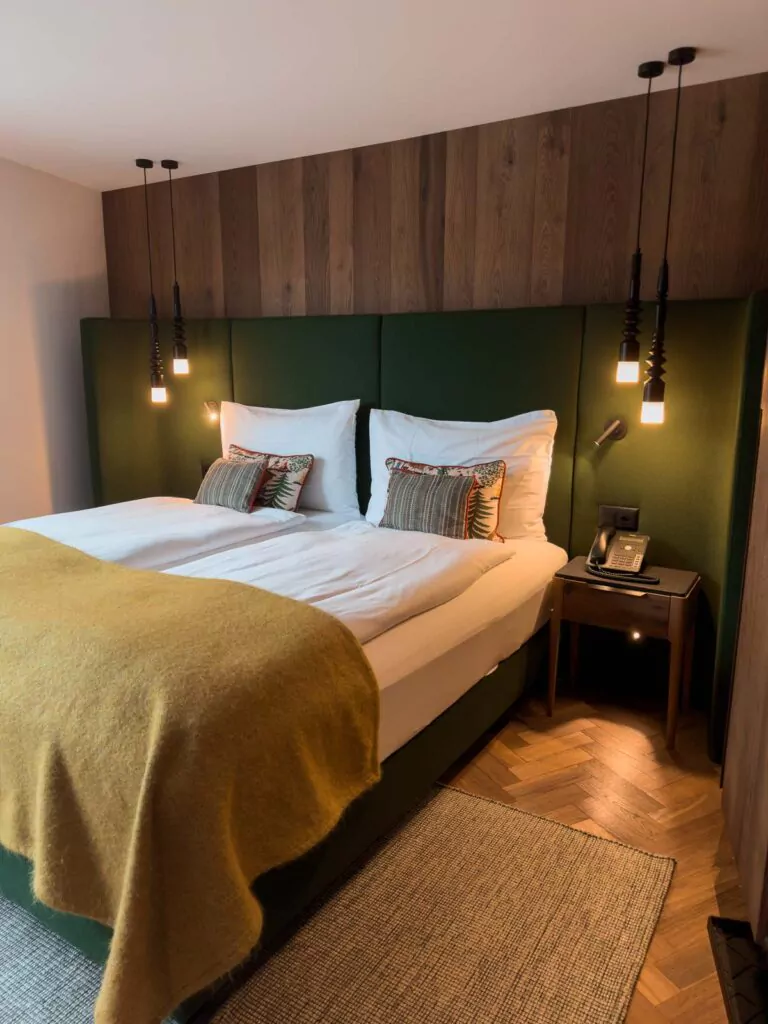
Day 9: Gornergrat or Matterhorn mountain day trip
With a full day in Zermatt you could choose from a train ride up to the top of Gornergrat or a cable car combo to reach Matterhorn Glacier Paradise.
Gornergratbahn
Open year-round
How to get there
Walk or catch an electric taxi to Gornergrat railway station in central Zermatt, then it’s an easy train ride. Sit on the right-hand side going up the mountain for the best views of Zermatt and the Matterhorn.
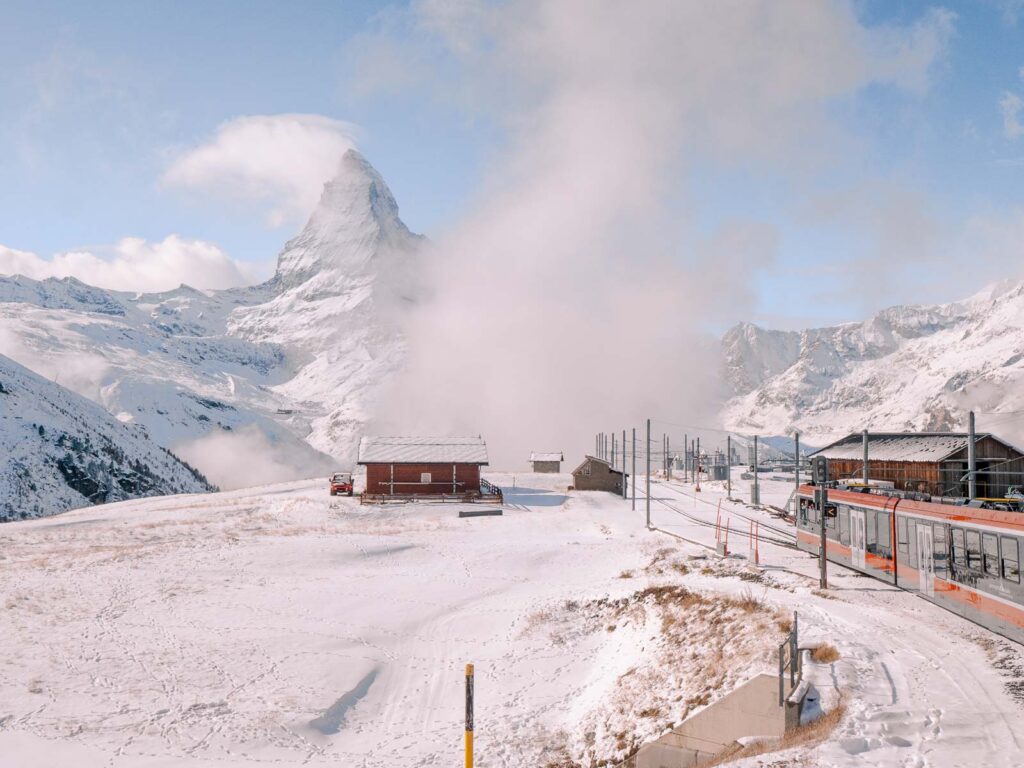
Highlights
- Unmatched views of the Matterhorn on the way up and from the top
- Panoramic vistas encompassing 29 peaks over 4,000 meters
- Numerous hiking trails that start from Gornergrat, ranging from easy walks to challenging treks
- The Gornergrat observatory, one of the oldest in the Alps, offering a glimpse into the stars above
- Stop off at Rotenboden (or walk down from the top) to get to Riffelsee Lake, which reflects the Matterhorn on a clear and still day
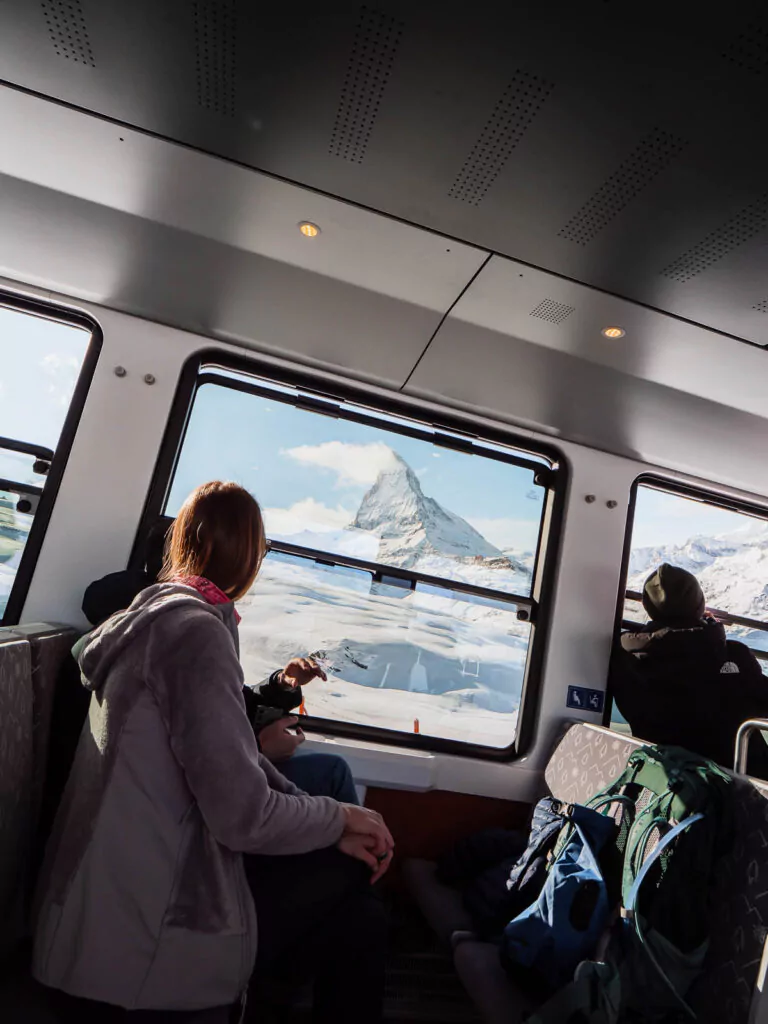
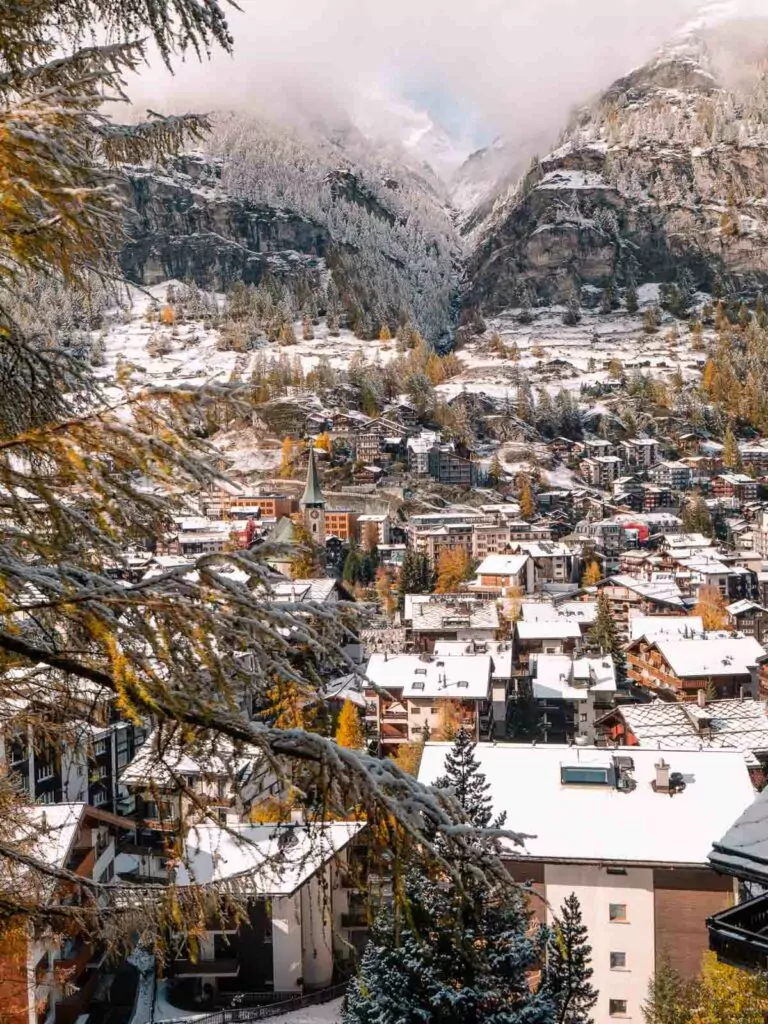
Prices & discounts
Prices depend on the season, here are the 2025 ticket prices for a return trip from Zermatt to Gornergrat and back:
- 96CHF from November to April
- 132CHF from May to October
- You can pay 7CHF for priority boarding to ensure you can get a window seat (worth it!)
And the discounts:
- 50% discount with Swiss Half Fare Card
- 50% discount with Swiss Travel Pass
- No discount with a Eurail or Interrail Pass
- You can get cheaper tickets if you come back from a different station, e.g. catch the train to the top, walk down to one of the lower stations and you’ll get a slightly discounted rate for the return trip
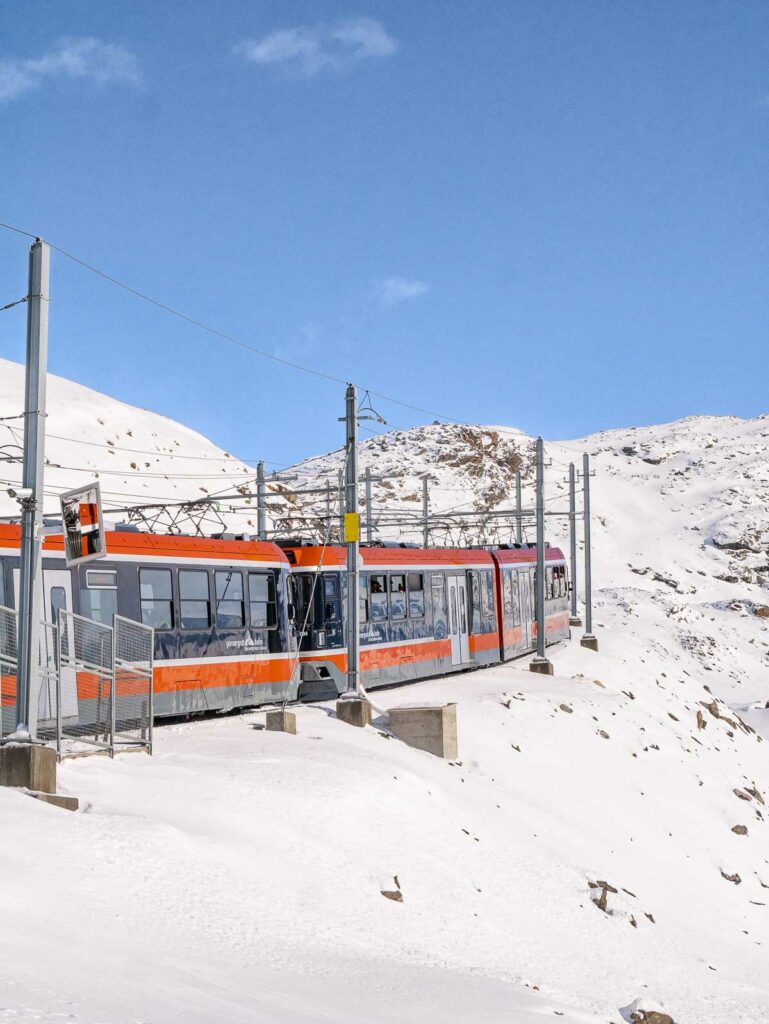
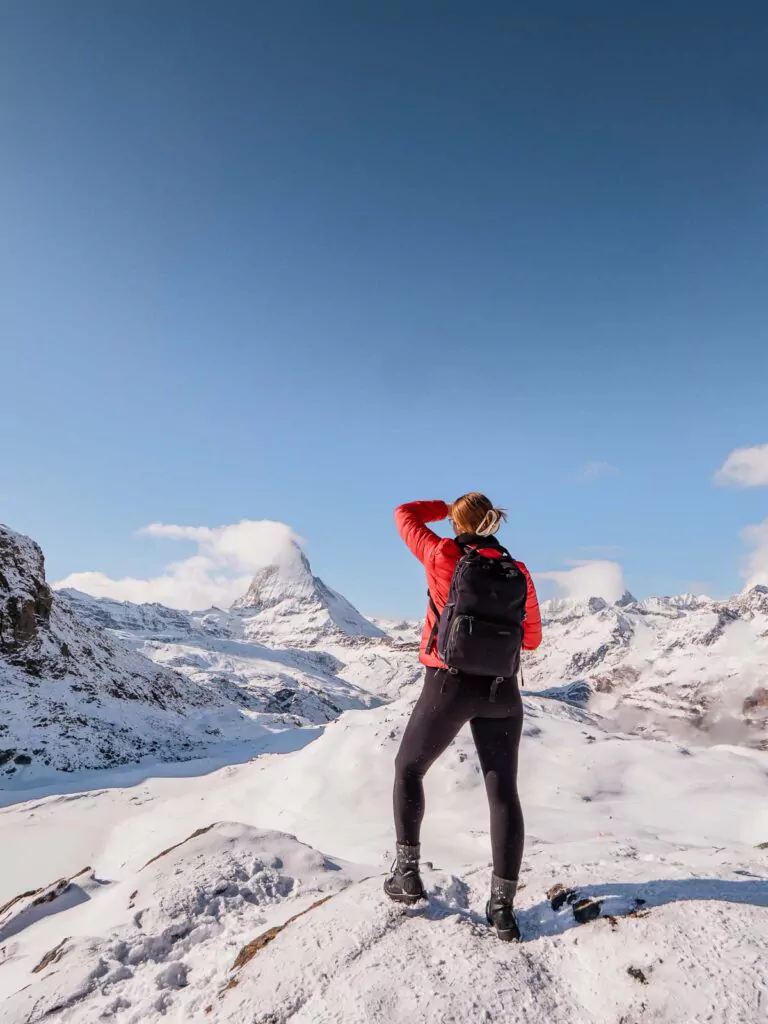
Matterhorn Glacier Paradise
Open year-round
How to get there
An easy combo of cable cars from Zermatt Bergbahnen, which is a 20 min walk from the train station. You can catch a bus or a cheap electric taxi if you don’t want to walk.
There are three cable cars to get up to the top and you need to scan your ticket at each one so make sure you’ve got it handy.
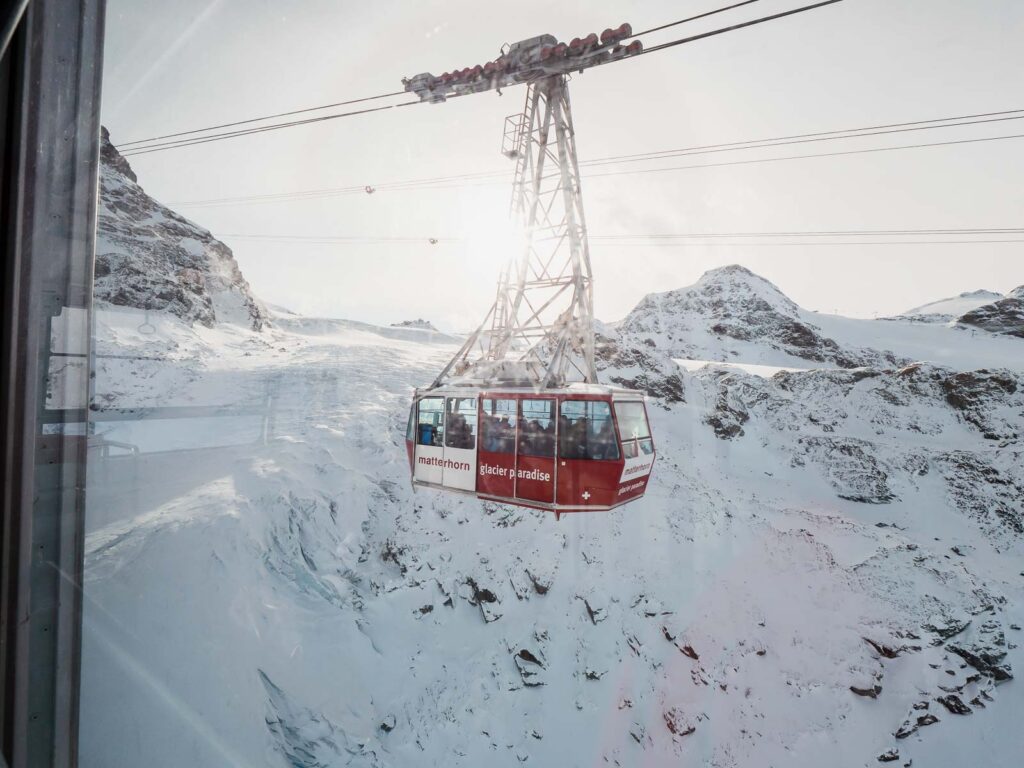
Highlights
- Breathtaking views of the Matterhorn and the surrounding Alps from the highest viewpoint in Europe (3883m!)
- The Glacier Palace, a magical world of ice sculptures and tunnels located 15 meters beneath the glacier surface
- Skiing and snowboarding opportunities year-round on the Theodul Glacier
- The Cinema Lounge, where you can relax and learn about the alpine world through captivating films
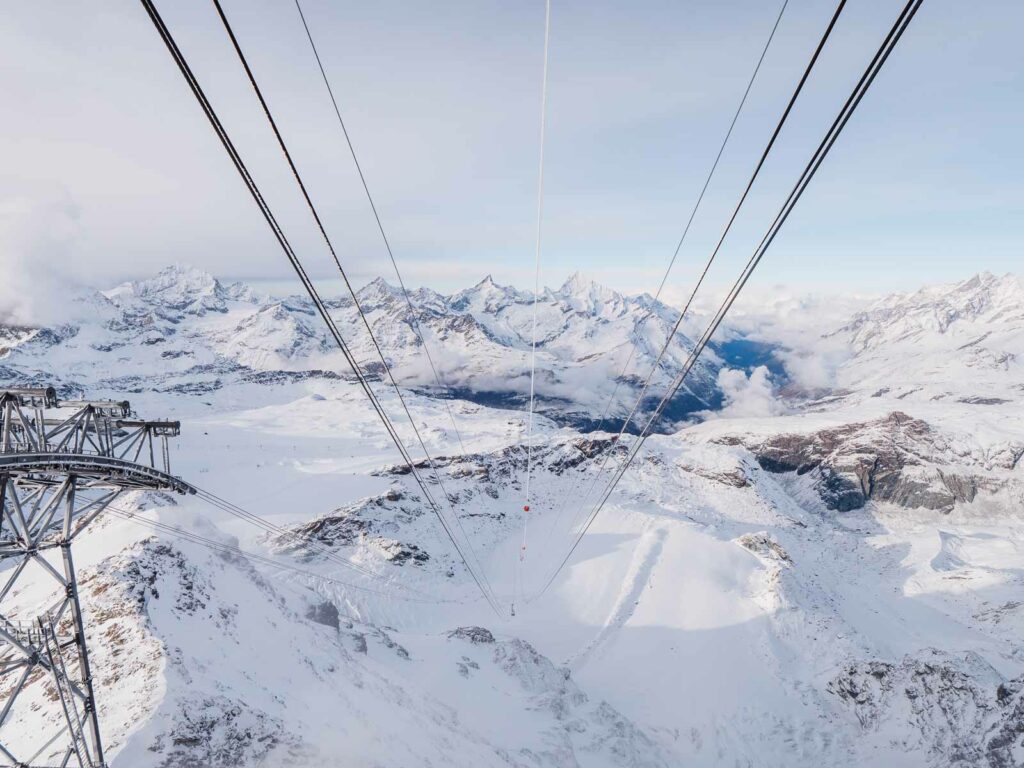
Prices & discounts
Again, prices depend on the season. Here are the current prices for Zermatt to Glacier Paradise return:
- 95CHF from November 2024 to April 2025
- 114CHF in May, June, September & October
- 125CHF in July & August
And discounts:
- 50% discount with Swiss Half Fare Card
- 50% discount with Swiss Travel Pass
- No discount with a Eurail or Interrail Pass
- There are slightly discounted tickets if you go in the afternoon after 1.30pm, these are only bookable on the day and cost 76CHF from November to April, 91CHF in May/June/Sept/Oct, and 100CHF in July/August
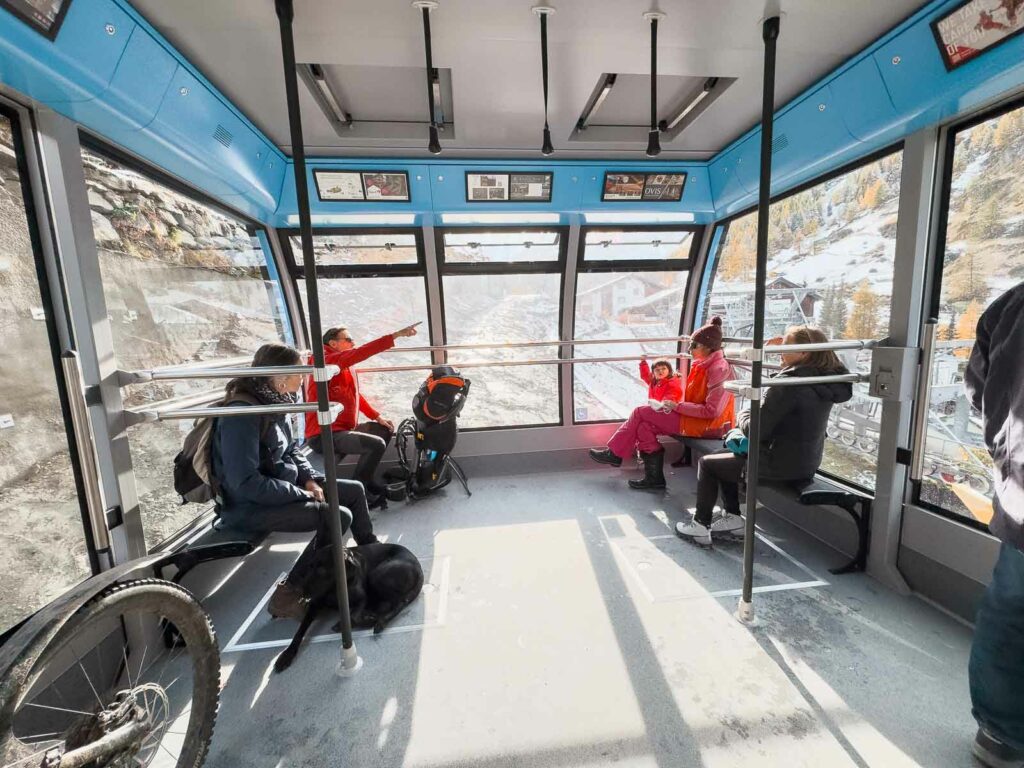
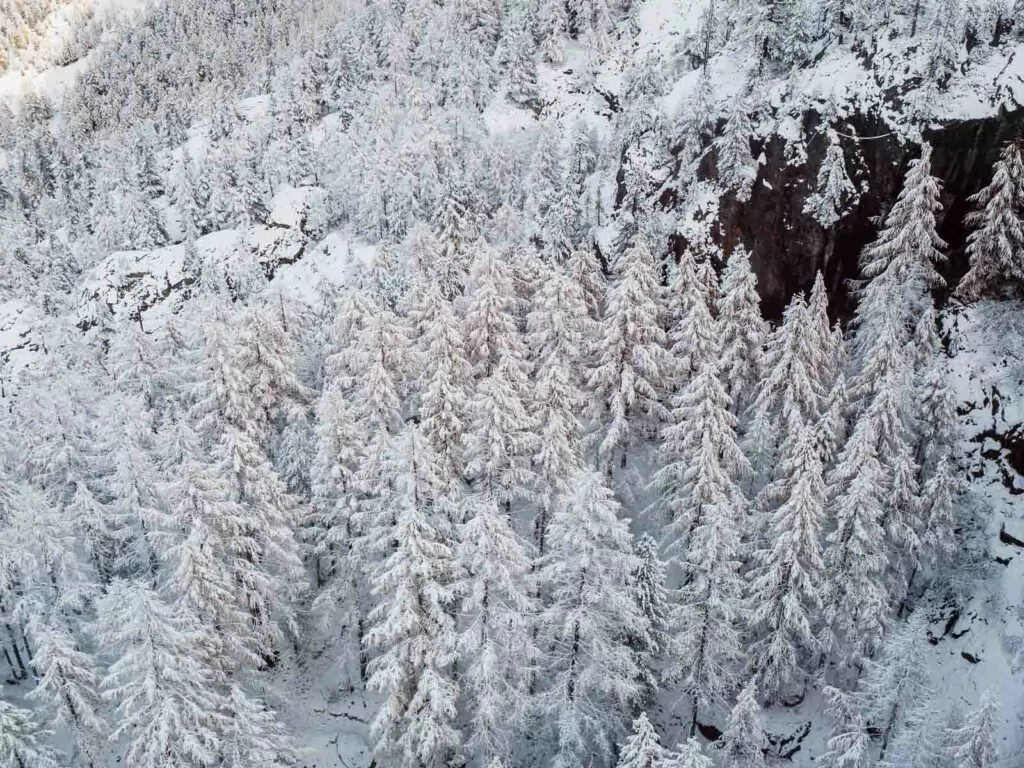
Can you do Gornergrat and Matterhorn Glacier Paradise in one day?
You can do both in one day if you don’t mind rushing.
Which one is better?
I personally prefer Gornergratbahn. The views from the train are unobstructed as you can open the window and take great photos, it’s easy to walk down some of the mountain if you’re there before the snow hits, and Riffelsee Lake is seriously impressive.
Matterhorn Glacier Paradise is similar to Jungfrau in that there’s a lot of info about the mountain, the region and the cable cars, more commercialised than Gornergratbahn. The views are amazing, as you’d expect, but I was frustrated that the cable cars had scratched up, dirty glass and I couldn’t take any decent photos.
It’s also very high, about 800m higher than Gornergrat, and I could feel the altitude on an empty stomach. We got up there pretty late and had to run around to get the photos I needed and let me tell you, I did not feel great after trying to run at 3883m elevation 🙃
If you can afford both and fit them into your Switzerland itinerary then go for both, but if you had to choose one, I think Gornergrat offers better value for time and money.
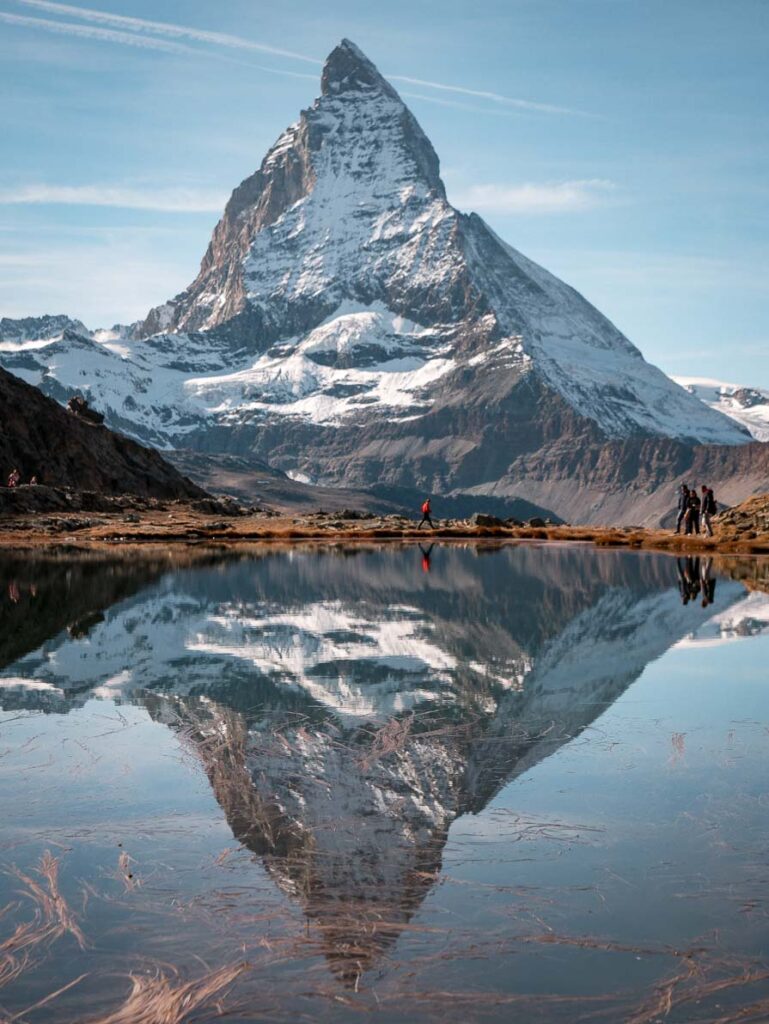
Day 10: Zermatt to Zurich via St Moritz or Chur
Your final stretch! I’ve got a full Glacier Express guide for you with all the info you need to plan an epic journey but here’s a quick run down.
How to get from Zermatt to Zurich
Take the iconic Glacier Express, the slowest express train in the world, over 291 bridges and through 91 tunnels to reach St Moritz. The full journey is just under eight hours all up. From St Moritz it’s a 3h 20m train to get to Zurich, so it would be a long day but totally worth it.
If you don’t want to spend so much time travelling on the final day of this Switzerland itinerary then you could catch the Glacier Express from Zermatt to Chur, that’s about 5.5 hours and it’s a 1h 15m train to get to Zurich.
The Glacier Express ticket is included in the Swiss Travel Pass, Eurail or Interrail Pass but you need to pay for mandatory seat reservations. All the info is explained in my Glacier Express guide.
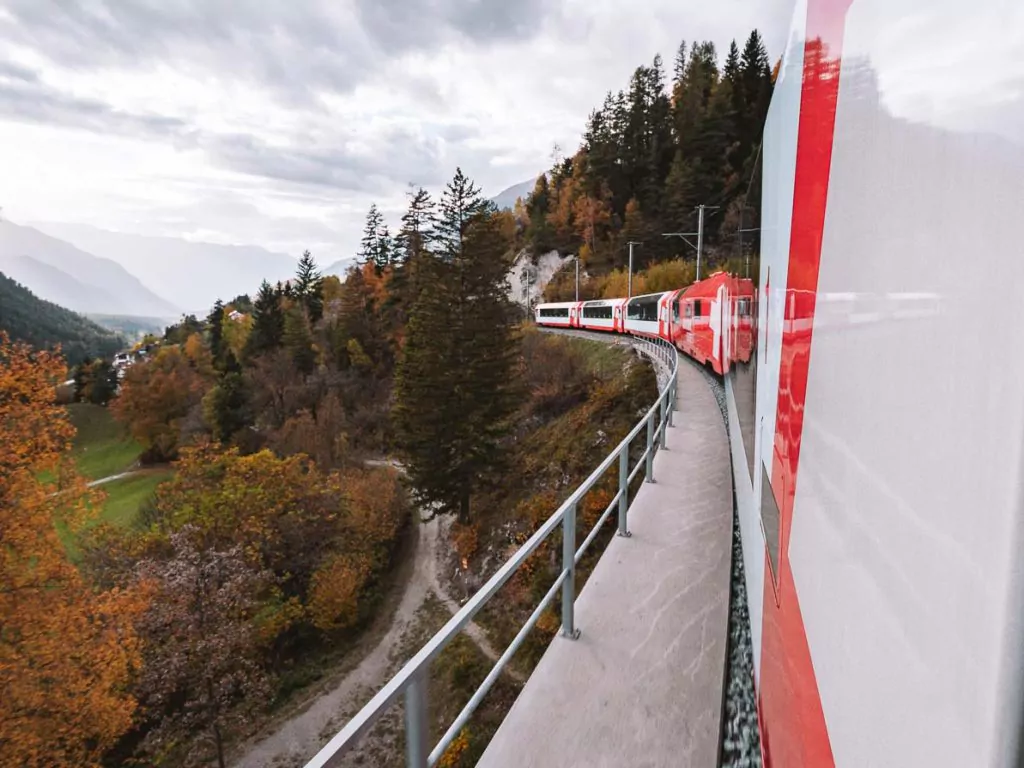
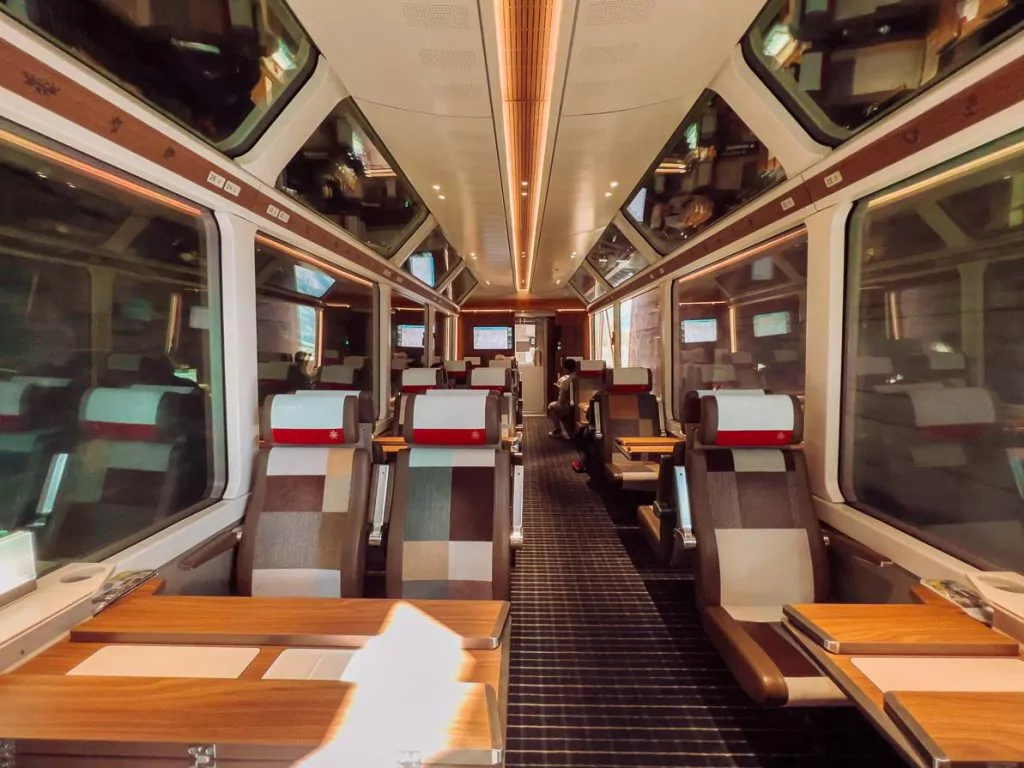
If you have more than 10 days in Switzerland
Add on Basel
Basel is a super cool city, less than an hour from Zurich by train and an easy stop if you’re arriving in Switzerland via train from Paris.
SILO Hostel is my favourite place to stay, a modern design hostel with stylish dorms, spacious private rooms and a fab cafe serving up a brilliant breakfast.
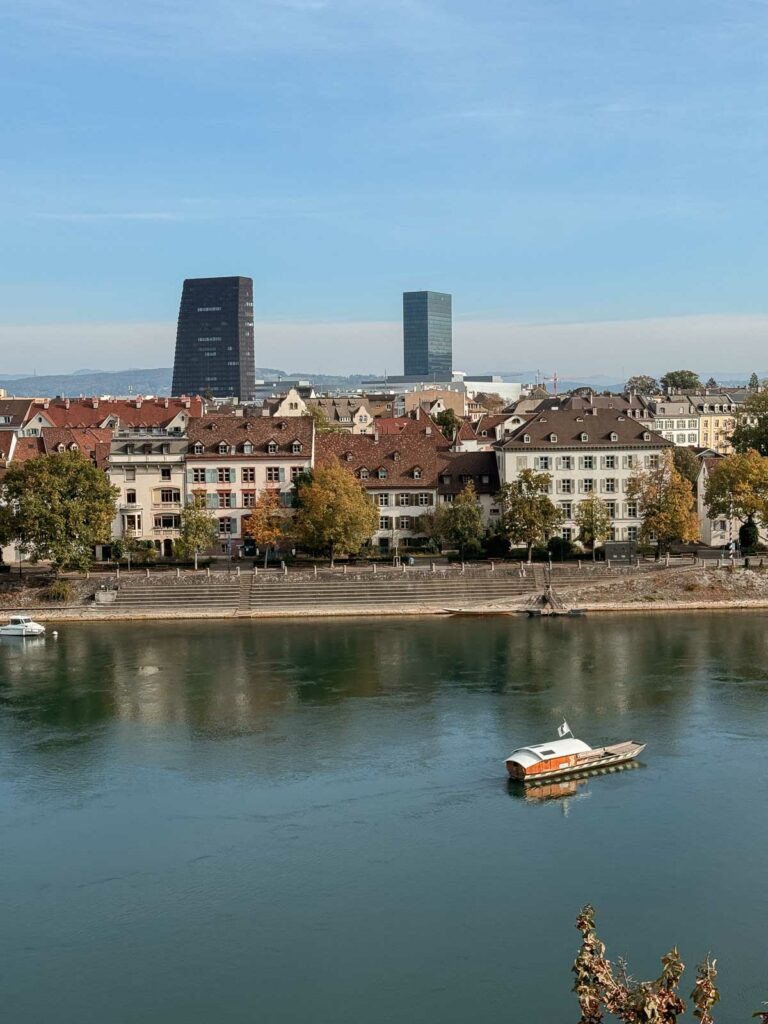
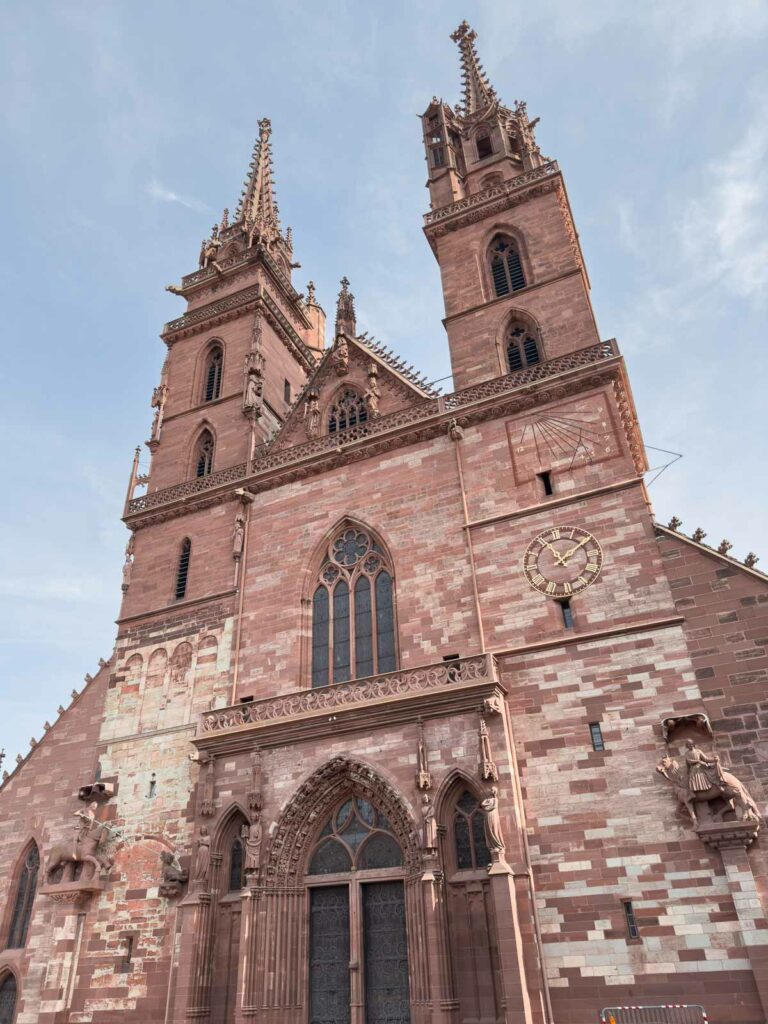
My top recommendations of things to do are:
- Explore the Old Town, with its narrow streets, medieval buildings, and vibrant market squares like Marktplatz
- Visit the Basel Münster, a stunning Gothic cathedral with impressive views from the Pfalz (the terrace)
- Check out the Kunstmuseum, Switzerland’s oldest public art collection, boasting works from the Middle Ages to contemporary pieces
- Stroll along the Rhine River, especially beautiful in the evening
- Relax in the Botanical Gardens, a peaceful oasis in the city center with a diverse range of plant life
- Experience the vibrant atmosphere of Kleinbasel, known for its multicultural eateries and nightlife
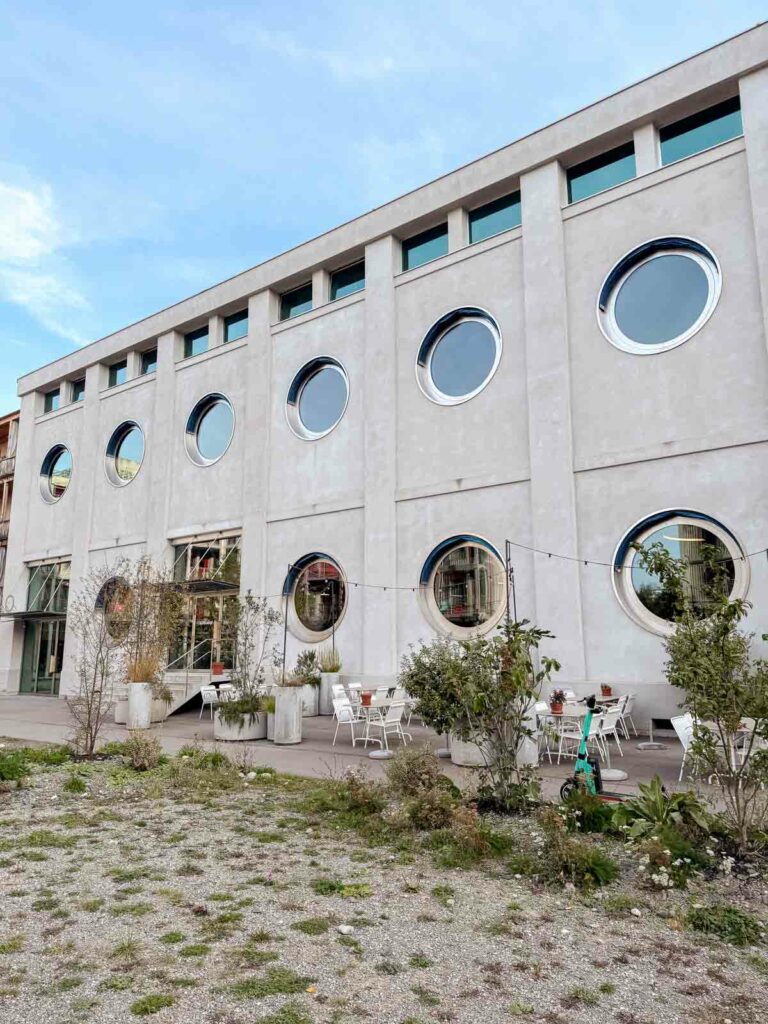
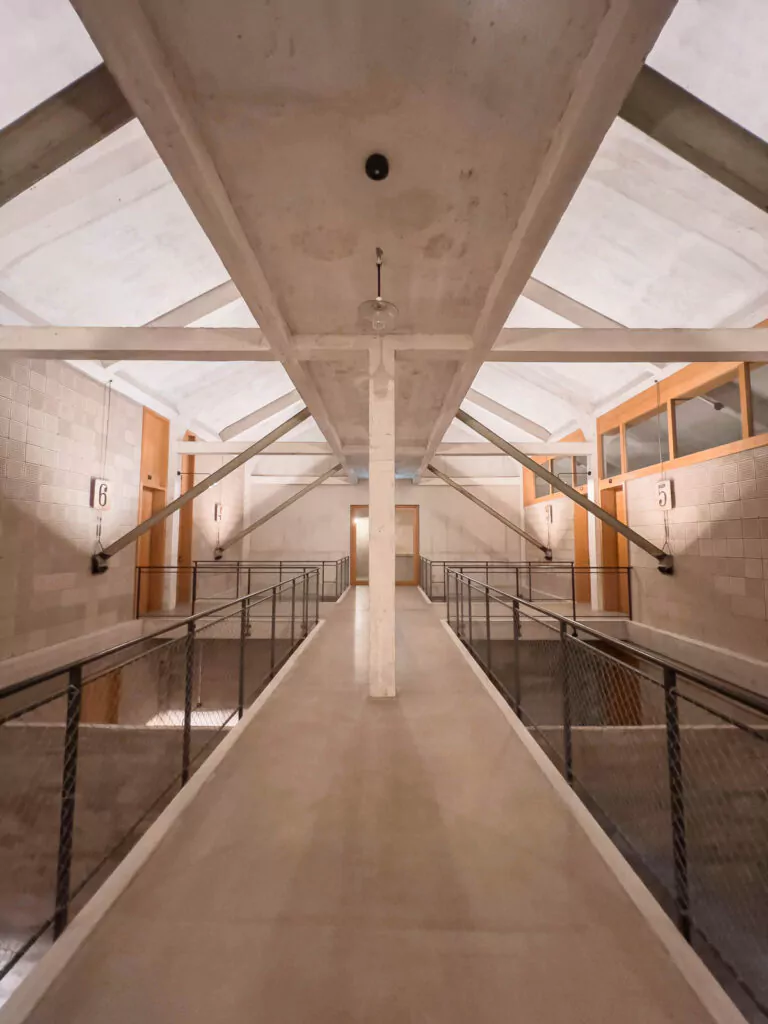
Add on the Bernina Express
The Bernina Express is first-equal on my list of Switzerland’s best train journeys, along with the Glacier Express, and if you have more than ten days in Switzerland it’s probably my top choice for how to extend your trip.
The Bernina runs from St Moritz or Chur to Tirano in northern Italy, so it’s an easy add on after day 10 of this itinerary. After your arrival in Tirano you could catch the Bernina Express shuttle bus to Lugano and then train back to Zurich, or continue on to Milan instead and see some of Italy too.
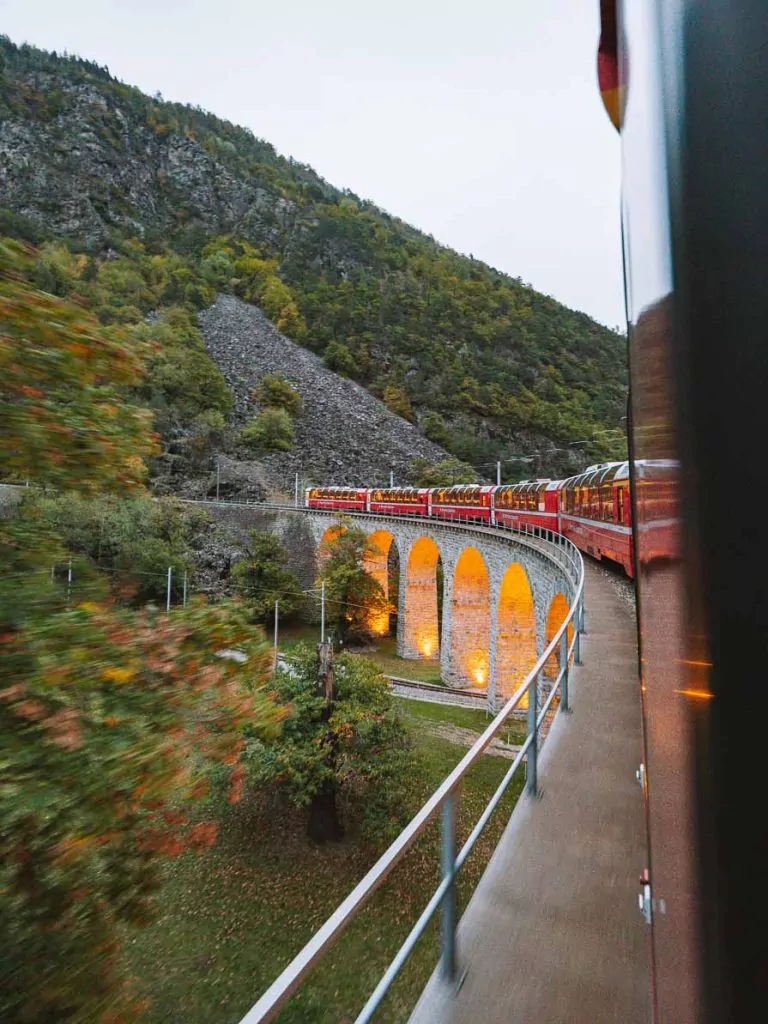
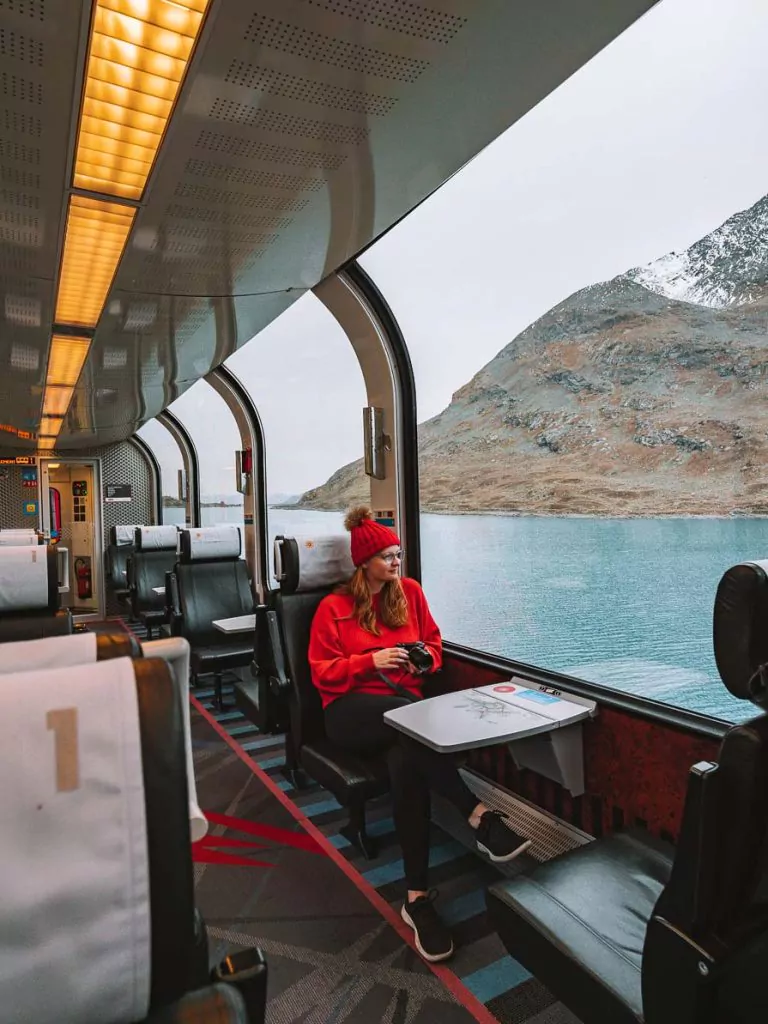
Spend more time in the Lucerne and/or Jungfrau region
This ten day Switzerland itinerary is pretty fast-moving and doesn’t leave a huge amount of time to experience all the mountains.
If you have more than 10 days you could spend extra time in Lucerne, the Jungfrau region (Grindelwald or Interlaken), or both. Spend those additional days visiting more of the mountains, or just take it easy and give yourself some rest days.
👉🏼 Read more: A detailed review of the Lake Lucerne Tell Pass

Do the full Grand Train Tour
The Grand Train Tour is an incredible 1280km journey through the best of Switzerland, combining five premium panorama trains with a couple of connecting transportation options to make it a simple round trip itinerary.
You could squeeze it into ten days if you wanted to but you wouldn’t have much downtime in the places you visit, you’d be able to enjoy it more and see sights beyond the train views if you could give it 12-15 days.

If you have less than 10 days in Switzerland
Cut the Grindelwald/Interlaken portion down
This itinerary includes two nights in Grindelwald and two nights in Interlaken, if you’re short on time you could cut this to two days in total and just choose a couple of activities.
An easy two day itinerary could be:
- Jungfrau day trip with a stop in Grindelwald for some food
- Lauterbrunnen, Harder Kulm and a lake cruise
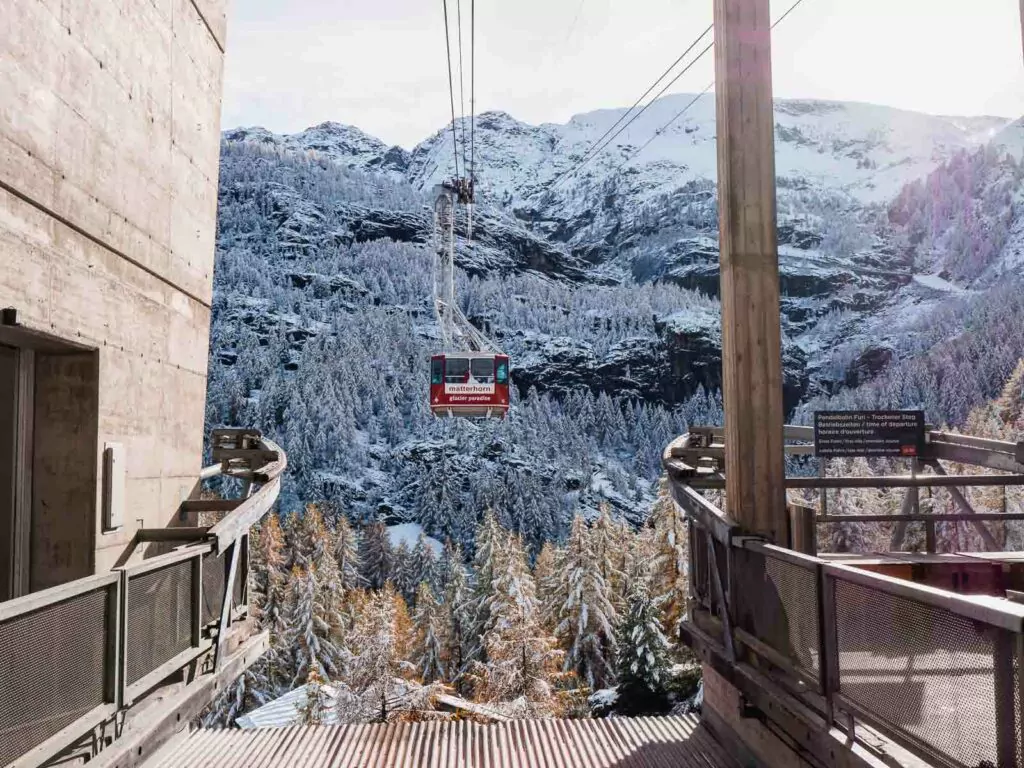
Skip the cities and focus on mountains
If you’re more of an outdoorsy traveller rather than someone who loves big cities, you might want to cut Zurich completely and head straight to Lucerne to be closer to the mountains.
Skip the mountains and focus on cities
If you’re not so fussed on the outdoor adventures, you could instead focus on the cities and their charm. Three days in Zurich and then a couple of days each in Lucerne, Basel and Geneva will have more than enough museums, galleries, old towns and churches to fill your ten days in Switzerland.
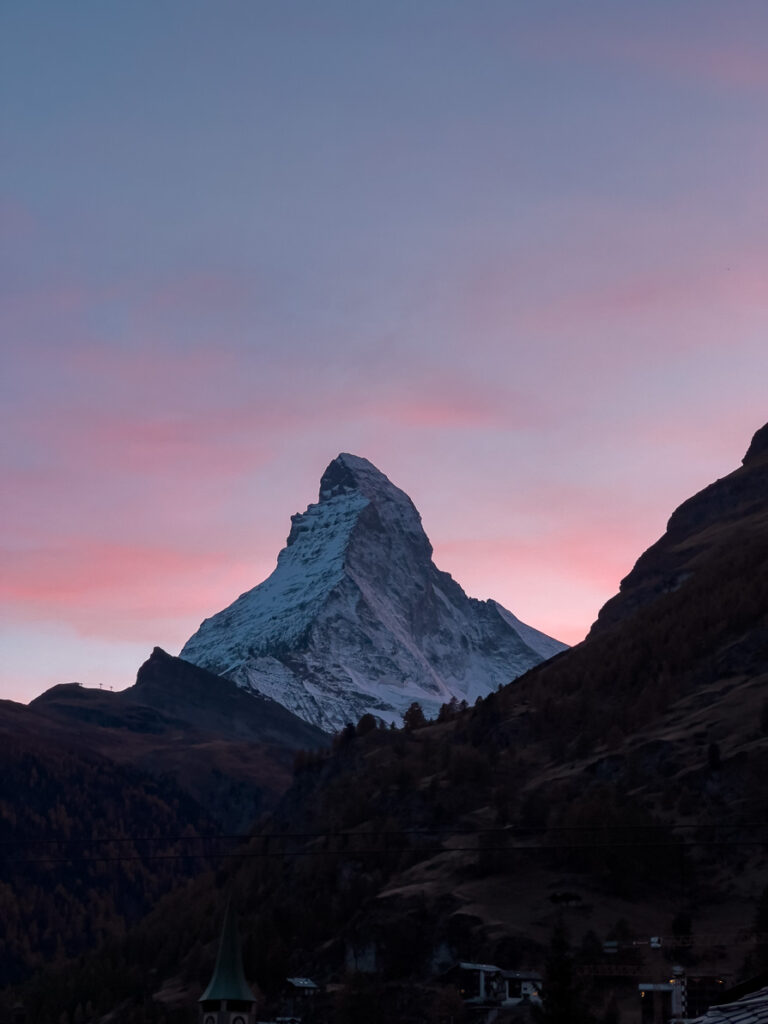
Switzerland itinerary FAQs
Is Switzerland safe?
Switzerland is one of the safest countries in the world in terms of crime rates. As always you should take precautions like keeping your valuables somewhere secure and avoiding any late night walks in the dark, but the risk of being a victim of any crime, petty or violent, is extremely low.
The biggest safety concern in Switzerland is the environment, with unforgiving alpine weather that can change in an instant, and an outdoor playground of hikes ranging from simple to very technical. Know your limits when you’re planning adventures, take extra layers in case the weather turns, and always let someone know where you’re going and when you expect to be back.
Is Switzerland safe for solo female travellers?
I felt very safe in Switzerland as a solo female traveller on all my trips, I even left my wallet on a bus (with multiple credit cards 🫠) and it sat there for an entire day before the bus driver found it and detoured from her route to deliver it to my hostel. I was about to go retrace my 20,000 step hike the day before to see if I could spot it!
Switzerland’s public transport system is super reliable even at night so there’s always a safe transport option for women in cities, harassment is rare, violent crime against women is very low.
What is Switzerland like for WOC?
But in saying that, safety and comfort are two different things, and unfortunately I have heard that Switzerland can be uncomfortable for women of colour. I can’t speak to this but I got some feedback from Debbie (World Scenic Travels) who said:
“A country with so much beauty to offer, I gained so much from my scenic routes and breathtaking views. However, I couldn’t say the same about some people. Like any travels, there will be the good and bad. But don’t let this small piece of unpleasant experience deter you from going for smaller suburbs or out-of-town experiences. If you’re looking to skip tourists spots and common places, it’s not a bad idea if you know the local languages (some parts it’s Swiss-German, other parts vary). Because I am an Asian, I just generally stand out like a sore thumb. The locals were unpleasant, and not helpful when you asked for directions or any questions. They will stare at you judgmentally like you shouldn’t be there. You will be ignored in any way possible even if you attempt to speak to them nicely in English. I’m not sure what I did wrong. Otherwise, it’s a lovely place to be.”
What is Switzerland like in terms of LGBTQ+?
Switzerland is generally safe and accepting of the LGB community, particularly in urban areas where you’ll find Pride celebrations and gay-friendly bars and clubs. In rural and alpine areas local attitudes might be more traditional and conservative, but hostility or harassment is rare.
Unfortunately Switzerland has a long way to go in terms of transgender+ rights and legal protections from discrimination, but this is more of an issue for people living there rather than visitors. While local views towards trans people might be less progressive than some other European countries, Swiss culture has a strong ‘mind-your-own-business’ trait so trans visitors are unlikely to face outward confrontation.
Do I need cash for Switzerland?
Cards are accepted pretty much everywhere in Switzerland, I think I’ve seen Swiss Francs in the flesh just once in all my trips! They’re super bright and look like Monopoly money 💸
It doesn’t hurt to get a little bit of local currency out and keep it somewhere safe for an emergency, just in case you leave your wallet on a bus and have no way to pay for your dinner or accommodation or something 🙃
What train pass should I get for Switzerland?
It completely depends on your itinerary, but I have a Swiss Travel Pass vs Half Fare Card guide to help you figure it out.
How many days should I spend in Switzerland?
5-7 days minimum to see the major highlights like Lucerne, Interlaken and Lauterbrunnen, but 10+ days lets you explore beyond the typical whirlwind Switzerland trip or take it at a slower pace.
Is Switzerland a good destination for kids?
Switzerland is fantastic for family travel, with lots of kid-friendly attractions, safe and easy hikes, interactive museums and free public transport for children with the Swiss Family Card when you have a Swiss Travel Pass or Swiss Half Fare Card.
Do they speak English in Switzerland?
English is widely spoken in urban centres and tourist areas in Switzerland, I’ve never had any trouble with language barriers. The official languages of the country as German, French, Italian and Romansch, and many locals are multilingual with basic English skills at the very least. In remote alpine areas you might need to use Google Translate or practice your high school German!
Another destination, another gigantic itinerary for you! I hope this super detailed 10 day Switzerland itinerary has helped you plan out your movements in Switzerland.
If you have any questions then please feel free to leave me a comment below and I’ll get back to you as soon as I can.
MORE SWITZERLAND TRAVEL INSPIRATION:
- How to spend 5 days in Switzerland
- 33 Instagrammable places in Switzerland
- Rigi vs Pilatus vs Titlis vs Stanserhorn: Which one to visit?
- The cheapest place to ski in Switzerland: Liddes Ski Hostel
- 10 reasons to try co-living in Switzerland
- The ultimate Northern Italy & Switzerland itinerary
MORE SWITZERLAND TRAIN GUIDES:
- Swiss Travel Pass vs Half Fare Card: Which one is best?
- The ultimate Swiss Travel Pass guide
- The ultimate Swiss Half Fare Card guide
- Is the Glacier Express worth it?
- Is the Bernina Express worth it?
- Bernina Express vs Glacier Express: Which one should you choose?
- Is the Jungfrau Travel Pass worth it?
- Is the Tell Pass worth it?
MORE EUROPE TRAVEL INSPIRATION:
- The perfect three month Europe itinerary (super detailed!)
- The perfect two month Europe itinerary
- A Europe Christmas market itinerary by train
- The most beautiful train rides in Europe
- 27 Europe holiday ideas to inspire you
- How to use a Eurail Pass
- Is a Eurail Pass worth it?
- The ultimate Italy bucket list
MORE SWITZERLAND TRAVEL INSPIRATION:
- How to spend 1, 2 or 3 weeks in Northern Italy & Switzerland
- 5 days in Switzerland itinerary
- 33 most beautiful places in Switzerland
- Rigi vs Titlus vs Pilatus vs Stanserhorn: Which one to visit?
- The cheapest place to ski in Switzerland: Liddes Ski Hostel
- 10 reasons to try co-living in Switzerland
MORE SWITZERLAND TRAIN GUIDES:
- The ultimate Swiss Travel Pass guide
- The ultimate Swiss Half Fare Card guide
- Is the Glacier Express worth it?
- Is the Bernina Express worth it?
- Bernina Express vs Glacier Express: Which one should you choose?
- Is the Jungfrau Travel Pass worth it?
- Is the Tell Pass worth it?
MORE NO-FLY EUROPE ITINERARIES:
- How to spend two weeks in Poland
- How to spend two weeks in the Balkans
- How to spend two weeks in Albania
- The ultimate two month Europe itinerary
- The ultimate three month Europe itinerary (super comprehensive!)
- How to see Puglia without a car
- How to see the Dolomites without a car
MY GO-TO TRAVEL PLANNING RESOURCES
Flights ✈️ I use Skyscanner to find the best flights for my trip and then I’ll always book direct with the airline to protect myself from having to deal with dodgy third parties if anything goes wrong.
Trains 🚂 If I’m travelling through Europe, I try to travel by train wherever possible! For an extended trip (2+ weeks) I’ll calculate if a Eurail Pass is worth it, or I’ll book point-to-point tickets through RailEurope or the local train operator.
Accommodation 🛎️ I book almost all of my accommodation through booking.com, they have a user-friendly website + app and many of their options are free cancellation, easily cancelled with a simple click of a button.
Activities 🗽I use GetYourGuide, Klook and Viator to look for activities in the places I visit, or I just Google ‘things to do in [city]’! P.S. If you book anything on Klook you can use the promocode FINDINGALEXXKLOOK to get 10% off
Travel cards 💳 I’m a Wise gal through and through, they’ve been my chosen travel card for more than five years now. You can easily top up your card from your bank account or through Apple Pay, convert your money to local currency, and spend money with minimal fees and the best exchange rates around.
Travel insurance 🩺 I use Cover-More NZ travel insurance for my own trips, I have a comprehensive policy and I’ve only had good experiences with them. Cover-More also has an Australian company, but if you’re from elsewhere then two popular insurance options for global travellers are SafetyWing (cheaper policy, lower coverage) and World Nomads (more expensive but significantly better coverage).
Luggage 💼 I travel with Samsonite Cosmolite suitcases, one 75cm check in bag and a 55cm carry on bag, and I absolutely adore them and will never travel with anything else! They are SUPER lightweight (2.8kg and 1.9kg respectively) so I have much more space for my actual stuff.
Camera gear 📸 I use a iPhone 15 Pro Max for phone photos/videos, and my camera kit includes a Lumix S9 (incredible lightweight full-frame camera, a game changer for travel creators!) with a 20-60mm lens, a Lumix G9 with an 8-18mm and 12-60mm lens, a DJI Mini 3 Pro drone and a GoPro Hero 10. I do all my writing and editing on my ASUS Zenbook 14, it’s lightweight but powerful enough for photo editing and intense blogging sessions.

Hi again! We will be spending 2 nights in Bern before heading to 4 nights in Lauterbrunnen. Any recs for Bern? (Travelling with our 20 year old daughter.) Also what are your must dos for Lauterbrunnen area? We love to hike (moderate) but also like to eat good food and build in some relaxation:) And based on your recommendations, we will buy the 1/2 fare pass thru you! Thanks Alexx!
Sorry, I wanted to amend my other comment. For the 5 days in Lauterbrunnun, We already plan on doing the Via Ferrata from Murren on one day, and are not interested in going to the Top Of Europe. There are so many other options that my head is swimming. We definitely want to be active, not just riding the cable cars, and also appreciate some down time. Thx!
Hey Tami, I haven’t been to Bern unfortunately so can’t share any recommendations for there, for Lauterbrunnen I’ve got some recommendations in this blog post: https://findingalexx.com/5-day-switzerland-itinerary/#Day_two_Lauterbrunnen_day_trip
Hi, I am from Toronto, Canada and planning to go to Switzerland on my 25th anniversary together with my wife in second week of February 2025. Is your itinerary good for winter month or should I need to consider something differently. We are both non-skier but love to see nature.
Hey Sanjib 🙂 This itinerary can be followed in winter for sure, in February you’ll probably have snow in the alpine towns which will be beautiful! Some mountain excursions might be closed though or might have alternative winter activities available so you’ll need to check those if there are any you are particularly keen on.
Thanks for your quick response!
Hello , I am Manish from Bengaluru , India .. and travelling Swiss for 8 days in Spt…. have planned 4 days in Interlanken ,.,, so 1 day Jungruchue , 1 day – grindalwarld , 1 day local Interlanken & Lauterburen .. what can be done on 4th day ? – some one suggested Glacier 3000 – worth ?
Hey Manish! I have a bunch of suggestions for Interlaken in the blog post above, scroll up to ‘Day 6’ and you’ll see them all 🙂
We need to meet friends on day 8 and 9 in Murren and lucerne….any ideas how to change your schedule to do that?
Hi Doreen, do you mean Murren on the 8th and Lucerne on the 9th? They’re pretty far apart from each other. If you only have ten days then you could do the itinerary up to day 8 and just skip Zermatt and head back to Zurich via Lucerne instead.
Firstly, I found your information very helpful, and Im now in the process of booking a trip in July.
Im very confussed, (it doesnt take much.) We will be driving to Zermatt catching the glacier express in excellence class. then training back to zurich the following day. What would be the cheapest way for us to get tickets for the glacier express. And how do you go about buying the swiss half card or the swiss travel card.
Hey Natalie 🙂 Haha the Swiss travel system can be a bit confusing, it takes time to figure out!
Are you only catching two trains, the Glacier Express and then St Moritz to Zurich the next day? If so, then you have three options:
1) Swiss Travel Pass. Probably not worth it, it would be 389CHF for the shortest pass (3 days) in first class, this would save you 272CHF on the Glacier Express ticket, so it would only be worth it if the St Moritz to Zurich ticket was 117CHF or more (unlikely if you’re booking in advance).
2) Swiss Half Fare card, 120CHF for one month and this would save you 136CHF on the Glacier Express ticket + half of the train to Zurich, so it’s already worth it.
3) Saver Day Pass, this is essentially a 1 day Swiss Travel Pass, prices depend on demand so if you book well in advance they can be pretty cheap. You’d need a 1st class Saver Day Pass and this would cover your Glacier Express ticket cost (272CHF) and then you could buy another one for St Moritz to Zurich, or just book that separately if it’s cheaper.
Have you already made your reservation for Excellence Class? It is very expensive, 490CHF per person on top of the ticket price, and they do book out very far in advance so be sure to lock in your travel date ASAP.
Hi Alexx. Thanks for the terrific info in your blog. I have spent a lot of time in Geneva over the years as a base for riding the French Alpes. As part of that we have visited most of the places you describe in Switzerland. But we have not linked a train itinerary in the way you describe and we now want to do that. My question is if we took an 8 day travel pass could we still do the extended itinerary you suggest adding on the Lugano to St Moritz leg. And does your itinerary include, or could it, the Luzern lake and train trip to Lugano? Our start and finish point is Geneva. And thanks also for the promo code to get an even better price on the travel pass. Rob
Hi Rob 🙂 Glad it has been helpful! I’m not quite understanding your question sorry, are you asking if the 8 day pass is enough for the itinerary you have planned? If you follow my exact itinerary with the mountain excursions I mentioned in the ‘best travel pass’ section then the Half Fare Card is your best option, that covers a month of travel so no need to worry about travel days.
If you want to go for a Swiss Travel Pass then you could use it to follow this itinerary, and just not use the pass on day 1 (Zurich) or day 7 (Interlaken), or whatever other days you aren’t taking any expensive trips.
You could include the Lucerne-Lugano journey, I just didn’t include it because it had closed for the season when I was there. It’s on my list though!
Olá Alexx, espero que tenha tido boas festas. Estou viajando de 02 de maio a 12 de maio pela Suíça e chego em Zurique às 12h30 do dia 02 e saio às 18h05 do dia 12 de maio. Qual seria a sua sugestão de viagem (noites e hotéis), passando por Lucerna, Interlaken, Berna, Basileia e Zurique. Eu tenho o Swiss Pass Card, qual o melhor Travel Card para usar neste percurso. Seriam 10 noites e 11 dias. Se puder dar dicas dos trens de segunda categoria que seriam indicados para esse percurso me ajudaria. Muito obrigado.
Hello! For customised itineraries I offer travel consultations, you can email me at [email protected] and I can send through all the details 🙂
Thank you for this post. I am heading to Switzerland in June for 12 days. I was thinking of doing the following:
From Zurich Airport heading straight to Lucerne for a 3 days.
Train to Grindelwald are for 4 days.
Train to Zermatt for a 3 days
Train to Zurich for 2 days
Fly home out of Zurich.
I didnt want to be staying over and spend so much time travelling to too many hotels. I had wanted to keep it to 3 hotels total. Do you think 4 hotels (Lucerne, Grindelwald, Zermatt and Zurich) will be too busy? Should I be cutting one out or should it be fine? I just don’t want to waste time packing and lugging my suitcase.
Based on my itinerary above, I was thinking the Swiss Travel Pass would be best. Do you agree?
Thanks,
Eryn
Hey Eryn! I think four hotels over 12 days is fine, Switzerland is so well-connected that transit days to get from A to B are much less stressful than in most European countries haha. I can’t tell you whether the Swiss Travel Pass would be best without knowing what mountain excursions you’re planning on doing but I have a full blog post on that with instructions on how to calculate as well as example itinerary breakdowns: https://findingalexx.com/swiss-travel-pass-vs-half-fare-card/
Alright, great 10 days in Switzerland. Would have been even more perfect, with a stay in the Bernese highlands. The lake Thun there is a must-see.
Would love more detailed info on the trip you traveled. Would like to add 2 or 3 days to that.
This blog post is 11,723 words haha I’m not sure how much more detailed it could be! What specific info are you looking for?
Your point about the “spiderweb of train connections” is spot on. While the Swiss travel system is incredibly efficient, navigating it with luggage after a long flight can be the most stressful part of the trip. That’s why your tip about efficient transportation is key.
For anyone using this amazing itinerary and flying into Geneva, I highly recommend pre-booking a Geneva limousine service for your airport transfer.
There’s no better way to start this epic 10-day journey than with a smooth, comfortable, and stress-free ride directly to your first hotel. It lets you hit the ground running, already relaxed and ready to enjoy that first stunning Lucerne lake view.